Posted by Powee Celdran
DISCLAIMER: Although this is mostly a work of fiction, it is largely based on true events and characters. It seeks to alter the course of actual events that transpired in the 8th and 9th centuries AD. This story will begin with events that happened in real history but will become fictional as it progresses.
Previous Story: Byzantine Alternate History Chapter V- 8th Century
“But of Salic land no portion of the inheritance shall come to a woman: but the whole inheritance of the land shall come to the male sex.” -Salic Law
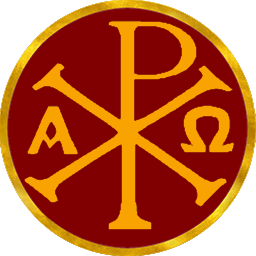
Welcome to the 6th chapter of the Byzantine Alternate History series by the Byzantium Blogger! Last time, in chapter V of this 12-part series, I went over the Byzantine Dark Ages in the 8th century, the chaos and anarchy, the dystopian-like situation the Byzantine Empire, and the controversy of Iconoclasm or the breaking of icons that may have seemed like a simple issue but at the end caused so much tensions in the empire especially in its long-term relations with the western world, particularly the Church of Rome. The last chapter had also mentioned an event that could have ended the controversial Byzantine Iconoclasm before it could get worse and totally ruin Byzantium’s relations with the west and Church unity as a whole, and this event that could have changed it was if the emperor Artavasdos who only reigned a year (742-743) stayed in power longer rather than losing and being blinded by Constantine V (r. 741-775), who returned to power and continued Iconoclasm to an even higher level purging all those who believed in icons and worked to restore them. However, since the stories in this series despite being in chronological form with one chapter per century, their alternate history scenarios are not continuous with each other, so this means that for this chapter, the events of real history would play out whereas the Iconoclast extremist Constantine V would stay in power and not fall off a castle wall like in the previous chapter. This story then continues not so long after the last one left off and will be set at the turn of the 9th century at the tail-end of the Byzantine Dark Ages and the last days of the Iconoclast period, and therefore this will be the last part of the Byzantine dystopian trilogy which began with chapter IV. Now this chapter in this series will be a very special one as we are now at the midpoint of this series, and the thing that will be different about this story compared to the previous ones is that first it will be more of a direct sequel to the previous chapter as the same plot and scenario as well as characters from the last chapter return here except of course for the scenario of Artavasdos defeating Constantine V in the civil war, so basically it will be something not purely a 9th century story but rather an 8th and 9th century crossover alternate history story. Another unique style chapter VI over here will have which the other chapters will not is that its background part will not be a story retelling the past events, but rather already beginning in the main setting in the year 800 while the lead character here Empress Irene Sarantapechaina or Irene of Athens will be the one narrating the events of the past going back to reign of Constantine V where she comes into the picture being chosen as the wife for his son Emperor Leo IV (r. 775-780).
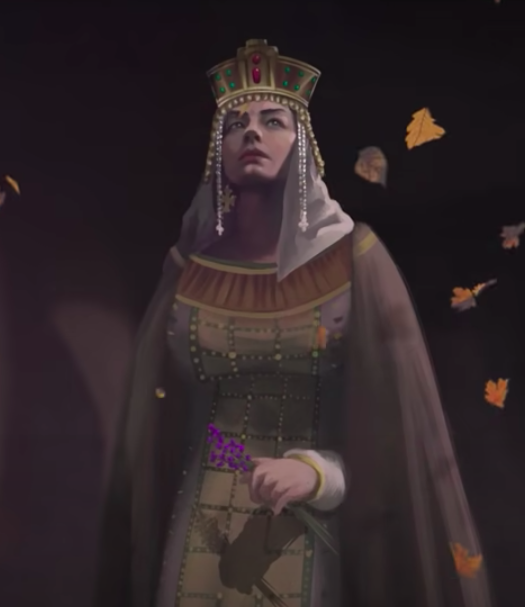
Now Empress Irene was one powerful, ambitious, and even ruthless woman who was basically the one running the empire for 27 years (775-802), first as the empress for her weak-ruling husband Leo IV who being already sickly since birth died too soon, then the empress-regent of the empire for Constantine VI (r. 780-797) who was her son with Leo IV as Constantine VI was never an effective ruler anyway that in 797 he was overthrown and blinded by his mother Irene who then became the sole ruler of the empire, the first woman to rule the Byzantine Empire alone. Irene may have a made a lot of achievements for the Byzantine Empire going from an imperial princess, to empress consort, and also it did not need a large anti-government resistance to end Iconoclasm, instead it only needed Irene as an empress strongly believing in icons to end the pointless issue of Iconoclasm in 787 at the 2nd Council of Nicaea. However, despite her achievements, Irene being a female ruler was not fully secured on her throne as the fact of a woman ruling an empire alone was quite unheard of that it became easy for the nobility to challenge her and in addition, she despite being a strong and decisive ruler was not very good at managing the empire and its economy, getting the whole empire loyal to her, while at same time she ruled an empire that was chaotic, almost bankrupt, and weakened. In Irene’s rule as the sole empress (797-802) and as regent before it (780-797), the Byzantine Empire though was already more stabilized than how it was back at the start of the 8th century where it was still not yet fully stable as the issue of Iconoclasm still split the empire’s population in half, a new Arab power in the east being the Abbasid Caliphate had just begun to pose as a threat to the Byzantines despite the threat of the Arabs by this time being nothing new to Byzantium anymore, to the north the new power of the Bulgarian state or the Bulgars was growing to become more of a threat to the Byzantines, and in the west the ruler of the Frankish Kingdom (France) which was Charles I or Charlemagne (Charles the Great) had rapidly built an empire in such a quick matter of time covering almost all of Western Europe that in the year 800, the pope crowned Charlemagne as a “Roman emperor”, therefore a direct insult and threat to the Byzantines who had always seen themselves as the only Roman Empire and its ruler as the only rightful person to call himself a Roman emperor despite the empire no longer being ruled in Rome or Italy, but from Constantinople. Ever since the year 476 (as mentioned in chapter II of this series) when the Western Roman Empire based in Ravenna fell, the Eastern Roman Empire or the Byzantine Empire was the only Roman power left, but because in the western lands, particularly the Frankish Kingdom, their law known as Salic Law forbade women from ruling and in 800 with the Byzantine Empire ruled by a woman, the western rulers such as Charlemagne did not see her as legitimate, therefore someone like him could challenge her and be crowned as a “Roman emperor” or more specifically an Augustus– not as “Holy Roman emperor” though as many would confuse it- without even seeking the approval of the Byzantines, although the pope also refused to acknowledge the Byzantine Empire as the real Roman Empire but instead Charlemagne’s new Frankish Empire because the issue of Iconoclasm in Byzantium- as mentioned in the previous chapter- had already grown so much to damage the pope’s ties with Byzantium. Now the rise of Charlemagne may be both a threat but also an opportunity to Byzantium as the mere fact of another king being crowned a “Roman emperor” when there is already an existing one being the Byzantine ruler was a heavy blow to the pride of the Byzantine Empire, but at the same time it could have benefited the much weaker Byzantine Empire since its ruler Irene being a widowed woman and Charlemagne being a widower could have married each other, therefore being the magic pill that could reverse all of Byzantium’s previous setbacks, refill its treasury, and unite the east and west again as one massive empire just like the Roman Empire of old before it was permanently split in half in 395, and this new united empire would be known as the “Frankish-Roman Empire“. The marriage between Irene and Charlemagne that almost did happen in 802 could have put what is now France, Italy, and Germany as well as other Western European countries together with the Byzantine Empire then being Greece, Asia Minor, and some of the Balkans as one large super-empire under two rulers of equal power (Charlemagne and Irene) with two capitals (Constantinople in the east and Aachen in the west), and together both rulers with a massive empire and a massive army of the Byzantine Thematic Army and Frankish knights combined could put an end to all of Byzantium’s external threats like the Bulgars, Arabs, and a lot more together but unfortunately, none of this happened as the idea of Byzantium ruled by a foreigner who was seen as a barbarian, which was Charlemagne was shocking to the people of Byzantium and for considering this marriage but also for failing to manage the empire’s economy, Irene had grown increasingly unpopular that with a single conspiracy by the nobility, she was easily ousted from power by a palace coup later in 802 and replaced as emperor by her finance minister Nikephoros I (r. 802-811), while Irene was exiled to the Greek island of Lesbos dying there just a year later. In this story however, the course of history will change when the marriage between Charlemagne and Irene- which would only be for political reasons- does indeed take place as Charlemagne travels to Constantinople and marries Irene before the plot against her is successfully hatched. Of course, if this marriage did indeed happen which in real history did not, then the Byzantine Empire which was here losing its significance would instead just join forces with the rapidly growing Frankish or Carolingian Empire of Charlemagne, though this union of empires which although would be like a magic pill for Byzantium in terms of reversing all the setbacks in its Dark Ages would also be very confusing as the Franks and Byzantines were of two different cultures and government systems, also it would be confusing in religion as the Franks were Catholic Christians and the Byzantines were Orthodox, so it would be confusing which religion the whole empire would fall under, and lastly in terms of succession as Irene’s son Constantine VI by 802 was already blinded and Irene being already 50 could no longer give birth, while Charlemagne though had sons but the issue would be on who rules the east and who rules the west. Now the big question here is, if Charlemagne and Irene married, would this really be the magic pill for Byzantium, or will it only be very confusing for both empires?

Follow me, the Byzantium Blogger on Social Media:
Instagram: @byzantine_time_traveller
Facebook: Byzantine Time Traveller
Youtube: No Budget Films
Twitter: @byzantinetime
Deviantart: Byzantium-blogger55
Art Station: Powee Celdran Porphyrogennetos
Patreon: Byzantine Time Traveller
Note: Since this story is set from the 8th to 9th centuries after the fall of the Western Roman Empire, the Byzantine characters will be now referred to as Byzantines, not Romans.

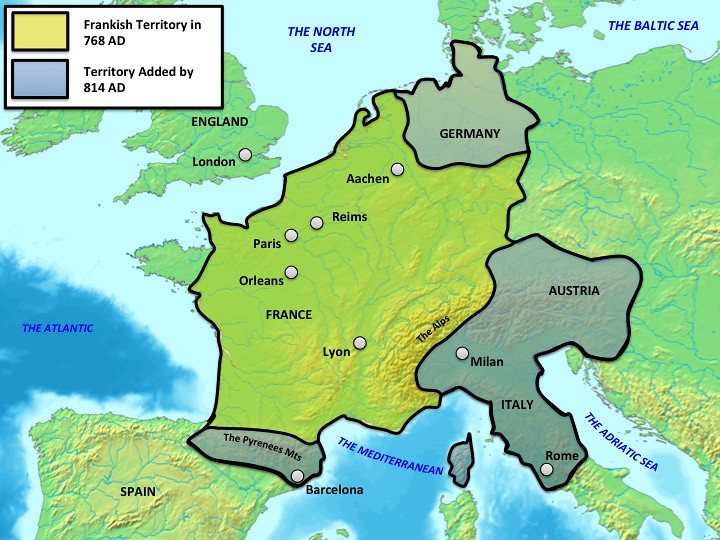

This article is again another work of collaboration and again with Justinianus the Great (follow her on Instagram @justinianusthegreat) who had previously worked with me in creating chapter III of this series on Emperor Justinian I the Great (r. 527-565), making this the second chapter I am putting the story together with her. Now Justinianus being a Byzantine history enthusiast as you remember from chapter III is a great fan of Emperor Justinian I the Great as her username certainly suggests, but on the other hand, she is also a great fan of Empress Irene of Athens who will be the main focus of this story. Justinianus here had also suggested that Justinian being the lead character of chapter III would make a comeback here at chapter VI and true enough, Justinian I will return here in this story 3 centuries later as a ghost occasionally coming here and there giving some advice to Irene on ruling her empire. Where Justinianus’ part comes in is basically in adding in some fictional elements from her imagination in filling in the blanks to creating some more background to Irene’s story and personality as she is its main character, and history itself too does not really record a lot about Irene’s full backstory like about her family and intentions, thus leaving a lot of historians to make guesses about her, although here a lot of the details about Irene’s unknown backstory thought of by Justinianus are actually very smart guesses. For the information used here, I again went through various articles online and went through videos on Byzantine history on this era by channels such as Kings and Generals, Eastern Roman History, Thersites the Historian, and of course the History of Byzantium Podcast by Robin Pierson.
Now before beginning the story, this topic of what if Charlemagne and Irene married is a very popular what if in Byzantine history, and possibly one of the biggest and most popular what ifs in medieval history that has already been covered many times by other alternate history blogs and videos, although this article despite it covering an already popular what if topic will have its own take on it. Since this blog site is about Byzantine history while at the same time to just remind you all that I am not very knowledgeable in the history and society of the Franks the way I am with Byzantium, it will tell the story through the Byzantine perspective, basically from Irene’s and not Charlemagne’s eyes, therefore it will cover a lot more about Byzantium in this time rather than Charlemagne’s Frankish Kingdom and later Frankish Empire in the west. Also, unlike these other videos which cover the long-term effects from this said marriage, this story will only cover its short-term effects for the Byzantine and Frankish Empires limited only to the 9th century. Now Charlemagne or “Charles the Great”, the King of the Franks is an already very famous historical figure, not only in the medieval world but in world history as a whole, so his background does not need to be explained so much in this story, although just to give a quick explanation of who he is, he was the king of the Frankish Kingdom (a predecessor to the Holy Roman Empire as well as to today’s France and Germany) from the Carolingian Dynasty who since coming to power in 768 worked for years to expand his kingdom into a powerful empire by fighting wars against the still Pagan and even Christian barbarians in Europe in order to unite Western Europe and spread Christianity and for his conquests and valor, in 800 he was crowned as “Roman emperor” by the pope.

The one confusing thing here though is that a lot think Charlemagne was the first one that was crowned as “Holy Roman emperor” by the pope and his empire became the Holy Roman Empire, though true enough he was crowned as a “Roman emperor” and his empire would be the foundation for the Holy Roman Empire later on which would begin in 962 with the coronation of Otto I as the first Holy Roman emperor, which is to be discussed in the next chapter. Now having an empire that covered both today’s France (except Brittany) and Germany as well as most of Italy, the Netherlands, Belgium, Switzerland, Austria, Bohemia, parts of Denmark, and some of Northern Spain, Charlemagne would basically be remembered as the “Father of Europe” for uniting most of Western Europe and laying the foundations of what would be Europe’s most powerful countries being France and Germany, and as for laying the foundations of a Western European Empire, his empire would also be remembered as the “First Reich”. As emperor, he was not only remembered for his conquests but for promoting art, culture, and literacy which were heavily inspired by that of Ancient Rome and Byzantium, therefore bringing into Europe what was known as the “Carolingian Renaissance” leading the west out of the Dark Ages. On the other hand, at the same time as Charlemagne was crowned as an emperor by the pope in 800, the now much downsized and battered Byzantine Empire was ruled by a woman which was Empress Irene who of course Charlemagne and the pope did not see as legitimate because not only was she a woman but seen as a usurper as well for deposing her son and had no blood relation to the Isaurian Dynasty that ruled Byzantium, except that she was only married into it. In addition, the previous years where Iconoclasm or the breaking of icons ruled Byzantium and damaged their relations with the pope, the pope in Rome could no longer accept the rule of the Byzantine emperor, and also because the pope in Rome had been threatened by the power of the Lombards of Italy while the Byzantines were too busy with their own problems in the east to focus on Italy that the pope had to turn to the Frankish Kingdom for their assistance against the ambitious Lombards, which later succeeded as the Lombard Kingdom was crushed and annexed into Charlemagne’s Frankish kingdom, therefore making him an ally of the pope. Irene meanwhile was a significant historical figure as not only was she as strong woman figure that ruled an empire by herself and by her own name, but because she put an end to the controversial Iconoclasm which again helped in fixing the schism between the Byzantines and the Western Church, and when later hearing of Charlemagne being crowned as a new emperor challenging her and Byzantium’s authority, she considered marrying him as a diplomatic way to settle all the differences between the west and Byzantium and to unite the empires becoming one Roman Empire again, but this move was too controversial to the Byzantine people that it never succeeded and instead Irene got overthrown. The climax of this story then will be with Irene and Charlemagne actually managing to marry each other and unite their empires despite their differences, and after the climax being the wedding of the century in 802, the story will go on a bit further to see how this marriage will benefit Byzantium especially on how having a united empire in the west would help a lot in military victories against the Arabs and Bulgars as Charlemagne had previously already displayed success in battle against the Lombards, Avars, and Saxons. This story’s main part will then end in the year 811, where in real history the Byzantines under Emperor Nikephoros I suffered a heavy defeat to the Bulgars under their khan Krum at the Battle of Pliska where the emperor himself was killed and his skull turned into a drinking cup, though this story will explore how this battle could play out favorably for the Byzantines if Charlemagne assisted them, so basically this will be a double what if story. As this series also covers one story per century in Byzantine history with this one being the 9th century story, it will be quite odd that its main part is at the very early part of the 9th century, though the proposed marriage of Charlemagne to Irene as well as the Battle of Pliska in 811 are not the only interesting moments of this century as later on in the 9th century, there are a lot more crucial moments in Byzantine history especially with the rule of the Amorian Dynasty (820-867), the beginnings of the Byzantine Renaissance later on and the spread of Orthodox Christianity to the Slavs in the Balkans, but since the what if scenario of Charlemagne and Irene being married and the union of their empires is a very popular one and something that intrigues me and others a lot, I chose to cover that for this 9th century chapter.

Now this story as the halfway point of this series will be a very big one being a story of two great empires- Byzantine and Frankish- and two influential rulers being Charlemagne and Irene, but of course it will more or less primarily focus on Byzantine society and not medieval Frankish society, which means that the same issue of Iconoclasm from the previous story and how it divided Byzantium would return here, and part of the elements of Byzantine society here will of course include the same old Thematic System in the empire’s administration which was introduced back in chapter IV of this series, and the extravagance of the Byzantine imperial court with all its rituals, court dress, dining, and parties. Now in this story, Irene as the leading character would be depicted as a strong and ambitious woman who at the same time is a devout Orthodox Christian strongly dedicated to religious icons and despite coming from a backwater of the empire then which was Athens although from the nobility, she would also be someone who is ahead of her time for being a woman ruling in her own name, not afraid to make her own decisions for the empire, and someone with a very liberal thinking in such a conservative society, and this can be seen where she is open to marrying someone like Charlemagne who is many worlds away from her in culture and thinking whereas Byzantine women in that time only married who they were told to marry and think only the way they were told to think. To also add a sexy and sensual angle to this story, Irene would be the lead character as a woman who stays beautiful and attractive even as she ages that in an instant, she attracts the much older Charlemagne, who is however just 10 years older than her. As for Charlemagne on the other hand, history always shows him as a great emperor that united Europe under his rule, but for this story’s case just for the sake of experimenting, Charlemagne here will be downplayed as someone who seems to be so great when hearing about him, but in reality as he comes over to Constantinople, the people would just see him as a tired old man that has nothing really special about him, as having done his part now just wants to retire and marry an attractive Byzantine woman he could sleep with, which is of course Irene. Of course, this story to add more story telling element to it will include some suspense, drama, and comedy, as well as a number of important Byzantine figures of this time namely Irene’s finance minister who in reality overthrew her which was Nikephoros the Logothete who will usually be referred to as “the Logothete” – as confusingly enough there will also be another Nikephoros here who is Irene’s brother-in-law- in this story who would be the main villain as he is quite an interesting and seedy character at first being loyal to Irene though only doing this to further his ambitions to become emperor. The other characters this story will heavily feature on would be Irene’s family members from her own family from Athens and from her late husband Leo IV’s side being the ruling Isaurian Dynasty of Byzantium which was introduced in the previous chapter, as well as Irene’s son Constantine VI who here will be seen as a useless and sadistic young emperor that deserved his blinding in 797, and Irene’s eunuchs Staurakios and Aetios who are in conflict with each other. Overall, this story will be the kind of war and dystopian epic mixed together with romance and comedy, but is more importantly a story not so much anymore about Byzantium’s constant conflicts with the Arabs but about their cultural differences, and the other constant theme in the history of Byzantium which was its “Cold War” style conflict with the west that will also play a major part here. In addition, Empress Irene happens to be one of Byzantium’s most popular figures that just recently there is an entire podcast series dedicated to her, check out Icons/Idols: Irene, and before proceeding to the rest of the story I would like to thank the artists (Ediacar, Amelianvs, GeoffreyLi, HistoryGold777, Giuseppe Rava, Androklos, Melissinos Arts, and Byzantine Tales) for providing art for this era in Byzantine history.

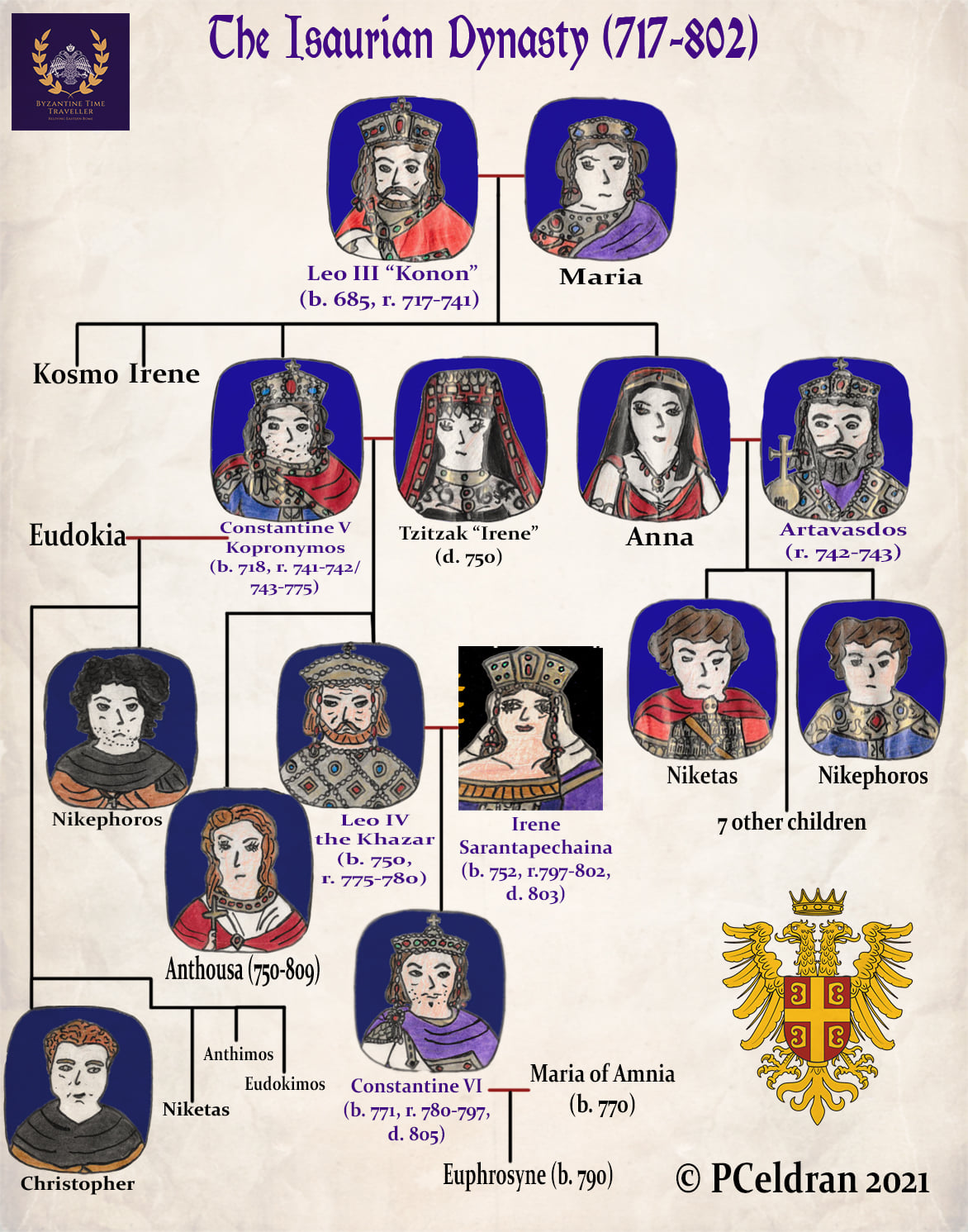
Related Articles from The Byzantium Blogger:
Byzantine Alternate History Chapter V- Emperor Artavasdos, the Unlikely Hero of the 8th Century
Byzantine Alternate History Chapter III- Justinian the Great Joins his Campaigns
Around the World in the Byzantine Era Part I (300-1000AD)
12 Turning Points in Byzantine History
A Guide to the Themes of the Byzantine Empire
Lesser Known and Would be Byzantine Emperors (695-1453)
The Leading Characters:
Irene Sarantapechaina “Irene of Athens”- Byzantine empress
Charlemagne “Charles I the Great”- Frankish emperor
Nikephoros the Logothete- Finance Minister of the Byzantine Empire under Irene
Nikephoros Caesar- Imperial usurper, brother-in-law of Irene
Tarasios- Iconophile Patriarch of Constantinople
Staurakios- Byzantine eunuch official and general of Irene
Aetios- Byzantine eunuch official of Irene
Leo IV “the Khazar”- Byzantine emperor (775-780), first husband of Irene
Constantine VI- Byzantine emperor (780-797), son of Leo IV and Irene
Theophano Sarantapechaina- Irene’s cousin
Anthousa- Twin sister of Leo IV, sister-in-law of Irene
Christopher Caesar- Imperial usurper, brother-in-law of Irene
Leo the Armenian- Iconoclast Byzantine general
Bardanes Tourkos- Byzantine general, Irene loyalist
Louis I the Fair- Son and successor of Charlemagne
Krum- Khan of the Bulgars since 803
Harun al-Rashid- Caliph of the Abbasid Caliphate
Background Guide: Byzantine characters (blue), Franks (gold), Bulgars (red), Abbasid Arabs (green).
The Background Part I- The Isaurian Dynasty and Empress Irene’s Origins

It is the year 800AD, and the Byzantine Empire at the turn of the 9th century was stronger than it was at the turn of the previous century. Here, the Byzantines had already taken back basically all of Greece from the Slavic tribes that had raided and settled it for the past 2 centuries, while in the east imperial territory stretched as far as Armenia as a lot of lands were taken back from the expanding Arab Caliphate which had been the empire’s traditional enemy for already almost 2 centuries, though in the west Byzantine control of Italy has been reduced to only the south as well as to the islands of Sicily and Sardinia as almost all of Italy fell under the control of the Lombards and the northern part of it to the Frankish Kingdom. Ruling the Byzantine Empire in 800 was a woman, Empress Irene Sarantapechaina of Athens who at the age of 48 was still stunningly beautiful with long and thick dark hair, green eyes, and a voluptuous figure. Irene however despite ruling the empire alone was not from the ruling Isaurian Dynasty that had ruled the empire since 717 when Emperor Leo III the Isaurian (r. 717-741) came to power, rather Irene was a girl from Athens from the noble family of Sarantapechos who back in 769 married Leo III’s grandson Leo IV who would later be crowned as emperor in 775 following the death of his father Emperor Constantine V (r. 741-775), the son of Leo III. Following Leo IV’s death in 775 after only 5 years as emperor, Irene came to power as regent for their young son Constantine VI (r. 780-797) who in 797 after being in conflict with her was deposed and blinded by his own mother Irene. After blinding her son who although survived it, Irene in this story’s case did not feel much guilt but now 3 years after it, she has become haunted with the guilt of blinding her son.
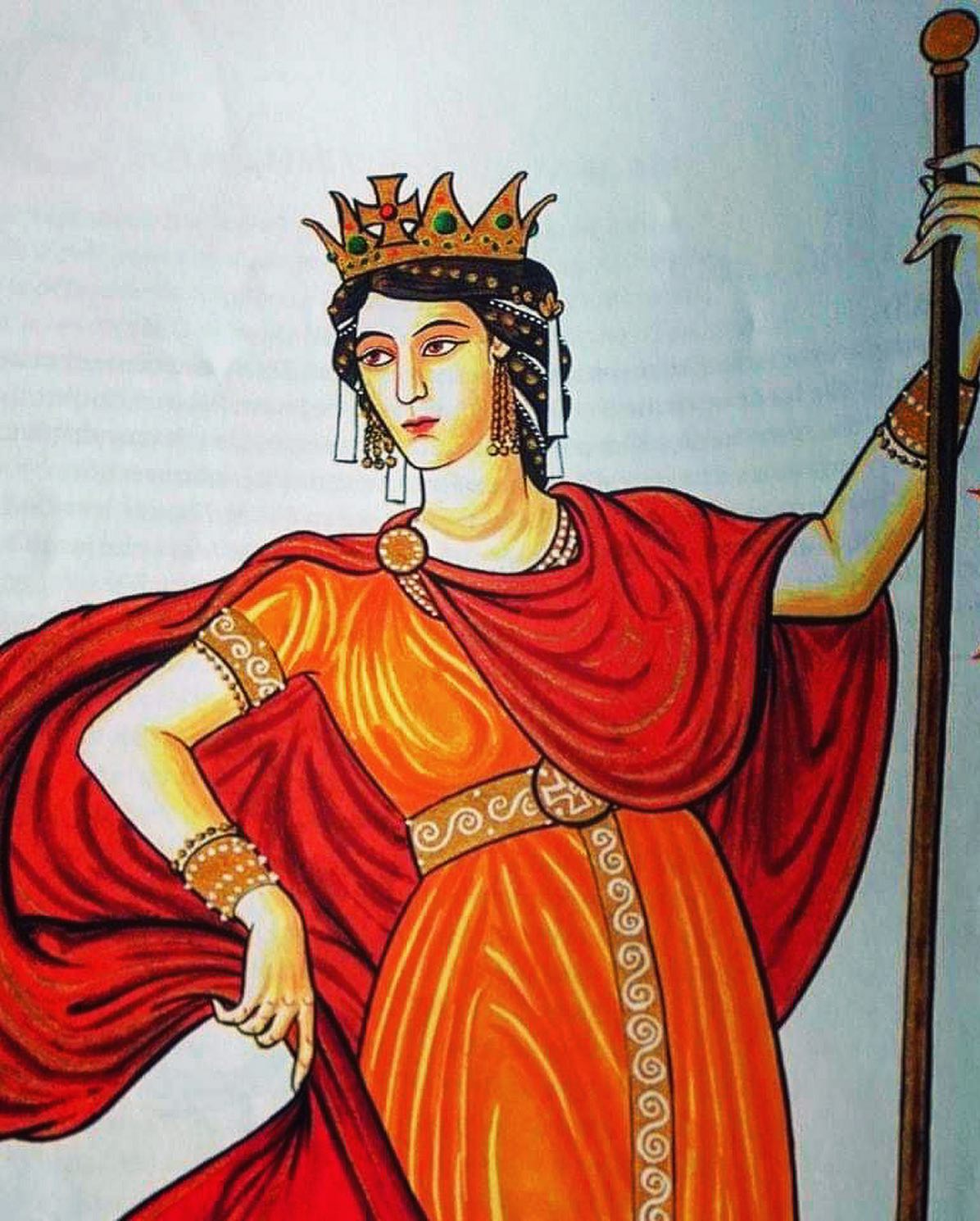
As the sole empress though, Irene did not choose to reign with the title of Basileus or Greek for “emperor”, but rather in respect for her gender, she still ruled with the title of Basilissa or “empress” in Greek, and in the coins minted with her name and image, she appeared alone but still using the title “Basilissa” which she also used when signing documents. Just a year earlier (799), Irene fell fatally ill that her doctors believed she was already close to death, but luckily she recovered and now in 800 having fully recovered, at the Boukoleon Palace along the shore of the Marmara Sea at the imperial palace complex of Constantinople, she was going to meet with her newly appointed finance minister or Logothete Nikephoros, a man Irene put great trust into as he was first of all an Iconophile (or Iconodule), a believer of icons the way she was, and he had a brilliant mind in finance and military matters, which was something Irene was not so skilled in, and of course he was loyal as Irene valued loyalty from her officials above all else. Now Nikephoros was a man 2 years older than Irene born in 750 in Constantinople in this story’s case, as real history does not record his place of birth, but what is documented are his ethnic origins as the Syriac source Michael the Syrian (1126-1199) and Arab source Al-Tabari (839-923) say Nikephoros is of Arab-Ghassanid descent with his ancestors coming from the Ghassanid Kingdom, the old Byzantine client kingdom at the northern edge of the Arabian Desert which was destroyed by the First Islamic Arab power of the Rashidun Caliphate in 638 before the Arab-Byzantine wars still ongoing up to this time began. In this story’s case, Nikephoros certainly did have Arab blood as seen with his black curly hair and olive skin, and he was proud of this heritage, while at the same time a proud Byzantine and Orthodox Christian too, thus showing a good amount of ethnic diversity and inclusion in Byzantium. Here, barely knowing Irene, Nikephoros was already endlessly charming her by talking about his knowledge of the Arab world and his Arab heritage that here- for this story’s case only- he introduced to Irene an odd drink that the Arabs already had knowledge of at this time, which was coffee, though not the kind of coffee we mostly know of today, but a thick and bitter muddy drink which seemed to be addicting giving someone a great amount of energy when drinking it.

Of course, the Byzantines in their time surely had no idea of coffee even if the Arabs in the 9th century had already been cultivating the bean and drank its liquid and true enough, coffee beans had already been cultivated in Yemen since the 6th century, and Nikephoros here being a descendant of the Ghassanid Arabs traces his origins back to Yemen in which that area was known to the Romans as Arabia Felix, the lesser known fertile southern part of the otherwise desert Arabian Peninsula; and doing this, in this story’s case, he was able to get his hands on this bean and the recipe of how to make it a drink too. When getting a taste of the drink, Irene found the taste and texture odd, but Nikephoros was quite used to it and as they drank it, Nikephoros told Irene a local legend from the Arab traders he acquired the coffee beans from knew of, which was that some time ago, a goatherd in Ethiopia (in Africa) discovered the properties of the coffee bean after seeing his goats act all excited when eating the cherries from a bush wherein the beans were found in, and true enough even the goatherd felt the same way when tasting the bean. Nikephoros though did not fully believe this story the same way it is mostly seen as a legend because coffee beans had certainly already been cultivated in Yemen since the 6th century, which is the side of the story we will stick to here, though on the other hand it was here at the beginning of the 9th century when coffee cultivation became a major thing in the area of Ethiopia and Yemen right across it from the Red Sea, and in this story’s case just too add an interesting element, the Byzantines had already gotten their hands on it from Arab traders. Now that Nikephoros told his rather trivial story, it was time Irene told hers which was also the story of the Isaurian Dynasty she married into.



The story of the Isaurian Dynasty that ruled Byzantium began in 717 when a Syrian general of low birth named Konon who was Irene’s grandfather-in-law took over the Byzantine throne in a period of anarchy that had seen 6 different emperors in only 22 years (695-717). When coming into power, Konon became Emperor Leo III and swore to end the anarchy period that could have brought the end of the Byzantine Empire and true enough, after successfully defending Constantinople with the help of the Bulgars in the north against the siege of the Arab Umayyad Caliphate in 718, Leo III brought order and stability to the severely weakened Byzantine Empire.
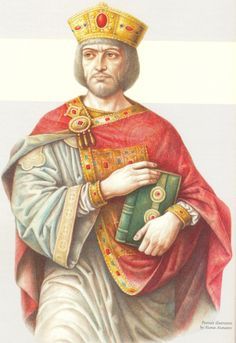
In his 24-year-reign, Leo III restored much of the lands in the east that the Byzantines lost to the expanding Arabs, reformed the law, and reorganized the political-military structure of the empire known as the Thematic System which was long story short, basically how the military ran the empire’s provinces as a defense system, but despite his successes Leo III would be controversial for something that damaged the empire a lot internally which was his ban on religious icons first acted on in 726 and made legal in 730. This ban on icons or Iconoclasm soon enough became popular with half the empire’s population especially the army wherein most came from eastern provinces in Asia Minor where their beliefs had been inspired by that of the Muslims and Jews who believed worshiping God or saints through painted images was sinful as it was equivalent to idolatry, and Leo III as a superstitious person blamed all the empire’s setbacks on his people’s excessive use of icons. Half the empire’s population meanwhile especially those from western provinces like Thrace or Greece where Irene’s family came from, or Italy saw the use of icons as a sacred tradition, and hearing that the imperial government as well as the Church of Constantinople put a ban on it deeply outraged them that the people of Italy being encouraged by the pope or the Patriarch of Rome rebelled against their Byzantine imperial authorities that the Venetian lagoon in the northeast coast of Italy declared their independence from Byzantium in 730 forming the Republic of Venice, though still being loyal allies to the Byzantines in business matters.
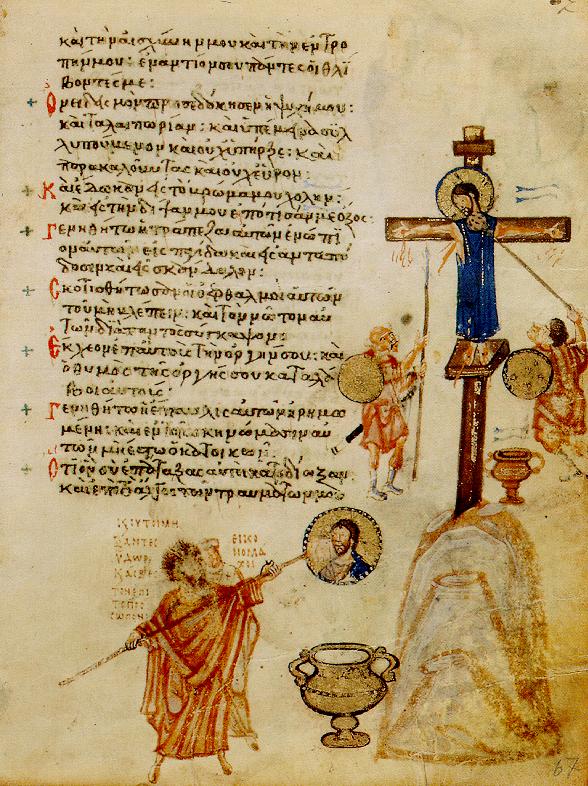
Leo III having successfully driven away the Umayyad Arab armies from Asia Minor fully came to believe that the ban on icons was necessary and helped the empire a lot and in 741 he died peacefully passing the empire to his son Constantine V better known as Konstantinos Kopronymos or the “Constantine the Shit-Named” as the Iconodules or believers of icons branded him as that for being their worst enemy as an Iconoclast extremist and to simply put it the “Icon of Iconoclasm”, although this nickname also comes from a rumor about him defecating on the baptismal water as a baby during his baptism. Though inheriting the imperial throne from his father, just a year after (742), Constantine V was challenged by his brother-in-law Artavasdos who being married to Constantine’s older sister Anna felt betrayed as Leo III back in 717 promised him the throne in return for helping Leo come to power as his friend and partner, and as Constantine campaigned against the Arabs in Asia Minor, Artavasdos deserted him in battle and proclaimed himself emperor using the restoration of icons as his motive for usurping power and as emperor, he did indeed have the icons that had been outlawed restored but only a year later in 743, his forces were defeated by Constantine V’s in the civil war between them. Losing the war, Artavasdos was blinded by Constantine V as being blind prevented someone from taking the throne, and he was then sent to a monastery to die 2 years later from the injuries caused by his blinding, while Constantine V took back the throne seeing Artavasdos’ rebellion as a sign to make a stronger stance against the use of icons.
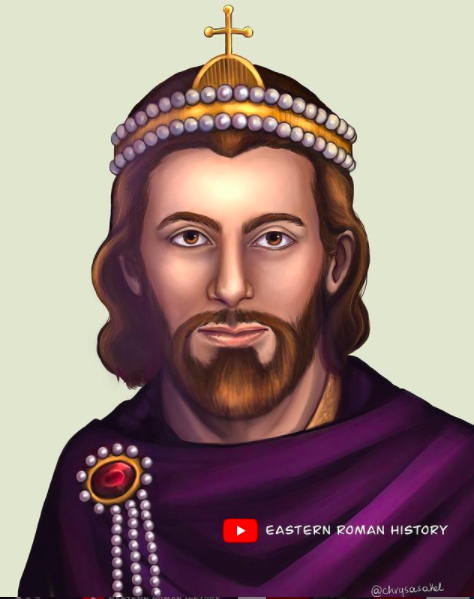
Constantine V true enough became even more of an Iconoclast extremist than his father that when issuing a ban on religious icons, he also launched a full-scale persecution on people who owned them or restored them, and as part of his anti-icon policies, countless of monks, nuns, and icon painters were either tortured, blinded, exiled, or even executed and regardless of class or age, everyone who went against the emperor’s anti-icon policies were punished. Now Irene was born in 752 in Athens which was part of the Byzantine Theme or military controlled province of Hellas as Constantine V was emperor, and the family she came from which was the Sarantapechos clan was a rich family of great influence in Byzantine Greece. Athens meanwhile which was Irene’s home city according to the English historian John Julius Norwich (1929-2018) in his book Byzantium: The Early Centuries (1988), in Irene’s time “was no longer the center of the intellectual world as it was in the Ancient days but a pious little provincial town wherein the famous temple of the Parthenon even became a church”, though the people of Athens were said to be strong supporters of religious icons when it was banned, and Irene and her family was no exception.

The Sarantapechos family wherein Irene came from however was an obscure family though a wealthy one, and despite being loyal to the reigning emperor Constantine V, they were strong believers in icons, however Irene’s childhood and upbringing in Athens is unclear, but according to Justinianus when creating this story, Irene grew up wealthy and privileged receiving the best education from Greek teachers especially in history, philosophy, poetry, and the arts. Irene too was said to be an orphan but it is unclear when and how her parents died, but in this story’s case, let’s say they died when she was only 10 in 762 when both were on ship which sank during a storm in the Aegean Sea, though it was never discovered by Constantine V that Irene’s parents were Iconophiles, otherwise he would have executed them seeing it as treason. For this story according to Justinianus, Irene was a strong Iconophile growing up especially after her parents died as a way to honor their memory, but the one thing she longed for was an opportunity to get out of her conservative and sleepy Athens and go to Constantinople to make a name for herself. Now back to Constantine V, in 750 his wife Tzitzak an Oriental beauty who came from the Khazar state or Khazaria in today’s Southern Russia gave birth to twins which was first their son Leo named after Constantine’s father Leo III and their daughter Anthousa, although it is unclear if she was really Leo’s twin or the twin of one of Constantine V’s other sons with his next wife Eudokia, but for this story Anthousa would be Leo’s twin. In 750 however, Tzitzak would die shortly after giving birth to her twins, and a year later Constantine would marry Eudokia, a local Byzantine Greek.

In 754 meanwhile at the Council of Hieria, Iconoclasm became fully legal in the empire in the eyes of the Church too, while churches and monasteries were to be legally raided to confiscate icons, but also to confiscate their hidden wealth which was to pay for the army and true enough, all the raids on churches and monasteries grew the army to a more powerful force. Another thing Constantine V would be known for was the breaking down of a number of Themes in Asia Minor such as the notorious Opsikion Theme in half as a way to weaken the power of the Theme’s military governor or Strategos to prevent rebellions, and part of this act was creating the Optimatoi Theme out of the Opsikion Theme, and this new Theme located right across the Bosporus Sea from Constantinople based in the city of Nicomedia was the Theme assigned to the new elite imperial army Constantine V created which was the Tagmata, the emperor’s personal guard that was to be absolutely loyal to the reigning emperor.

In the east, Constantine V taking advantage of the Arab Umayyad Caliphate falling into civil war raided deep into enemy territory retaking a large amount of land all the way up to Syria which the Byzantines had lost to the Arabs in the past century. When being able to take back some of Syria, Constantine V relocated its Christian population to Thrace as a way to make the border of the Arab and Byzantine worlds which was the Taurus Mountains a no-man’s land without anyone living there to farm it so that invading Arabs would not want to pass there to invade as they would starve to death without any food supply present there. For his many victories and giving away free food to the population of Constantinople, Constantine V was extremely popular despite his vile treatment to those who opposed him and supported icons, and by being extremely popular especially with the mostly Iconoclast army, he was seen as their hero and true savior that they would die in battle for him, but no matter how popular and well-loved he was, Constantine V too suffered from epilepsy.

As for the events around the world, things would be in favor for the Byzantines in the east as in 750 the Arab Umayyad Caliphate based in Damascus had dissolved as it was overthrown by the new Arab Muslim power of the Abbasid Caliphate which needed some time to consolidate its rule, therefore they would not yet pose a threat to Byzantium, and with their capital now in Baghdad they would not be so much of a threat to the Byzantines too as they were farther away than Damascus, the previous Umayyad Caliphate’s capital. In Italy on the other hand, things would be worse for the Byzantines as in 751 their capital there which was Ravenna fell to the Lombards when its last Exarch or semi-autonomous governor Eutychius surrendered it to them being unable to hold it any longer as the imperial authorities in Constantinople neglected Italy too, thus the Byzantines were only left with Southern Italy, Sicily, and Sardinia which would become Themes too (except for Sardinia).
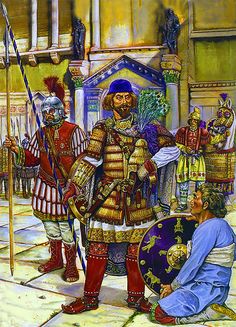
Now as the threat of the Arabs died down in the east, the new state of the Bulgarian Khanate in the north which had been there since 681 though not yet a massive empire would be the new major threat to Byzantium as after Constantine fortified the northern border with the Bulgars, the Bulgars saw this as a reason to declare war on the Byzantines which they did in 755 and from here on, Constantine V would fight a constant war with them as luckily he did not have to focus on the east anymore with the Arabs no longer a big threat. In 756 Constantine V won a major victory against the Bulgars though was defeated by them in 759, but in 763 after the Bulgars raided Byzantine territory, Constantine V crushed the invading Bulgars at the Battle of Anchialus along the Black Sea coast, and as a result of the defeats, the Bulgarians would be plunged into anarchy with a change of ruler 5 times from 763 to 768.
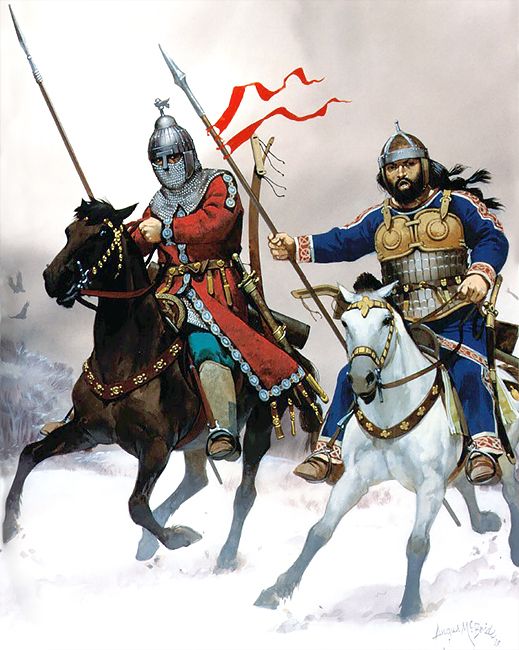
Now as Constantine V was busy at war against the Bulgars in the north, it was in 769 when he chose Irene to be the wife of his son Leo, and it was very ironic as Constantine V was in fact the “Icon of Iconoclasm” and Irene was a strong Iconophile, but Constantine did not know it. The reason now to why Leo or even his father chose Irene is a mystery but the most accepted one is that she at the age of 17 was that even if the empire had a lot of beautiful young women for the imperial heir to choose, she was an exceptional beauty and also because Constantine V knew the Sarantapechos family of Athens well, and Irene herself had already proven to be a smart and capable person. Here in 769 with both her parents dead, in this story’s case, Irene would be raised by her uncle which was her father’s younger brother the general Constantine Sarantapechos, who would later on be the Strategos of the Hellas Theme. By this point, Constantine V with his wife Eudokia also had 5 sons together in which the eldest one Nikephoros born in 755 would later be made a Caesar (Kaisar in Greek) in title together with his younger brother Christopher, while the next 3 sons Niketas, Eudokimos, and Anthimos would only receive the title of Nobelissimos.
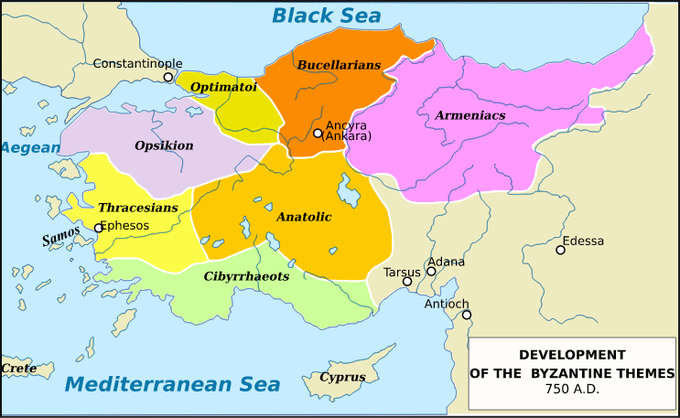

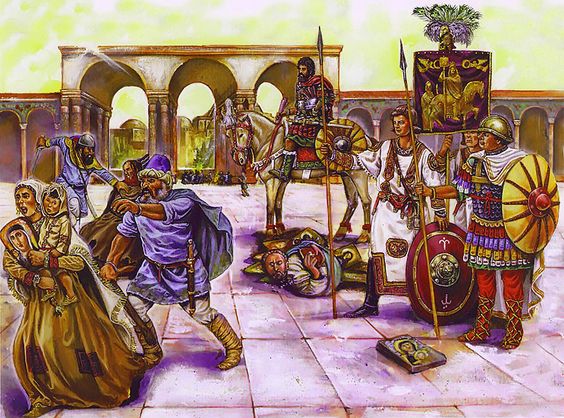

Watch this to learn more about Constantine V and his reign (Eastern Roman History).
Back in 800, Irene and Nikephoros continued drinking their coffee while overlooking the Marmara Sea from the Boukoleon Palace, and when looking at the sea and the steps leading up to the palace from the shore, Irene recalled the moment she first stepped there in 769 when she was chosen to marry Constantine’s son the imperial prince Leo and here, she continued telling her background story. On November 1 of 769, the 17-year-old Irene saw the great metropolis of Constantinople for the first time in her life as the ship she boarded from Athens arrived at the dock of this exact Boukoleon Palace greeted by a large number of people and afterwards escorted by soldiers of Constantine V’s elite Tagmata force to the Great Palace Complex (or Imperial Palace Complex) itself and along the way, people all cheered for her for some reason, which was most likely because she was to be the future empress. Irene back then coming straight out of the sleepy and slow city of Athens was shocked with the amount of energy in Constantinople’s streets, but most significantly feeling so important that she had to be escorted by palace guards, greeted by so many people of the high ranks of society, and was cheered by so much people as if she were a big star as back in Athens, no one really noticed her in the streets despite coming from the city’s influential family.
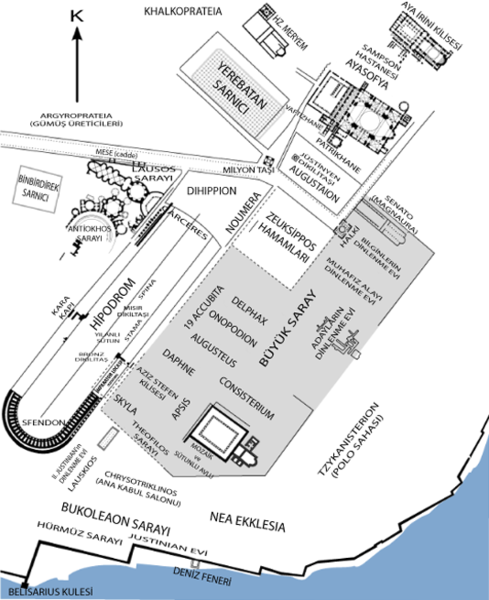
On the other hand, she was also shocked but in awe with all the landmarks she saw in Constantinople such as the Boukoleon Palace built right next to the sea, the Hippodrome, Great Palace, the Hagia Sophia and its dome, and all the dining halls, bedrooms, and baths all decorated with such extravagance. Irene’s first stop in the Great Palace was her designated room in the women’s section which even had its own bath and personal assistants assigned to her. As the day ended, Irene was invited to a feast at the main dining hall of the palace wherein she would meet the emperor Constantine V himself who Irene remembers as someone at the age of 51 who was quite overweight with messy hair and a messy beard, and there she would also meet his 19-year-old son Leo who was to be her husband, who was short and round in appearance and since he was half-Khazar with his late mother being a Khazar, Leo had strong Oriental features including small and slanted gray eyes, though also having curly brown hair, a round face, and big ears. Being Khazar in his mother’s side, he was known as “Leo the Khazar” also because of his features, though his most recognizable quality was his easy going and nice personality unlike his father who was usually unstable, violent, and quick to anger. Now as Justinianus for this story says, why Leo fell for Irene who was his father’s choice for her out of all young women in the empire was because of her beauty and when meeting her for the first time, Leo was impressed not only with her looks and height wherein she seemed quite tall, but with her quick thinking and confidence that she was not shy to speak to him and his father. The day after she arrived in Constantinople, Irene’s 6 weeks of learning court etiquette began, and usually it would not be this long but in this story’s case as Constantine V noticed Irene’s rather fresh and outspoken attitude whereas women in this conservative society were supposed to be reserved and proper, her time to be taught the right way in court etiquette and protocols had to be extended before she was to marry Leo. Now from something I recently just learned when commenting on a post on Instagram asking about women’s fashion in the Byzantine era, I just found out with all the influences from the Arab world and the movement of Iconoclasm becoming a major factor that impacted the empire, women in Byzantium increasingly became more conservative in behavior and fashion, and in this story’s case Irene was someone who did not want to play along with the conservative ways of the Byzantine court.

Of course in order to be the future empress, Irene had to go through this 6 weeks of training in the proper behavior of an empress, and as the History of Byzantium Podcast host Robin Pierson had said, this would be an endless of process for Irene in learning the proper behavior of the Byzantine imperial court, and part of her training would be on how to talk to people of high status, how to behave in church, how to greet the people and senators, how to respond to foreign ambassadors, and also on how to sit properly when eating, and how to use a fork which was a symbol showing how sophisticated the Byzantines were when it came to dining as other people especially in the western lands did not use a fork. In this 6-week period, the one person Irene would become close to in this story’s case was the eunuch Staurakios who came from a prominent family and was making a name for himself as a eunuch in the imperial court, and in this story’s case only, he would be the palace’s chef who was very skilled at cooking lavish dishes for the imperial court but at the same time, he was also a master at managing state affairs and the army in which he taught some of that to Irene- except for cooking dishes- in these 6 weeks. Another thing Irene vividly remembered about this period of training was when she was taught to dress the proper way in imperial style as the court officials and court women that trained her noticed the informal style of the lose clothes she dressed in coming from Athens wherein they dressed like that, and in so little time 2 dresses were prepared for her which was first her wedding dress for the wedding ceremony and the gold dress for her coronation.

Irene also remembered that here in this 6-week period as she was in the baths of the palace, she was taught how to wear the imperial dresses by the court ladies where these court ladies had asked her to take off her robe to be examined if her body was healthy, as the wife of the imperial heir had to be healthy in order to give birth to a healthy heir, and true enough Irene was in good health here, though her soon-to-be husband Leo was not. Here too in the baths when dressing down to what was her underwear- a piece of cloth wrapped around the bust and the waist- her body was to be measured for the 2 dresses for the upcoming ceremonies. For Irene, this moment was rather awkward as she had to experience some women she doesn’t know see her practically naked except for her underwear, and even more that these women were to take the measurements of her bust, waist, and hips while she was barely clothed. The women measuring her here would go as far as to touching her breasts and stomach while she was again only wearing her underwear, to see if her body was in perfect shape basically because even the court ladies were attracted to her looks, perfect shape of body, and height. When this 6-week period of preparations ended on December 17 of 769, Irene came out as a fully grown and proper imperial woman at only 17 dressed in the golden coronation dress, which was a tight long-sleeved golden dress that covered almost the entire body, and when fully dressed up she met her husband-to-be Leo IV at the Hagia Sophia where Leo already being made years earlier by his father as his co-emperor placed a golden outer robe on Irene’s shoulders, and afterwards placed a crown on her head, thus Irene was now crowned as a co-empress, or at least an imperial princess and the 4th most powerful person in the imperial authority (first being the emperor Constantine V, then his wife Eudokia, then the co-emperor Leo, and lastly Irene). Now in Byzantine coronation tradition, the Patriarch of Constantinople was to crown the emperor symbolizing that the emperor got his authority from God, but the empress was not crowned by the patriarch but rather by the emperor showing she got her power from her husband, the emperor. Following the coronation, Leo presented Irene dressed in her golden dress and crown to the people of Constantinople from a balcony of the imperial palace. Leo then proceeded to the Church of the Virgin of the Pharos in the Imperial Palace Complex while Irene returned to her dressing room to change into her wedding gown, another conservative dress that covered almost her entire body, and then met up with Leo at the Pharos church where the Iconoclast Patriarch of Constantinople married them, and in attendance was Leo’s entire family including his father the emperor and the senate. At the end of the day, Irene was both crowned and married and with both ceremonies over, she and Leo changed back into more comfortable but still formal outfits for the banquet given to them by the emperor that night. The entire ceremony process would then end only 3 days later on December 20 with a bath ceremony held for Irene, except no one would see her bathe, instead as the palace officials and guards led her to her baths which was already prepared with the tub filled and towels and robes for her hanging, they left her alone to undress, fall into the tub, and take her time. Though now being married, Irene and Leo did not share the bedroom at all times but rather, Leo would frequently visit Irene in her bedchamber and in 770, Irene would be pregnant at 18 but everyone speculated if it would be a boy and true enough in January of 771, Irene gave birth to a healthy boy at the purple room of the imperial palace or Porphyria, a dark room with walls made of purple marble or porphyry and draped with purple silks. This now was another Byzantine imperial tradition as only the imperial wife or the wife of the imperial heir could give birth here as a way to secure the succession of their children to secure legitimacy as no one else but the imperial family had access to this room, and in 771 Irene and Leo’s son Constantine named after his grandfather the emperor was the second one to be born here in the purple room, the first being Leo himself as well as his twin sister Anthousa in 750. With the birth of Constantine who was to be emperor one day, his grandfather the emperor who he was named after threw lavish celebrations including chariot races in the Hippodrome and the free distribution of the purple sherbet drink Lochozema to the people of the capital and after these celebrations, the baby Constantine dressed in a golden robe was presented to the people. With the celebrations over, the Patriarch of Constantinople baptized the baby Constantine, except unlike his grandfather back in 718, he did not defecate on the water though the emperor Constantine V who was right there in that exact same spot many years later still remembered that embarrassing moment, at least from what he heard of. It was also here in her son’s baptism when Irene got herself acquainted with her in-laws such as the empress or Augusta Eudokia who was at least friendly with her in this story’s case, her sister-in-law Anthousa who was Leo’s twin wherein both her Irene would soon develop a strong bond as Anthousa also secretly supported the icons, and lastly Irene would meet the emperor’s much older sister Anna, who being 10 years older than Constantine V was still alive at 63, except she appeared to be cold and bitter as her brother blinded her husband Artavasdos and her sons with him leading to their deaths even if it was already almost 30 years ago when it happened, but where Irene and Anna would later find common ground was in their support for icons as Anna way back then- in this story’s case- led a resistance to restore the icons which failed when her brother took back the throne in 743 which also removed Anna as empress. 2 years later though (773)- in this story’s case as history does not record it- Anna would die and Constantine V too would not have much longer to live.

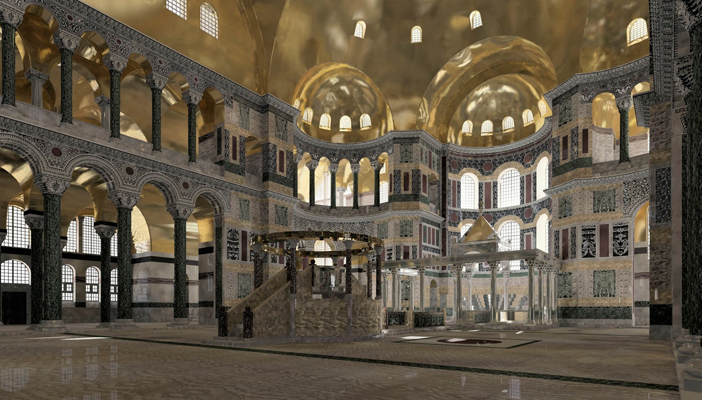
Back in 800, the conversation between Irene and Nikephoros was already lasting until night and before they could call it a day, Irene proceeded to talk about her life as Leo IV’s Augusta or empress. Back in 768, a year before Irene came to Constantinople, the Bulgarians in the north got a new ruler or Khan which was Telerig and years later in 775, he successfully made Constantine V who was still alive reveal the names of his agents in Bulgaria and when finding about their identities, Telerig had them all executed which made Constantine V even more angry that he decided to again make preparations for another campaign against the Bulgars to the north.
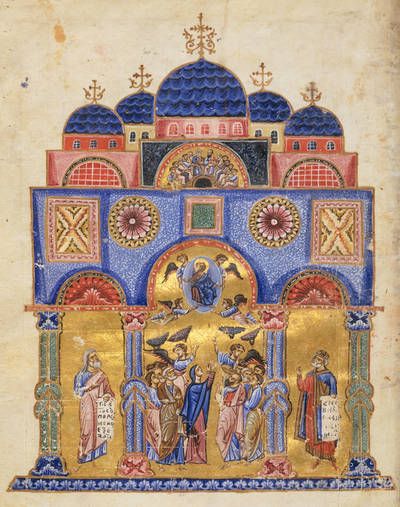
Before he could march on Bulgaria though, Constantine V while away from Constantinople in Thrace fell ill with a fever and on September 14 of 775, he died at 57, afterwards buried at the Church of the Holy Apostles in Constantinople, the burial site of all the emperors since the empire’s founder Constantine I the Great (r. 306-337). Following the death of Constantine V, his son Leo IV immediately succeeded to throne without any difficulty as he was already made his father’s co-emperor since he was only a year old in 751, and Irene already being married to him immediately became the empress without any coronation ceremony as she was already crowned at the day of her wedding in 769. In 775 however, Leo IV at only 25 was already obviously in bad health suffering from tuberculosis and his condition disabled him from being a strong ruler in making critical decisions, therefore it was up to his 23-year-old wife Irene who was more able in body and mind to do them for him, and one of Leo IV’s first acts done under Irene’s influence- in this story’s case- was to banish all of Leo’s 5 half-brothers as well as their mother Empress Eudokia in 776 as Irene saw them all as a potential threat.

This incident that led to the banishing of Leo’s 5 half-brothers happened when Leo in 776 held a ceremony in the palace wherein he announced to his generals and palace officials that he was sick and did not have long enough to live, and so here he proclaimed his 5-year-old son Constantine as his co-emperor, but the half-brothers were enraged and seeing Leo’s illness as a sign that one of them should soon enough take over the throne, the most ambitious of the 5 being the eldest one Nikephoros Caesar as well as the second brother Christopher the other Caesar hatched a plot to get one of them to succeed Leo. Leo shortly after discovered their plot but with his kindheartedness and relaxed personality, he instead chose to spare his 5 half-brothers and just banish them from the palace and strip off their titles forcing them live in the outskirts of Constantinople, though the conspirators from the palace staff that helped in their plot were banished to the cold and remote Byzantine colony of Cherson in what is now the Crimea (Ukraine), north of the Black Sea. Irene however thought of punishing her brothers-in-law more severely but since they were only teenagers without much ability in running an empire, she chose to go with her husband’s decision, but deep inside Irene really wanted to act on them with force as she felt constantly annoyed with how they treated her, which was that in this story’s case, these brothers being quite unruly and unsophisticated lusted after Irene’s beauty and always attempted to seduce her, but she being smarter than them always avoided them at all times and when banishing them far away, she could get rid of them for good; and with the half-brothers only banished from the palace, this would only be their first attempted coup in taking the throne.

Now Leo IV on the other hand being close to his Iconoclast extremist father was also raised to be an Iconoclast, although he was not an extremist as his marriage to Irene in this story’s case somewhat changed his worldview and although he did not believe in the use of icons, he at least tolerated it that his people believed in them as at the end it was only in the army where the hardline Iconoclasts lay and it was only mostly women, monks, and nuns that were strongly for the use of icons, while most of the population again according to History of Byzantium podcast did not really care if icons were legal or not. In his reign, Leo IV undid most of his grandfather’s and father’s extreme Iconoclast policies though not fully getting rid of Iconoclasm, instead only making it more moderate that he put an end to his father’s persecutions of Iconodules, though like his father he sometimes had some Iconodule members in the imperial court fired or whipped only if they publicly showed icon veneration, but on the other hand he no longer continued having soldiers raid monasteries, arrest monks, and confiscate icons like his father did, and instead he returned the monks his father banished back to their monasteries, thus the dystopian era of Iconoclasm was slowly dying down. Leo IV though did not really care about the whole point on breaking icons as he soon saw it was useless and only dividing the empire’s people, and with his failing health too he was more worried about it, and falling for Irene’s beauty here in this story, he listened to her on her opinions on how to deal with the issue on the icons. On the other hand, Leo and Irene would not have any more children aside from Constantine as Leo’s health condition made it hard for him to be with Irene often, as she too did not want to be around too much with a sick husband who was constantly coughing.
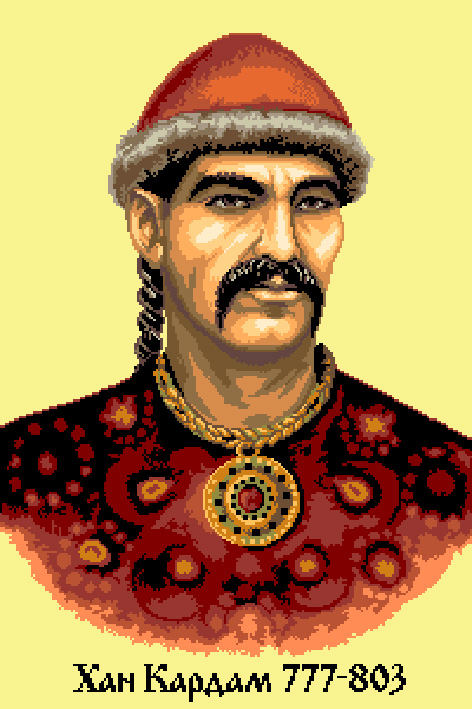
When it came to ruling the empire though, there was not much significance in Leo IV’s reign except with one incident in 777 when the Bulgarian khan Telerig was ousted from the throne by the new khan Kardam making Telerig flee to Constantinople where Leo welcomed him, gave him the rank of patrician, and had him baptized as a Christian as here the Bulgars were still Pagan, though Telerig died later that year; and in 778 Leo despite his bad health decided to launch a campaign against the Abbasid Arabs in Syria as fighting a war was part of his bucket list before his death. The invasion Leo launched in 778 was a large one consisting of the armies of the Anatolic, Armeniac, Opsikion, Bucellarian, and Thracesian Themes all led by their own generals or Strategoi (singular: Strategos) and at the end, this campaign was successful in killing a large number of Arabs, winning a number of victories, taking back a large amount of spoils of war, and relocating a number of Syrian Christians to Thrace just as Constantine V did before, and the emperor at least got the honor of leading his men in battle.

Later in 778, a triumphal procession in Constantinople was held for Leo IV and all the 5 generals who survived where all the spoils of war and Arab captives were paraded, though in the next year (779) the Abbasids struck back invading Eastern Asia Minor but Leo’s army again successfully won repelling the invasion. In 780, Leo IV decided to this time launch a campaign on Bulgaria against its new ruler Kardam but before he could even start, his health grew worse that in this story’s case Irene persuaded him to give up on it and rest, and on September 8 of that year, Leo IV the Khazar died at only 30 from an extreme fever caused by his tuberculosis being the last effective ruler of his dynasty, the Isaurian Dynasty as his son Constantine VI at only 9 succeeded to the throne with his mother Irene as his full-time regent in which she will be for most of Constantine VI’s reign. Leo IV may have ruled for too short, but despite only 5 years of ruling, he was an able ruler considering that he suffered from chronic tuberculosis, although Leo IV’s reign is often called the epilogue to that of his father Constantine V’s long reign. Irene ends her story here in 780 when she came to power already as the effective empress-regent for her son, and here back to the setting in 800 she called it a day saying goodbye to the Logothete Nikephoros as Nikephoros returned to his house and Irene would return to her bedchamber which was not the empress’ room but the emperor’s as with no male emperor currently reigning, she was free to occupy it.
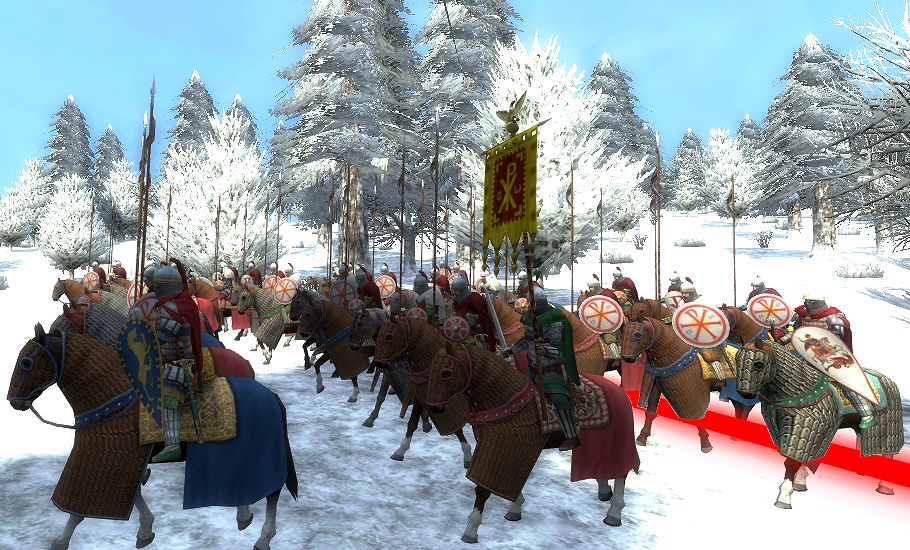
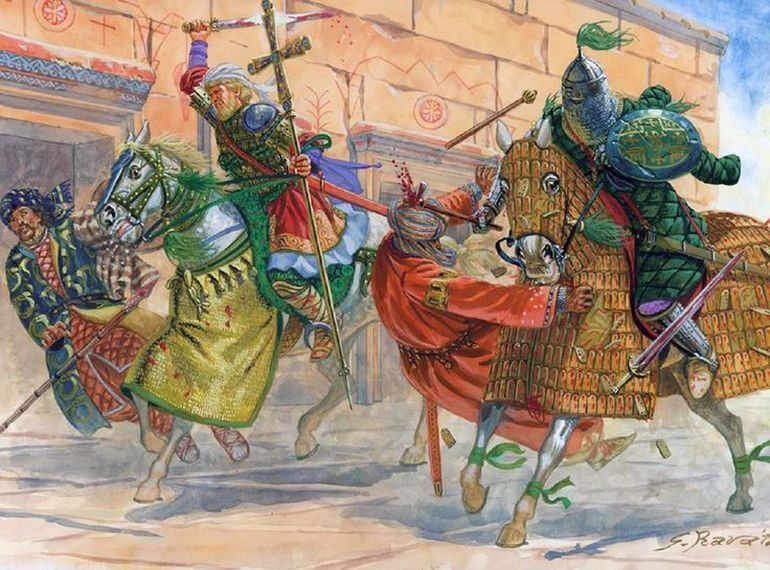
Watch this to learn more about Leo IV’s reign (Eastern Roman History).
The Background Part II- Irene as the Empress-Regent

In the year 800, a few days after Irene’s meeting with the new finance minister or Logothete Nikephoros at the Boukoleon Palace, Irene in a gold and purple imperial robe headed to the polo field of the Great Palace where she saw her advisor, the eunuch Aetios playing a game of Tzykanion or Polo, who after seeing Irene stopped and rushed to her reporting about his rival eunuch Staurakios, Irene’s most trusted person before, and here Aetios brought some sad news though happy for him which was that some weeks earlier on June 3 of that year, Staurakios had died from sickness in Cappadocia when raising an army to rebel against Irene and take over the throne despite being a eunuch, although Staurakios seeing that Irene took the throne even if she was a woman thought he could too even as a eunuch.

Irene as the empress put most of her trust into the eunuchs as they were the people she was most acquainted with ever since she arrived in Constantinople back in 769, and eunuchs too being males without reproductive organs were the only men allowed into the women’s quarters as they could not do anything to a woman, and though they had no ability to become emperor, they still had the power to influence one. However when Irene fell ill in 799, both eunuchs being the younger one Aetios’ and older one Staurakios’ rivalry intensified, and the reason for their rivalry was that the old-timer Staurakios felt threatened by the growing influence of the younger Aetios, but the rivalry had also something to do with the succession as Irene with her husband having died years ago and her son blinded and sent to a monastery being unable to rule again had no heir, and she too did not want to remarry or adopt a son as she could also see them as a rival to her power, so without a named successor both eunuchs plotted to make each of their male relatives the next emperor, but neither of their plans succeeded. After Irene recovered a year earlier, she summoned both Aetios and Staurakios to a council to hear both sides of the story and at the end, she just dismissed Staurakios at least with an apology except doing nothing severe to him but only decreasing his power, but feeling insulted Staurakios headed over to Cappadocia to raise an army with the support of the Anatolic Theme’s Strategos which was the empire’s most powerful general against both Aetios and Irene but in June of this year (800), again after getting an illness that caused him to cough out blood, Staurakios died and his rebellion failed. Irene felt disappointed here as Staurakios was someone she put a lot of trust into and all of sudden after feeling cheated despite not being removed from his position, he rebelled, though to tell more about Staurakios, Irene here told Aetios the full story that Staurakios was indeed a loyal official, general, and chef who Irene knew ever since she got to Constantinople, and it was in 780 when she came to power as her son’s regent when the eunuch Staurakios also rose in influence.
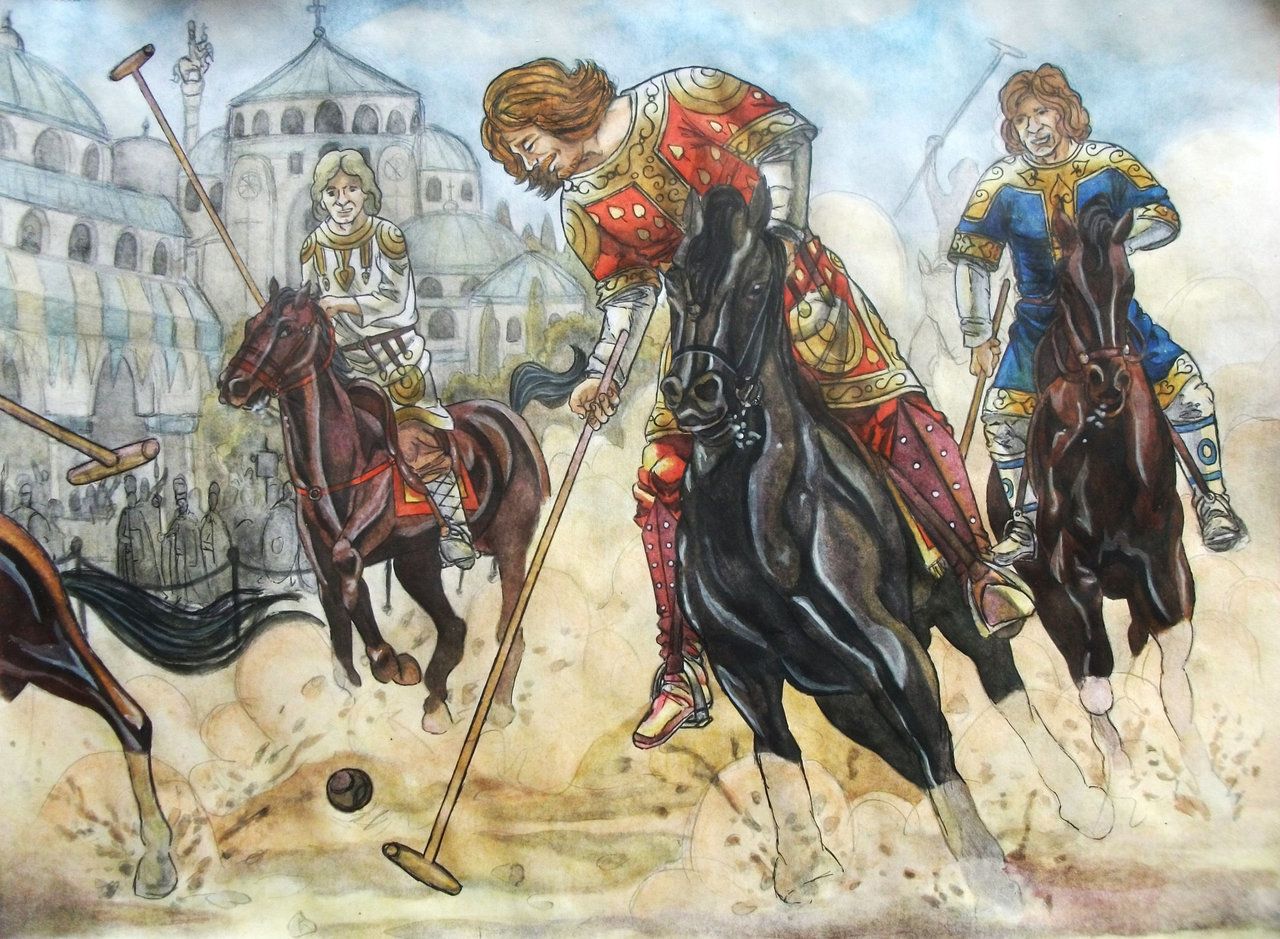
20 years earlier in 780, after Leo IV died, his son with Irene Constantine VI became emperor at only 9, therefore the task was left to Irene to rule as the effective ruler of the empire as Constantine VI was too young to make his own decisions, though following Leo IV’s death Irene came up with rumors that he died by putting on the crown of the former Byzantine emperor Maurice (r. 582-602) which gave him a curse causing him his death, as a way to explain why their emperor died too soon. Staurakios who in this story taught Irene the proper dining etiquette, introduced her to a number of cuisines including Byzantine, Arabic, Persian, and Frankish, turned Irene from a country girl to a sophisticated imperial woman, and helped secure her position as the empress-regent as a big percent of the army, mostly being the elite guard force or Tagmata opposed Irene as not only was she a woman but a supporter of the icons whereas most of the army were still extreme Iconoclasts undyingly loyal to the late Constantine V.

The soldiers of the Tagmata refusing to answer to Irene and Constantine VI wanted a son of Constantine V on the throne, and the perfect choice was the Caesar Nikephoros, the most ambitious of Constantine V’s 5 sons with Eudokia that were banished from the palace 4 years earlier, and although Nikephoros was never really a strong Iconoclast, he did have some imperial ambitions and so here in 780 he was proclaimed emperor by the Tagmata army in honor of their hero Constantine V, although just a month after the plot was hatched, Irene discovered it and had the conspiracy leaders exiled and Nikephoros and his 4 younger brothers made priests as a way to prevent them from taking the throne as priests and monks were also unqualified to rule. To confirm to the people that Nikephoros Caesar and his 4 brothers were made into priests, Irene had them perform the communion service at the Christmas Day Mass of 780 at the Hagia Sophia, and here the 25-year-old Nikephoros who was tall and muscular in appearance with large and dark curly hair, pale skin, and a long nose looked the most humiliated being forced to give communion to the people at the Mass. In 781 then, Staurakios was appointed by Irene as the empire’s foreign minister or Logothetes tou Dromou as Irene trusted eunuchs above all as her ministers and generals, as the rest were still loyal to the late Constantine V and therefore strong Iconoclasts and as for Staurakios, the contemporary historian Theophanes the Confessor (758-817) would call him “the foremost man of his day and in charge of everything” as if Irene was the power behind Constantine VI, then Staurakios was the power behind her. It was also in 781 when the Frankish king Charles I, later known as Charlemagne who had ruled the Frankish Kingdom since 768 first came into the Byzantine scene when Irene considered making an alliance with him by marrying her son Constantine VI to Charlemagne’s 6-year-old daughter Rotrude, known as Erythro by the Byzantine Greeks and Irene herself even sent Byzantine scholars to the Frankish Kingdom to educate the young Rotrude in the Greek language and Byzantine customs. In 782 meanwhile, the war between the Byzantines and their eastern neighbor the Arab Abbasid Caliphate would resume when the caliph Al-Mahdi launched an invasion on Byzantine Asia Minor with an army of 100,000 men led by his son Harun al-Rashid as payback for their defeat to the Byzantines under Leo IV back in 778 and 779, and this totally shocked Irene but still acting strong, she had the armies of the Themes in Asia Minor counter-attack, except things only got worse when the Strategos of the Bucellarian Theme (located in Northwest Asia Minor) Tatzates defected to the Abbasids, thus the Byzantines despite having a strong army with the elite Cataphract cavalry was defeated, although Tatzates still suggested to Harun to make negotiations with the Byzantines. Imperial envoys from Constantinople including Staurakios would meet up with Harun in Asia Minor where they would be captured by Harun’s Arab forces while Harun only agreed to release them if Irene was to pay off the Abbasids a tribute of 70,000 gold dinars and 10,000 silk garments a year for the next 3 years, and not wanting any trouble Irene agreed to it. Irene however was deeply humiliated with her defeat to the Arabs, and so to make up for it in order to gain back her popularity, in the next year (783) she sent Staurakios to command an army to campaign in Greece against the Slavic tribes that had settled there for almost 2 centuries. Staurakios marched into Greece by land from Constantinople passing through Thrace heading east to Macedonia, then south to Thessaly, and finally to the Peloponnese in Southern Greece where at the end of the year he managed to take back a large amount of territory from the Slavs and in early 784 when returning to Constantinople, the victorious eunuch general Staurakios was awarded with a triumph. Now satisfied with reconquering most of Greece in 784, Irene returned to consolidating her rule and even though only the empress-regent for her son, she put her image on the right side of the coins even if that space was reserved for the emperor which was where her son was supposed to be, but instead Constantine VI was only put on the left, as Irene wanted to show that she was actually the one really wielding power, and now being the one wielding real power Irene at this time had made the achievement of creating a new army unit known as the Vigla which was a division of the Tagmata.

Irene then would turn to the more serious issue of Iconoclasm and how to end it, as in her husband’s reign it had already been dying down and now running the empire, she wanted to achieve the legacy of ending Iconoclasm but it was such a challenge as most of the army was still for it, and the policy had been already in effect for more than 50 years and so for Irene, she would only have to wait for the right moment to put an end to it, and luckily in 784 too, the Iconoclast Patriarch of Constantinople Paul IV who Leo IV appointed in 780 had died. When selecting a new candidate for patriarch, Irene as usual when it came to appointing people loyal to her chose her loyal secretary and fellow Iconophile Tarasios as the new Patriarch of Constantinople who despite having no background as a priest and being rather oblivious at most times was a skilled scholar especially in philosophy and theology and after being ordained, he became patriarch and would work to restore icons. In 785, Irene wrote a letter to Pope Hadrian I in Rome signed both by her and her son Constantine VI which was to approve a council aimed to undo all the Iconoclast policies by Leo III and Constantine V before them and return to the old ways of venerating icons, and in return the pope approved of it if both mother and son were to follow his spiritual guidance.
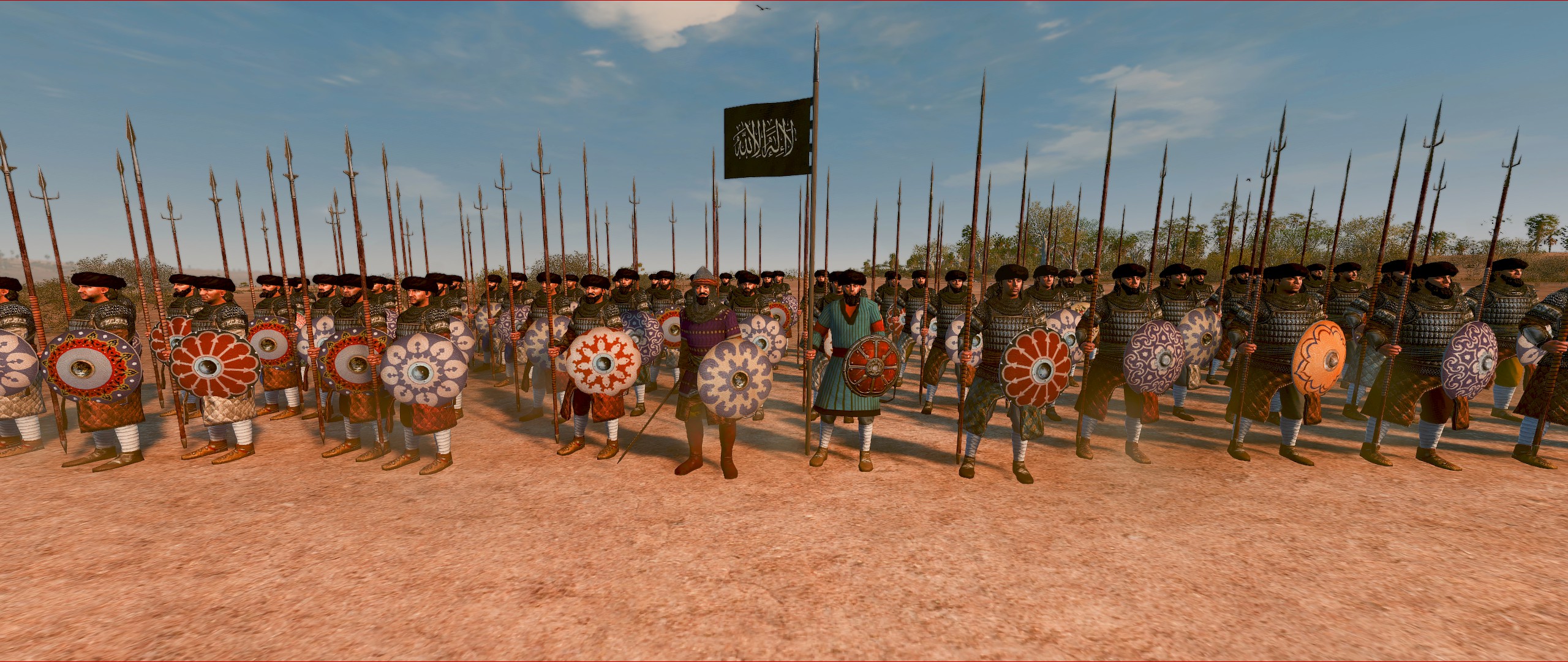
Back in the present setting of 800, Irene after her discussion with Aetios in the polo field headed to one of the storage rooms in the palace alone where she saw an old coin of her with her son with her on the right side, as well as a coin of her late husband Leo IV with their son on the obverse and on the reverse were the images of Leo IV’s father Constantine V and grandfather Leo III who founded the dynasty and since this coin was minted in the Iconoclast period, no religious images such as of Christ were to be seen and instead images of the imperial family were put but with Iconoclasm over in Irene’s time, religious images returned to imperial coins.
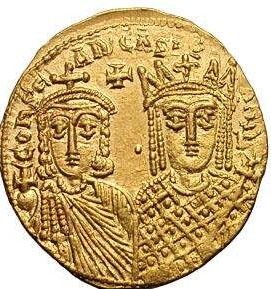
Another thing Irene found in the storage room was a document signed in the council of 787 that restored the use of icons. Now back to 786, Irene together with Patriarch Tarasios made their first attempt to end Iconoclasm by holding a Church Council at the Church of the Holy Apostles in Constantinople, the burial site of the emperors but before the negotiations even started, the Iconoclast soldiers of the Tagmata force, most of them having served Constantine V were still at it and attacked the church by firing arrows at it in honor of the late Constantine V and being too distracted, Irene decided to not push through with it, and so the council was disbanded leaving the soldiers to lift their siege on the church. Irene however was still intent to hold a council and in order to do it safely, she decided to hold it in the next year in the city of Nicaea right across the Sea of Marmara from Constantinople and to keep the Iconoclast soldiers distracted in order to peacefully hold the council, she sent them to all corners of the empire to defend it including to the eastern border to fight off the Abbasids.
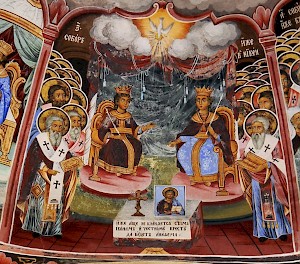
On September 24 of 787, the Second Council of Nicaea was held with Irene together with Patriarch Tarasios and Emperor Constantine VI as well as 365 bishops and 136 priests and monks in attendance, and the council was made to discuss the restoration of religious icons held in the Hagia Sophia of Nicaea which was also its senate hall and was the same place where the first Byzantine emperor Constantine I held the First Church Council in 325 that set the official creed for Christianity. At the end, all agreed that icons were to be restored and legalized once again, coming up with the statement that Christ had been seen on earth as a human, therefore he can be pictured. The final meeting was then held back in the Magnaura or Great Hall of the imperial palace in Constantinople on October 13 of 787 where the declaration to restore icons was signed by both Irene and Constantine VI, although Irene as usual of her signed it first to assert her authority, but no matter who signed first, the period of Iconoclasm ended right here and from here on, icons were to be restored all across the empire, although Iconoclasm was still around with the soldiers still loyal to Constantine V still in their posts. It also happened that in 787 Constantine VI turned 16 and at that age, the emperor was already expected to rule alone but, in this case, Irene never trained him to be an emperor as she still wanted to continue ruling for him, as after she got a taste of power she never wanted to let go of it.
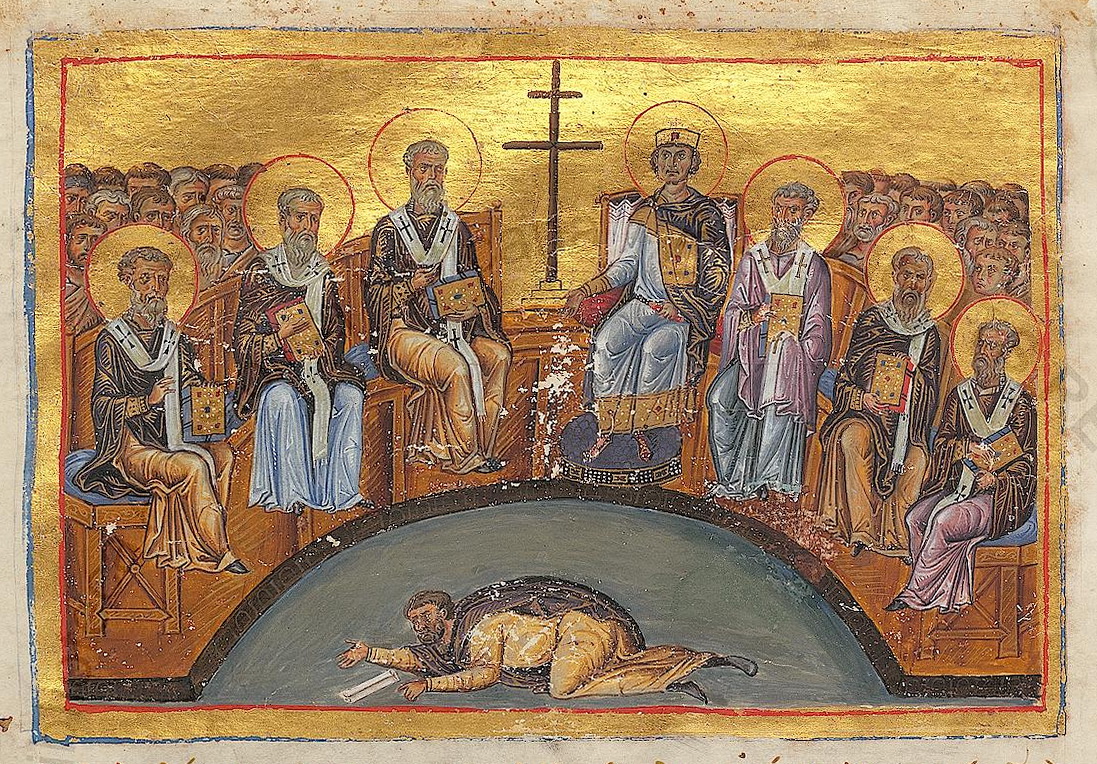
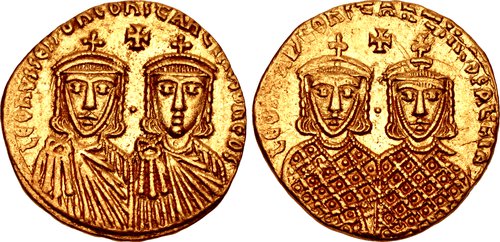

Irene back in 800 remembering holding the last meeting of the council at the Magnaura of the palace returned there to see it once again while it was not being used for the meantime, and when stepping foot there again she remembered another incident that happened there in 788 which was the first ever imperial bride-show in Byzantine history organized by Irene for her son Constantine VI wherein he was to choose his bride. Though before this bride-show, Constantine VI was still engaged to the King of the Franks Charlemagne’s daughter Rotrude except that here in 787 Irene feared that if her son married Rotrude then Charlemagne would attempt to claim the Byzantine throne so to avoid that possibility, Irene cancelled the engagement against her son’s wishes, though this only enraged Charlemagne using this as an excuse to invade and attack Byzantine territory in Southern Italy as well as the Istrian Peninsula (Northeast Italy) in 788.
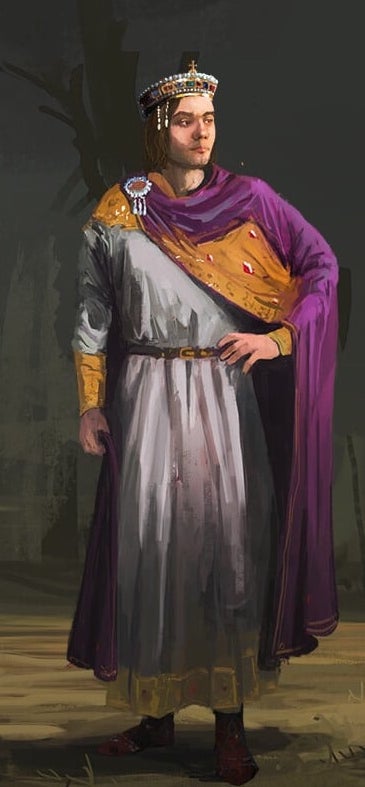
With the engagement broken off, Irene organized a bride-show in the Magnaura of the imperial palace wherein several daughters of noble families from across the empire were brought there and the imperial heir was to choose one of them to be his wife, instead here the teenage Constantine had no say and instead Irene chose the bride for him which was the pious and plain looking Maria of Amnia, a Greek from Central Asia Minor and the reason for this- in this story’s case- was that Irene wanted her son to still think she was the most beautiful person to him. Constantine VI however totally resented not being able to choose his wife, but he still married Maria out of respect for his mother but because of not being able to make his own choice even in choosing his wife, this is when the bitter conflict between Constantine VI and his mother would begin and from here on, Constantine would never want to follow his mother’s advice and would even distance himself from her. By 790 with Irene still never wanting to let go of power, Constantine VI at 19 came up with a plot and here betraying his cause of restoring icons as to gain a big support base, he sided with the still Iconoclasts in the army who hated Irene, and the aim of their conspiracy was to banish Irene to the still Byzantine-held Sicily and have all her ministers including Staurakios banished. Irene however learned about the plot before it came to full effect and to punish Constantine for plotting against her, his own mother, she put him under arrest in his room in the imperial palace and his conspirators either arrested and turned into monks. Some months later though, civil war was about to erupt between the forces loyal to Irene and those loyal to her son, and the majority of them from Asia Minor was loyal to Constantine VI proving they could defeat the forces of the European side of the empire loyal to Irene, and so here later in 790 the army of the Armeniac Theme rebelled proclaiming Constantine VI as the sole emperor and fearing the possibility of civil war, Irene released her son to please the troops loyal to him. Though when being released, Constantine VI was still against his mother and so to get back at her for putting him in room arrest, he in return had her placed under house arrest at the Palace of Eleutherius outside Constantinople which she had built, while a number of her ministers were banished to the far corners of the empire and Staurakios was at first whipped in public and then exiled to the Armeniac Theme. Constantine VI now was fully in charge of the empire and highly popular, except by having no proper training to run an empire from his mother and her officials, he proved to be weak in decision making, easily persuaded, could not think for himself, and the worst part was that he soon lost a lot of allies when he showed that he was not really a real Iconoclast and only used it as a way to gain support.

In 791, the new Abbasid Caliph Harun al-Rashid who back in 782 attacked Byzantine Asia Minor, after coming to power over the Abbasid Caliphate in 786 launched another attack into Byzantine Asia Minor, and here the Abbasid Arabs won a victory over the Byzantine forces, thus Constantine VI’s incompetence in ruling the empire was exposed especially when he agreed to pay heavy tribute to the Abbasids. Now Harun al-Rashid on the other hand happens to be one of the most renowned Arab leaders that the famous story Arabian Nights features him as one of its leading characters. As for Constantine VI still wanting to prove he was not overall incapable in leading the empire, in the following year (792), he personally launched a campaign against the Bulgars in the north leading the army in battle himself, although the Bulgar khan Kardam here already knew the Byzantine army was weak hearing of their defeat to the Arabs the previous year and so he used this to his advantage. Constantine VI unsurprisingly headed off to battle with his troops poorly prepared, and with him not knowing about the landscape of the battlefield lost here at the Battle of Marcellae, in which was the exact same place his grandfather Constantine V defeated the Bulgars back in 756. The Battle of Marcellae here in 792 then ended with a significant part of the Byzantine army destroyed, most of the Byzantines’ valuables and coins as well as horses seized by the Bulgars, and even the emperor’s tent captured by Kardam whereas Constantine VI fled to save his life returning back to Constantinople. Following his defeat, Constantine VI even lost more allies that he had no choice but to release his mother Irene from palace arrest and return her to power as his empress-regent and by doing this, the Iconoclast troops especially the Tagmata saw this as Constantine’s complete betrayal of them that later on in 792, the Tagmata dragged Constantine’s uncle Nikephoros now a priest out of the monastery he was sent to and proclaimed him for the 3rd time as emperor, though this time he no longer had any intentions of being emperor and had nothing against Constantine VI and so did his younger brothers. When hearing of this plot against him, Constantine VI had his uncle Nikephoros brutally blinded even if he had no intention to rebel while for the other uncles Christopher, Niketas, Eudokimos, and Anthimos, Constantine only had their tongues cut out even if they were completely innocent as here in this story, Constantine found his uncles to be nothing but very loud and annoying anyway, and afterwards, they were all imprisoned in a monastery outside Constantinople. With Irene restored to power, she also restored her exiled ministers including Staurakios back to their positions while here the eunuch Aetios would come into the picture already rising to prominence in the imperial court.
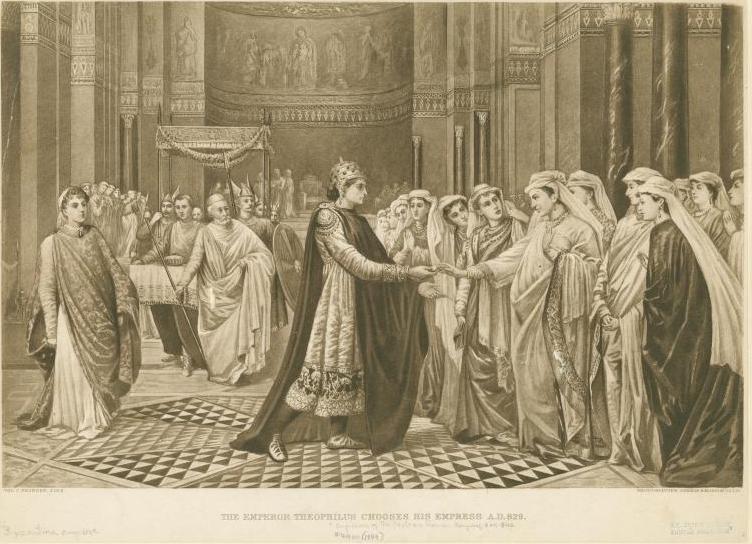

Watch this to learn more about Constantine VI’s reign (Thersites the Historian).
The Background Part III- Irene’s rise to Sole Empress

In the present setting, time had already gone by and here it was already early in the year 801 with Irene still as sole empress while Tarasios who was appointed as Patriarch of Constantinople back in 784 was still the reigning patriarch. On this winter day in 801, a function was to be held later that night wherein ambassadors from the Frankish Kingdom were to come over to Constantinople to bring in some news, and Irene here was anxious of it. Irene though was also thinking of what to wear for the event and what she had in mind was something quite unusual and this dress of hers was in her dressing room in the palace and as she headed there, she met up with her old friend and sister-in-law Anthousa, Leo IV’s twin sister who was now 51 here but just like Irene, she still looked like she hadn’t aged too.

Now Anthousa had not appeared in quite a long time, but in the past when Irene was empress-regent for her son, she asked Anthousa a number of times to be her co-regent but Anthousa refused as she was a simple ascetic woman who chose to live a simple life. In real history, Anthousa spent most of her life as a nun but in this story’s case, she lived half the year every year as a nun in a nunnery and the other half in the imperial palace. Anthousa like all women in her Iconoclast family was devoted to religious icons and in rebellion against her father Constantine V many years ago who asked her to marry, she instead refused and chose a monastic life in which she would live half the year. Just like her twin brother Leo IV, Anthousa also had strong Oriental features such as small gray eyes, and like Leo she had brown hair and pale skin but was much taller compared to Leo, though despite living an ascetic life, in the palace she wore the silk palace dresses worn by imperial princesses but beneath it, she wore an uncomfortable hair-shirt which was a vest made up of irritating animal hair worn for repentance purposes, which reflected her vow of simplicity and here she was wearing just that beneath her outfit. Irene on the other hand was the opposite and loved wearing elaborate dresses which was something she adapted to all these years in the palace and right here as she was going to be all dressed up, Anthousa who was also her personal assistant was to fix her hair and help her dress up. When Irene put on a white silk dressing robe as Anthousa was to fix her hair, Irene would continue telling her story on how she became the sole empress, and it was here in 792 when she was restored to power by her son when she asked Anthousa to be her co-regent, but Anthousa refused.

In 792, despite Irene coming back to power, Constantine VI still asserted himself as the effective emperor, though Irene was still more popular here and she would do all it took to make her son fail in order to fully get him out of the way and this included, in this story’s case, encouraging him to brutally suppress a revolt in the Armeniac Theme wherein Constantine had the rebellious general there Alexios Mosele blinded, and out of his own cruelty he massacred a large number of the rebellious population in the Theme, thus the people of this Theme who had strongly supported him became his biggest enemy. Constantine VI though with his wife Maria of Amnia back in 790 had a daughter named Euphrosyne, thus making Irene a grandmother at 38, although with his wife Constantine failed to produce sons and in 794 when getting tired of his boring wife, he chose to divorce her which was an illegal act, although Patriarch Tarasios ignored it and the divorce happened, but it created a lot of controversy as it was against Church Law making many monks turn on Constantine VI and side with Irene. Constantine VI later in 795 would marry his long-time mistress Theodote who was a Greek beauty, though this would even make the tensions between him and his mother even stronger, and here with the monks supporting Irene because of her devotion to icons, her support base was even stronger than that of her sons’.

In 795 as well, Constantine VI launched another campaign against the Bulgars in which he was successful at this time, although no one cheered for him in the empire as he was rapidly losing his popularity. In 797, Constantine VI resumed his campaigns in the east as Caliph Harun al-Rashid continued raiding into Asia Minor again but before even going that far as when Constantine was at the baths in the city of Prusa in the Opsikion Theme right across the Marmara Sea from Thrace, he received fake news that the caliph withdrew his forces before he even began the war, although it was only Irene who came up with this as a way to get her son back to the capital, and so Constantine returned to the capital, however when returning he just realized literally everyone turned on him that people threw stones at him and shouted insults at him calling him “loser” and “idiot”. Constantine then decided to flee Constantinople when seeing everyone was against him but when reaching the dock at the Bosporus, the elite Vigla guards of the Tagmata had already been bribed by Irene, therefore they seized Constantine, beat him up, chained him, and dragged him to the imperial palace. Here on August 17 of 797, the unconscious Constantine VI woke up in the exact same purple room he was born in 26 years ago in 771 where he was met by his very enraged mother who was tired of having to deal with her incompetent and cowardly son and ruling with him, and thinking imprisoning or exiling him was not enough as someone would again return him to power one day, Irene would instead commit one of the most brutal acts in Byzantine history, and the dark and creepy purple room where he was born in 26 years ago was the last thing Constantine would see as here, the brutal emperor was brutally blinded by a court eunuch which in this story’s case was Aetios acting on Irene’s orders. Some sources including Robin Pierson in the History of Byzantium Podcast say that with the blinding being so brutal, Constantine VI would die shortly after, although this story would go with the version that after his blinding, Constantine VI was sent by ship just to one of the islands in the Marmara Sea known as the Princes’ Islands just a few kilometers from Constantinople to be put in monastery arrest for the rest of his life dying years later. Just right after Constantine VI was blinded, an unnatural natural event took place in Constantinople which was a solar eclipse and here for 17 days straight, the sky turned black although right here as Justinianus put it, Irene did not feel any sense of guilt at all and instead totally felt like she did not care while the rest of Constantinople’s people saw this solar eclipse as an act of God punishing Irene for blinding her son, and although Constantine VI was hated, the people still found what Irene did to him a bit too much.

Back in 801 as Anthousa continued doing Irene’s hair, Irene recalled this solar eclipse that began her reign as the sole empress in 797 and even though she was already the sole empress, she was not fully secure and popular as everyone knew she blinded her son, and even for the Byzantine society that was so used to all this violence and blinding, they could not accept the fact of a mother blinding her son for her own gain, although Irene only saw it as necessary as her son was ruining the empire anyway with his brutality and incompetence. Irene’s first act as the sole empress was to compensate for this vile act to make herself more loved again, and to do this she had to do something no Byzantine ruler would do which was to cut taxes for the people of Constantinople in half as well as to lower the taxes for imports and exports, though for the nobility most saw this as an act of weakness shown by Irene, as a strong emperor would always think of increasing taxes. The people of the empire meanwhile were not as surprised with Irene as the sole empress as ever since the early days in the 5th century, the Byzantine Empire had moments of being ruled by a strong woman figure behind her husband, son, or brother, but Irene was the first one to rule alone not as a regent but as an empress with full imperial power. In the history of Byzantium, the empire had seen everyone from aristocratic or low-born generals, to palace officials, common soldiers, even a tribal chieftain from the mountains of Isauria, and a low-ranking tax official become emperor, but here it was unusual as it was the first time a woman who was not even from the ruling dynasty but instead only married to it that became the ruler of the empire.
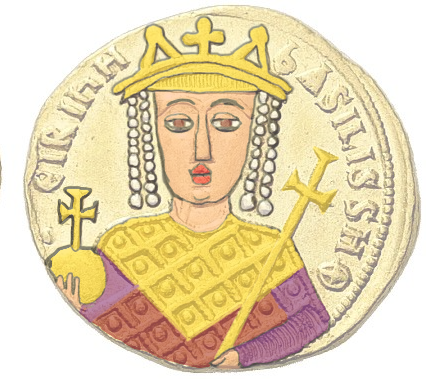
On the other hand, with Irene being a woman, a portion of the army in Asia Minor in 797 rebelled and for the 4th time chose to elevate the Caesar Nikephoros despite having been blinded back in 792 as emperor. Irene discovering another plot to make her brother-in-law Nikephoros emperor again acted quick and had Nikephoros’ 4 younger brothers blinded too, and then had them all moved to Athens to get them further away where Irene’s surviving family members there would watch over them. However, in 799 another plot made by the army in Greece which was that of the Hellas Theme again chose to proclaim Nikephoros as emperor now for the 5th time and when hearing about this, Irene had all 5 brothers moved out of Athens to one of the Princes’ Islands in the Marmara near Constantinople- though not the one Constantine VI was in- to keep them under closer watch. At the same time, the threat of the Abbasid Arabs was still at large in the east and Irene not wanting to continue conflicts with them as there was so much in her mind, chose to pay tribute again to Caliph Harun al-Rashid, which was an amount even bigger than what her son had to pay before. Irene then moved on to talking about her illness just 2 years earlier wherein Staurakios and Aetios used it to have a power struggle between themselves but Irene on the other hand in this story’s case, when getting this illness would start feeling some guilt for blinding her son, seeing the illness as a punishment from God for doing just that. Here in 801, Irene was now feeling guilty for the blinding but with a big function that was to happen later that day, Irene had to hide her emotions, which was something she learned when being trained in the proper court etiquette many years ago. With Irene’s hair now completed styled in a way with her long wavy hair put down in an orderly way, she still remained seated as Anthousa who was to dress her up picked up the dress for Irene which was just hanging.
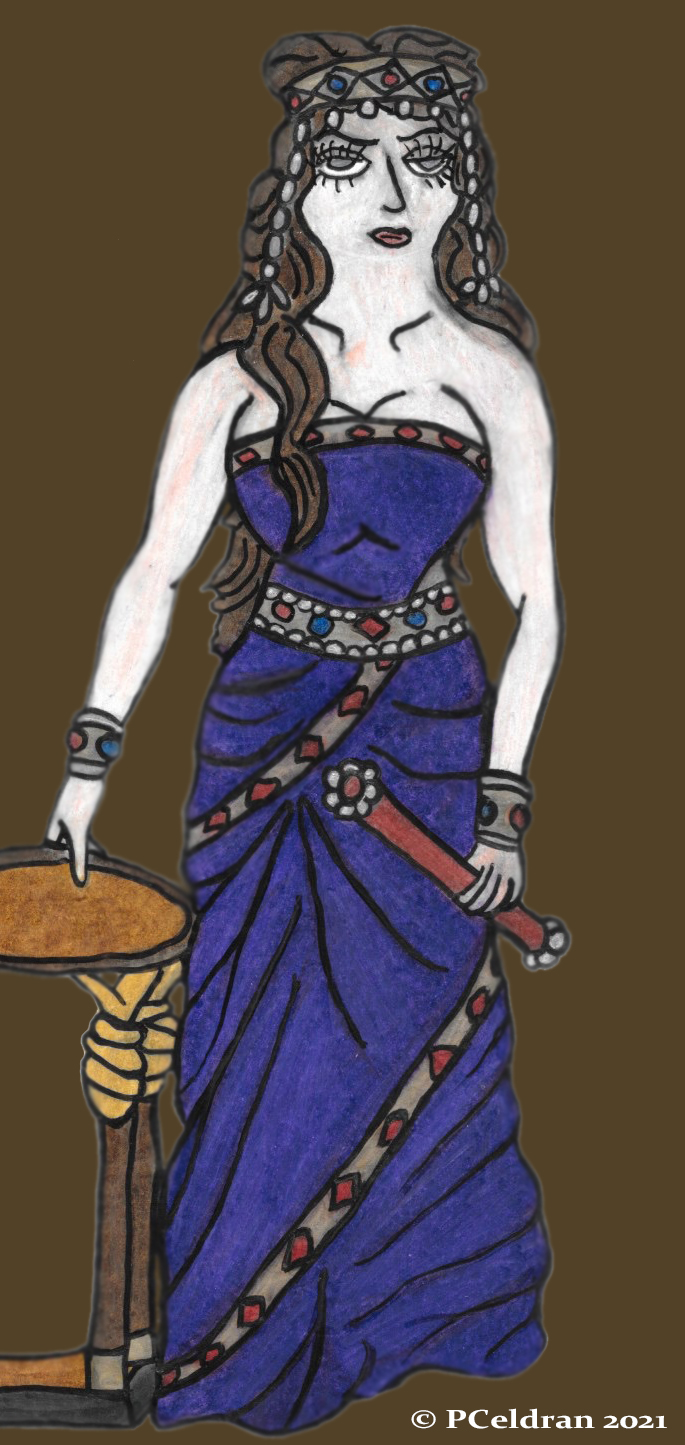
The dress Irene was going to wear was something unusual for the conservative Byzantines as it showed a lot of skin completely exposing her shoulders and upper chest, though in length it extended all the way to the floor, and this purple silk dress lined with gold was to be wrapped around her body wherein the dress itself went from the top of her bust down to her feet. As Irene stood and removed her dressing robe dressing down to her underwear- the same type mentioned earlier- Anthousa here did the job of wrapping the dress around Irene’s body as the cloth that was basically the dress was too heavy for one person to do the job of dressing up. Here, Irene started with holding the long cloth over her skin at her stomach area while Anthousa began wrapping it around Irene’s body passing through the back heading upwards and coming back to the front again wherein the cloth was wrapped over her bust, and then wrapped to the back again where the dress would basically spiral around her body ending back at her feet again.

To keep the dress in place so that it wouldn’t slip out considering that the dress itself was basically a large piece of cloth with no buttons or zippers to hold it up, Irene put a silver jewelled belt around her waist while Anthousa pinned the back of Irene’s dress with a pin, which also pinned her underwear for her chest to the dress in order to conceal it, as the back part of Irene’s dress exposed more skin at her back below the level of her chest underwear. In addition as a way to show her true shape of body, Irene had this dress wrapped tightly around her body, and when fully done she pushed her bust up a bit by tightening the top of her dress to show its full form as well before putting on the rest of her jewellery. Now this revealing purple wrap-around strapless silk dress had already appeared in the universe of this Byzantine Alternate History series in chapter III worn by the 6th century empress Theodora (527-548) and her successor empress Sophia (565-578), and as for Irene in the universe of this fan fiction series, when discovering old documents from the 6th century, she decided to replicate this dress with the exact same style, although no one really saw her in it except for her late husband Leo IV once when he was emperor between 775 and 780 and her son Constantine VI as Irene always tried to make herself look attractive in front of them. As the end result, Irene at 48 still looked exceptionally attractive in figure wearing this, and all prepared for the function that night wherein it would be the first time she would be seen wearing it in public.
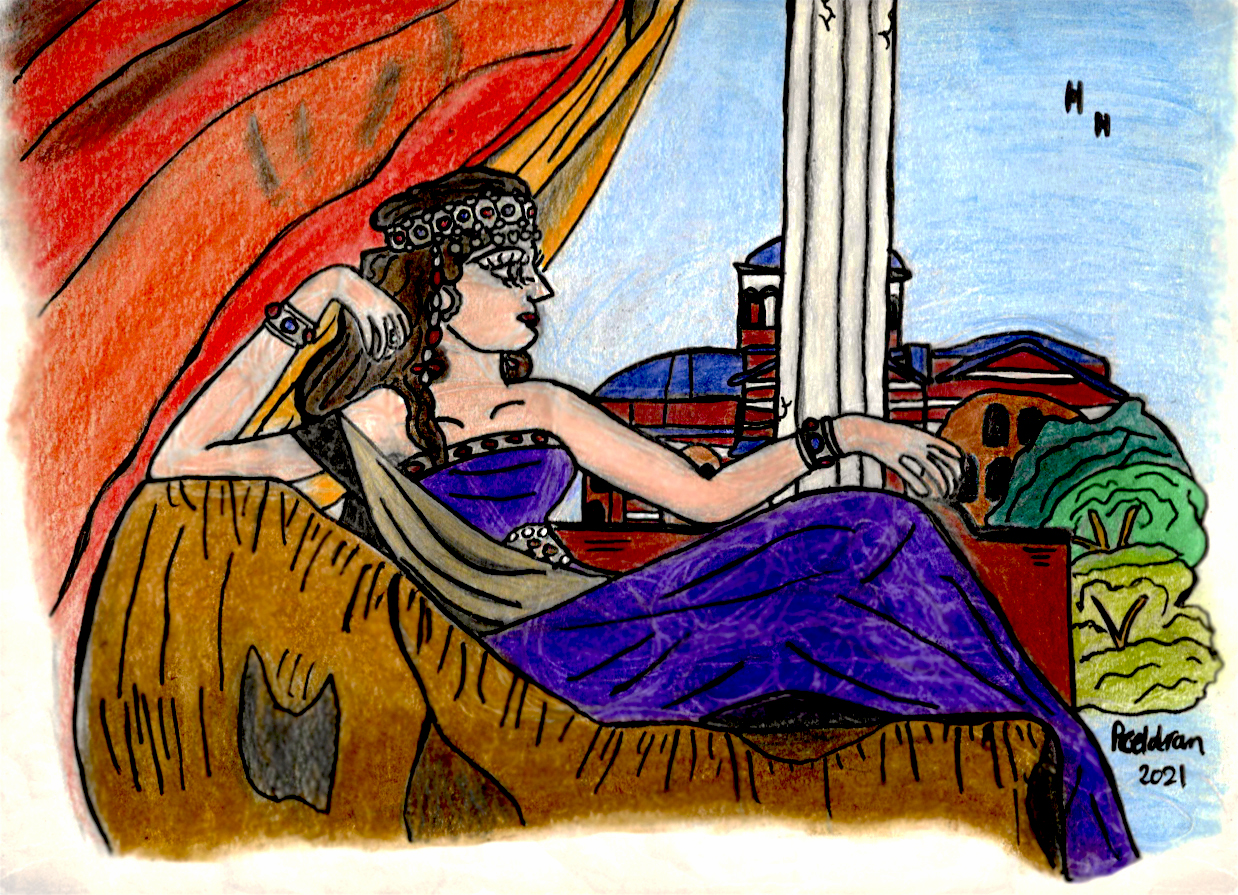
After Irene got all dressed, the function at the Magnaura of the Imperial Palace began, and the important guests included Irene’s loyalists Aetios, Anthousa, Nikephoros the Logothete, the patriarch Tarasios, and Irene’s cousin Theophano Sarantapechaina all the way from Athens, a woman who looked much like Irene except younger and a bit on the fat side though still attractive with thick long hair and brown eyes. Theophano of Athens was indeed a real historical character who became empress later on, though it was only said she was a relative of Irene, however in this story’s case Theophano would be Irene’s younger first cousin and the daughter of her uncle Constantine who here was the current Strategos of the Hellas Theme. Of course, in this function there was sophisticated food and cocktails as well as wines from Greece and Asia Minor, though when seeing Irene enter, some people were shocked to see how much of her bare skin was exposed when wearing that dress but others were in awe seeing how attractive she still was even at 48, but on the other hand the dress was very comfortable and soft for Irene despite it being loose and unstable as it was basically just a large piece of cloth wrapped around her body. The main purpose of this function however was that everyone was here to receive word from Charlemagne’s Frankish Kingdom in Western Europe, although news did not come from Charlemagne’s capital of Aachen but from Rome itself, which now had been independent from the Byzantine Empire since 754 and put under the Papal States ruled by the pope, though under the protection of the Frankish Kingdom.
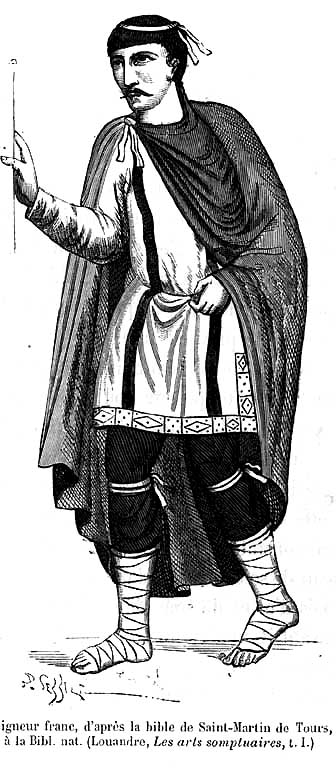
The Frankish ambassadors were already right here in the palace looking very distinct with their unkempt blonde hair and beards while dressed in wool tunics and cloaks with at least some gold trimmings, except their attire was not as sophisticated like the silks the Byzantines here were wearing. When meeting Irene, the ambassadors already told her the headline of their report in Latin, which Irene here in this story knew a bit of, though when hearing it she seemed to dread it, and afterwards she announced it to everyone in Greek. The dreadful news now that Irene announced to everyone here was that on Christmas Day of the previous year (800), the pope in Rome Leo III– not to be confused with Emperor Leo III the Isaurian- crowned the King of the Franks Charlemagne “Roman emperor” or Augustus for his valor and dedication to the Church of Rome, and even though his title of “Roman emperor” was only honorary, he still had an empire a lot larger and more powerful than that of the Byzantines. The people in the room were deeply offended hearing this while both Aetios and Nikephoros the Logothete even shouted out here “How dare he! He has no claim to our empire, he even has no trace of Roman origins!”, though Irene remembering her court training did not react in such a way, instead she only remained still and thought of what the news could mean, but instead she only remembered Charlemagne as the man whose daughter her son was supposed to marry in the 780s. For the Byzantines meanwhile, hearing of a Germanic Frankish barbarian in the west which was Charlemagne who had no trace of Roman origins was insulting and had hurt their pride as the Byzantine Empire being the Eastern Roman Empire was the legitimate Roman Empire that in fact in their time they even called themselves that, basically Romania meaning “Roman Land”, and them as people of their empire called themselves Romaioi in Greek meaning “Romans”, while the name for them “Byzantines” which these alternate history stories use was in fact only a 16th century invention used only after the Byzantine Empire was gone. If you also remember back in chapters I and II of this alternate history series respectively set in the 4th and 5th centuries, the Byzantines or Eastern Romans were still referred to as “Romans”, though after the end of the Western Roman Empire in 476, by chapter III of this series, the Eastern Romans were already referred to as “Byzantines”. The Byzantines of Constantinople had every right to be the legitimate Roman Empire as their city was founded by the Roman emperor Constantine I the Great in 330 as the empire’s new capital, the eastern half of the empire based in Constantinople too was the superior empire over the western half after the old Roman Empire was divided in 395 following the death of Emperor Theodosius I the Great (r. 379-395), and after the Western Roman Empire based in Ravenna was dissolved in 476 the east was the only surviving Roman Empire whereas the west fell to several barbarian kingdoms. Now back in this function in the palace, after hearing the news of Charlemagne’s coronation as “Roman emperor”, the people attending feeling the pride of their empire being insulted all left leaving only Irene and her cousin Theophano in the room before both went back to their quarters in the palace. Irene though was deeply angered inside as in the entire history of Byzantium, foreign rulers especially from the west would get the approval of the Byzantine emperor to rule their own lands, but now everything changed with Charlemagne not only not getting Byzantine approval to be crowned but to be crowned as a “Roman emperor” when there was still in fact a Roman Empire (Byzantium), and this could have been because for one the pope who crowned him was no longer answering to the Byzantine Empire after all these years of conflict with them and Iconoclasm, and also because Irene was a woman therefore she could not be accepted as a Roman emperor by Charlemagne and the pope, therefore times had totally changed.
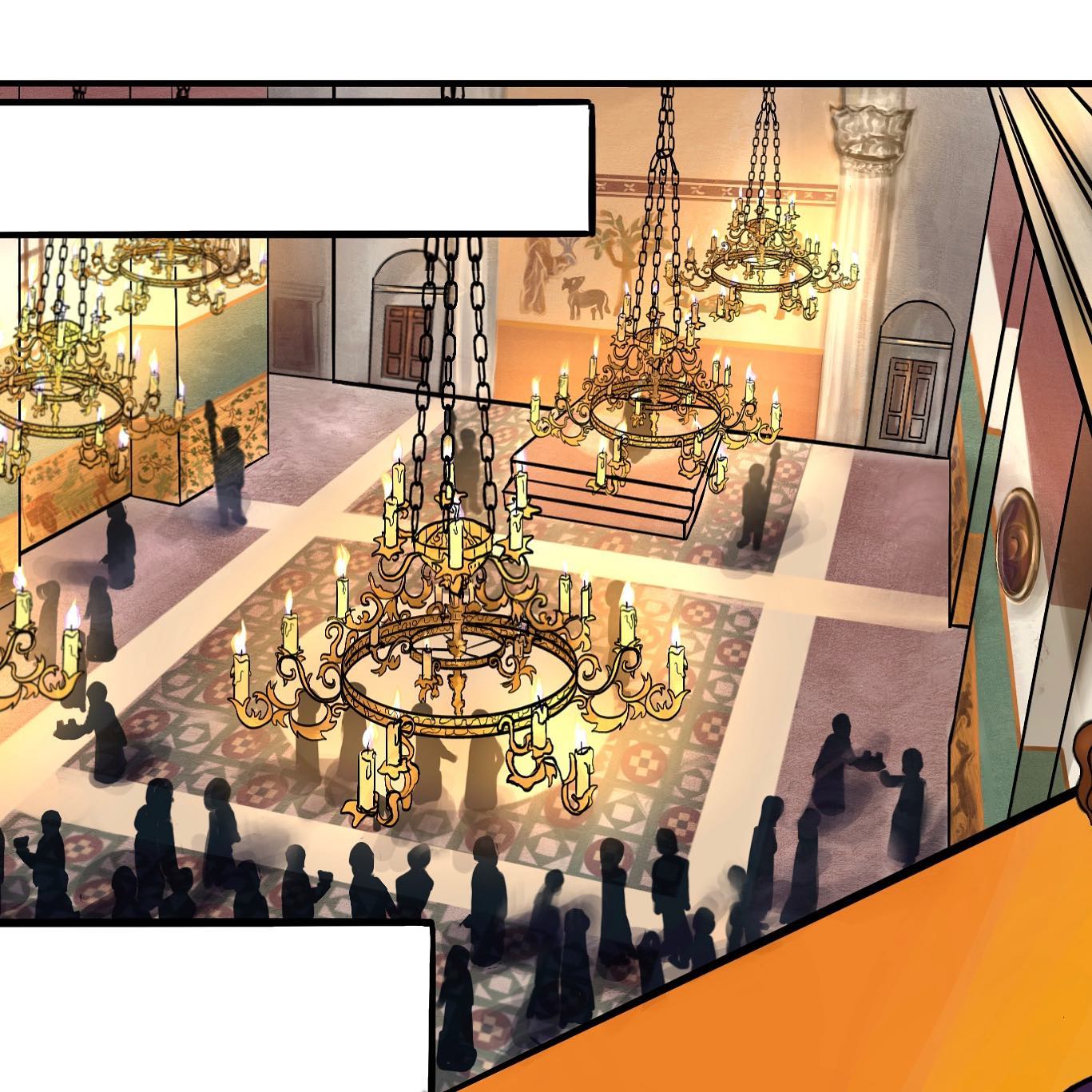
Watch this to learn more about Irene’s reign (Thersites the Historian).
The Climax Part I- Charlemagne and Irene’s Marriage

In the year 800 as the 9th century opens, the world looked all different compared to what it was in the previous 3 centuries as here in the western part of the world, a massive empire covered what is now all of France except the northwest peninsula of Brittany which was only a vassal state of it, almost all of what is now Germany, as well as Austria, Northern Italy, and Northern Spain and this empire was the Frankish Empire (Carolingian Empire) of Charlemagne. The Middle East as well as North Africa and all the way east up to Central Asia and what is now Pakistan was under the Arab Abbasid Caliphate of Baghdad now in a golden age under Caliph Harun al-Rashid, although most of Spain which was under the rule of Islam did not fall under the new Abbasid Caliphate but rather still remained a remnant state of the old Umayyad Caliphate known as the Umayyad Emirate based in the city of Cordoba. In the far east meanwhile, China was under the Tang Dynasty which ruled it for already almost 2 centuries and was still strongly ruling the land. In the middle of this all was no other than Irene’s Byzantine Empire and compared to the 3 other major empires of this age which was that of Charlemagne’s Frankish Empire, the Abbasid Caliphate, and the Tang Chinese Empire, Byzantium looked the weakest, most battered, and most bankrupt out of all of them and because of the current state the Byzantine Empire was in, Charlemagne thought that with the size and power of his empire, he also had every right to be the rightful Roman emperor, even if he was a Frank and so were his people, and his only connection to Imperial Rome being that he and his people were Catholic Christians in which the faith dates back to the time of the old Roman Empire made the empire’s official religion- back when it was still one with the Orthodox faith- in 381 at the Council of Constantinople led by Emperor Theodosius I.

Now if you remember, the Frankish Kingdom was first mentioned in chapter II of this series as well as in chapter III when it was founded by King Clovis I in 481 using the disintegration of the Western Roman Empire to his advantage in taking over what was once Roman Gaul beginning in the north and in a quick amount of time he consolidated his rule and that of his Germanic Frankish people over Gaul (France) by crushing the last Roman remnant state there known as the Kingdom of Soissons in 486, and in 507 defeating the Kingdom of the Visigoths that had occupied Southern Gaul forcing the Visigoths to flee south to Spain and thus the Franks consolidated their rule over Gaul which under them became Frankia. Clovis I died in 511 establishing the Merovingian Dynasty of the Franks which lasted for more than 2 centuries ending in 751 when the last Merovingian Frankish king Childeric III was deposed and thus rule over the kingdom known as Frankia was passed on to Pepin I (r. 751-768), Charlemagne’s father who was also known for recognizing Rome as independent from Byzantium making it the Papal States.
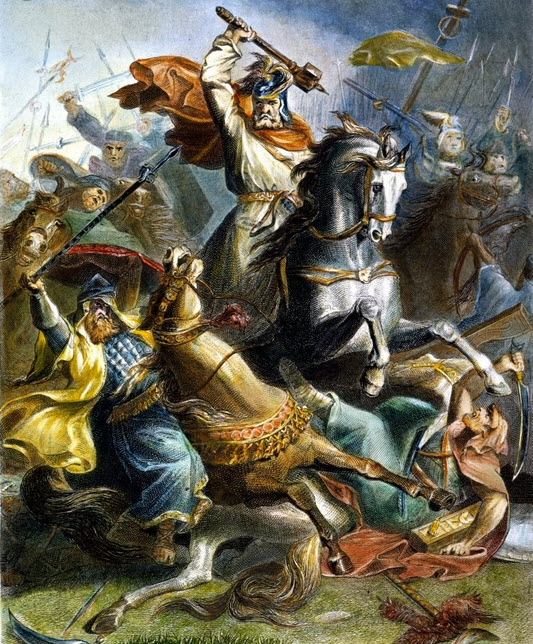
Meanwhile Charlemagne’s grandfather who was his father Pepin’s father was the famous Frankish general Charles Martel, who if you recall from the last chapter defeated an invading force of the Umayyad Arabs from Spain that had invaded Frankia at the Battle of Tours in 732, and Charlemagne whose real name was Charles was named after this grandfather. Charlemagne or Charles I then was born in 742 though his place of birth is unknown, except some say it was either Aachen in Germany or Liege in Belgium. With the death of his father Pepin I in 768, Charles succeeded as ruler of the Frankish Kingdom together with his younger brother Carloman I as co-rulers except both were at odds with each other and when Carloman suddenly died in 771, Charles took over the entire Frankish Kingdom. As the Frankish king, Charles I’s mission was to unite all Germanic people into one empire, and doing this required a lot of military campaigns and conquests and Charles himself was a talented military leader and warrior.
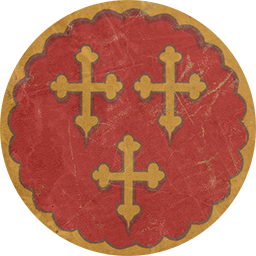
Earlier on in his reign, Charles I had fully conquered the Lombard Kingdom in Italy in 774 that had been there since 568 which had been a major threat to the pope in Rome for years and with this conquest, all of Northern Italy fell under the rule of the Franks, and at the same time the pope in Rome saw Charles and the Franks as a new ally they could trust as they got rid of the Lombards for them and unlike the Byzantines who the pope saw as untrustworthy and destroyers of sacred icons, they saw the Franks in the opposite way as respectful and trustworthy Christians despite being warlike and greedy people. At the same time as his conquest of the Lombards in Italy, Charles I was also busy with his wars against the still Pagan Saxon people of Northern Germany which would go on for 3 long decades beginning 772, and when Irene considered her son Constantine VI marrying Charles’ daughter Rotrude in 781, Charles actually could not really focus on this diplomatic move more because he was too busy with his war against the Saxons.

At the same time too, Charles had launched campaigns in the east against the still surviving Avar Khanate in Central Europe that had been a threat to the Byzantines back in the 7th century, and as part of his campaigns in the east and south, he put what is now Austria and Bavaria under his rule. Charles too had campaigned in Northern Spain preventing the advance of the Umayyad Emirate there and in the process, he created a number of small states in the Pyrenees Mountains bordering what is now France and Spain known as the “Spanish Marches”, and one of these states created here still exists today as the small country of Andorra. For all his successful conquests which was also aimed at converting the still Pagan people he conquered like the Saxons and for giving a generous amount of money to the Church, Pope Leo III in Rome decided to crown Charles becoming known now as Charlemagne or “Charles the Great” (Carolus Magnus in Latin) as an emperor equivalent to what would be a Roman emperor in authority, although the pope’s main intention- in this story’s case- to do this was to assert the power of the west as the dominant empire over the weakened Byzantines which was ruled by a woman, therefore seeing that the position of the Roman emperor that was seen here as the ruler and protector of the civilized world was vacant.
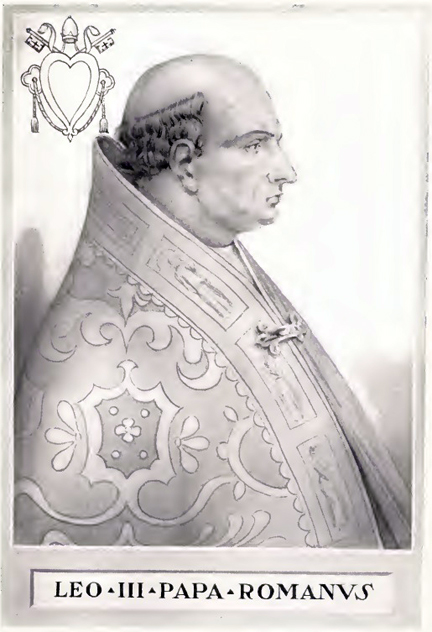
Now the Franks here had stuck to a 3-century old succession law known as Salic Law (Lex Salica in Latin) dating all the way back to 500 made by their first king Clovis I where a major statement of it says “But of Salic land no portion of the inheritance shall come to a woman: but the whole inheritance of the land shall come to the male sex”, literally meaning women were excluded from inheriting land to rule over it, and although this law was the law over the Frankish lands and serves as a basis to modern European law, it did not apply in the Byzantine Empire. Charlemagne on the other hand never really made a claim to the Eastern Roman Empire, and in fact Charlemagne’s biographer Einhard (775-840) who knew Charlemagne in person says that Charlemagne was surprised when the pope decided to crown him as an emperor for there has been no ruler in the western world that held the title of “emperor” or more particularly “Augustus” since the last Western Roman emperor Romulus Augustus who was deposed in 476 while the rest of the barbarian rulers after him only used the title of “king”, although another interesting fact about Charlemagne being crowned as an Augustus was that the pope saw him as the only Augustus for the rulers of Byzantium even stopped using this title since the reign of the Byzantine emperor Heraclius (610-641), and instead used the Greek word for emperor “Basileus”. The Franks meanwhile despite originally being Germanic barbarians saw themselves as the most civilized of the Germanic people and the cultural successors of Imperial Rome even if their peoples’ DNA was not Roman or Italian but Germanic, and it could also be for this reason why Charlemagne being a Frank was crowned as a Roman emperor in 800. Now having been crowned as a Roman emperor, Charlemagne had to make sure he did his part in it which meant that in his capital of Aachen, he constructed impressive buildings such as his imperial palace and the cathedral in Romanesque architecture, as well as the baths as the city was built in natural springs, but also, he improved arts and culture adopting the Byzantine style of mosaics for his buildings and their lavish fashion as well after learning about the lavish Byzantine world from ambassadors he sent there.
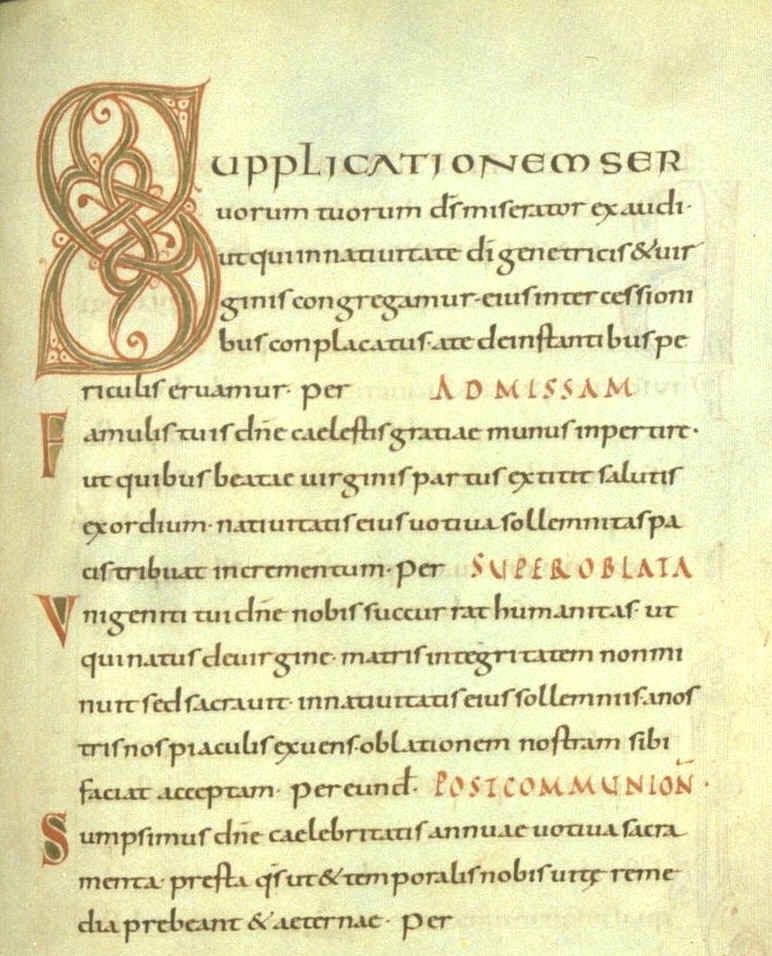
In addition, he styled Aachen to look like the former Byzantine capital of Italy which was Ravenna, and to promote arts and culture in his empire to make it match that of Byzantium, he spent a lot of money on academies and teachers, and also he would set a standard writing for the Latin alphabet known as the Carolingian Minuscule, and overall his project in promoting art and culture for his empire would be forever remembered as the “Carolingian Renaissance”, Carolingian coming from his name Charles as well as his dynasty named after Charles Martel, his grandfather.

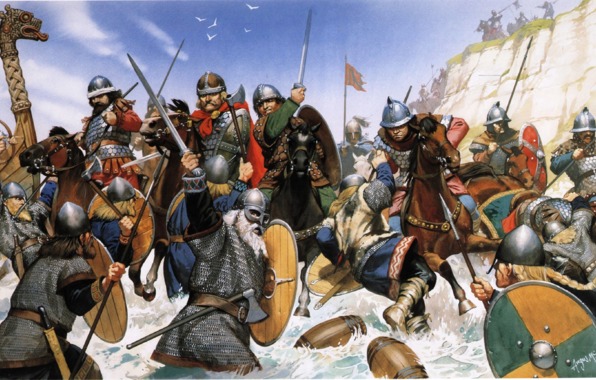
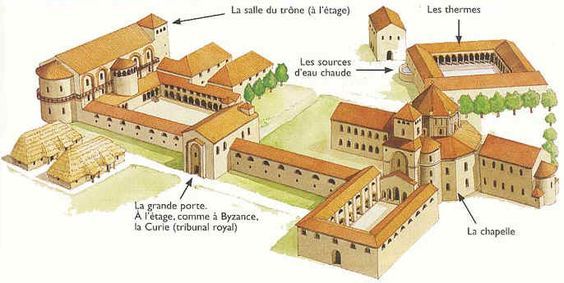
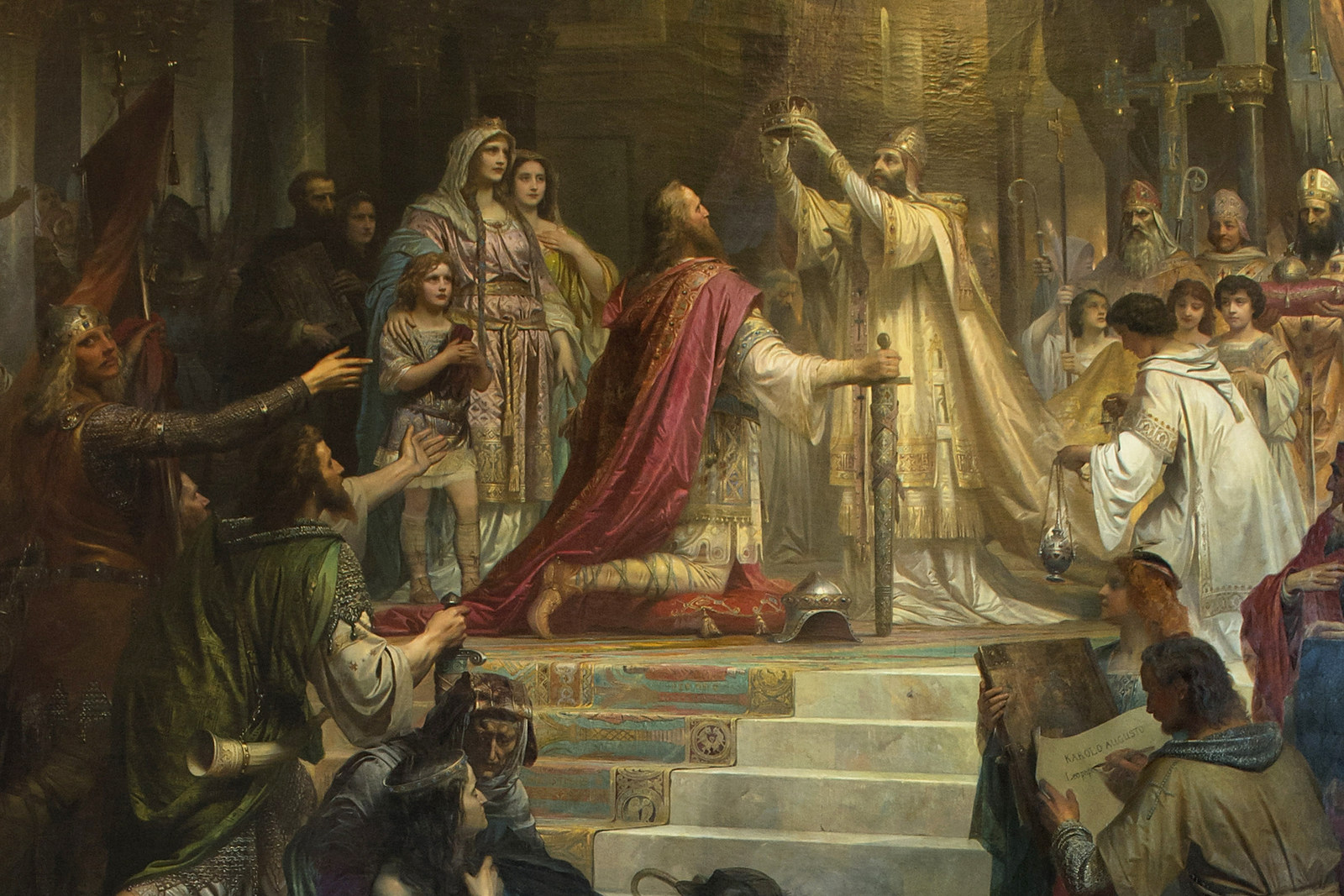
Back in Constantinople, Irene when hearing all about Charlemagne’s achievements in the west which was not only in conquests but in introducing a cultural Renaissance in the forsaken lands of Western Europe that slipped out of Roman control for more than 3 centuries which included even issuing laws called Capitularies in the style of the Roman emperors was impressed. On the other hand- in this story’s case- Irene also felt a sense of insecurity that someone in the west who was not even a Roman but a Germanic Frank was achieving the same kind of successes the Roman (and Byzantine emperors) did, and not wanting to feel left out, Irene thought of coming up with a solution to join the two empires together back into one single Roman Empire again like it was before 395, and if Irene almost attempted at doing this before by considering marrying her son Constantine VI to Charlemagne’s daughter Rotrude, she this time thought of doing it again but instead it would be her turn to marry Charlemagne himself, as Irene for over 20 years now was a widow and Charlemagne too was a widower whose wife Fastrada died back in 794.

Now history is never really clear if Charlemagne proposed to Irene to marry her but the same contemporary Byzantine source of Irene’s time, Theophanes the Confessor says Irene considered marrying Charlemagne for political reasons, but this scheme was immediately frustrated by her powerful eunuch advisor Aetios. In this story’s case, Irene here mid 802 after receiving a letter from Charlemagne who was asking to marry her as a way to unite their empires and save her empire from falling apart and being bankrupt considered the offer as she knew Charlemagne’s empire being larger was also richer, while Charlemagne also saw this marriage as necessary as he did not also want his empire to be in conflict with another Roman Empire, so it was better that two empires would stand stronger as one. Here in this story, Aetios would be first to discover Irene’s objective to marry Charlemagne and unite their empires and immediately he objected to it, not because he was loyal to Irene and did not want to see the empire fall to the hands of a foreign barbarian, but rather it was for Aetios’ own gain as deep inside, he was actually conspiring to take over the throne if Irene were to die, although being a eunuch he could not rule the empire alone but rather rule through his brother Leo who was to be his puppet and in 802, Aetios being the prime minister of Irene’s Byzantine Empire had appointed Leo as the Strategos of not one but two Themes which were Thrace and Macedonia, therefore making him more powerful than a Strategos which in title was a Monostrategos.
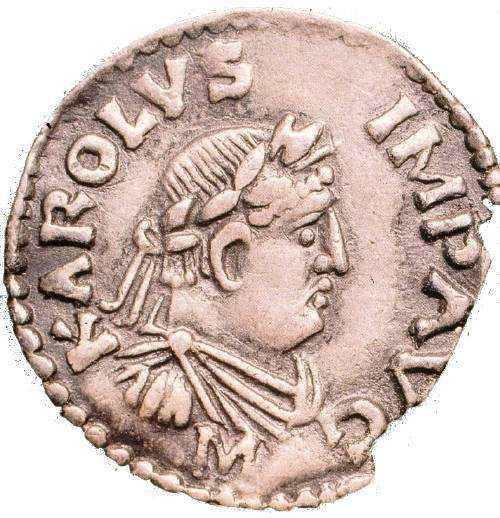
Irene meanwhile also had mixed feelings as she never met Charlemagne personally and therefore did not know what he entirely looked like except through his coins, but more than that did not know a thing about his personality whether he would be a lazy and useless husband or an abusive and over-controlling one, but she did know that he was only 10 years older than her which was not much of a big issue and at the end, this marriage was only to be for political reasons as she never intended to move to his capital of Aachen anyway or to sleep with him. For this story, Justinianus says Irene despite marrying Charlemagne soon would have never planned to move to Aachen as she was a proud Byzantine. At the same time as Irene was pondering the thought of marrying Charlemagne in her study in the Great Palace, an old man wearing the imperial purple cloak or Chlamys and a crown suddenly appeared out of thin air and this old man happened to be the ghost of no other than the legendary 6th century Byzantine emperor Justinian I the Great (r. 527-565).

Irene here was both shocked and in awe of seeing her imperial idol, the great emperor a lot of rulers after him from all over the known world looked up to, but Justinian I’s ghost was disgusted seeing the current situation the Byzantine Empire was in, not because it was ruled alone by a woman but because of how much all the lands he worked so hard on to conquer in his reign especially in the west was all lost, and that toxic schemes and infighting became the new normal especially with Irene’s eunuchs Aetios and the late Staurakios before. Irene then told Justinian’s ghost that she only wants to do the right thing which she sees with her proposed marriage to Charlemagne as this was to get back all the lands in the west they had lost and in fact gain even more than what they had in Justinian’s time, but the ghost told her that she must be careful with what she wishes for when marrying Charlemagne as he is not a Roman but a barbarian and Justinian definitely was someone who resented barbarian rule. Justinian however came to agree with Irene’s proposal hearing from her that Charlemagne even as a barbarian wanted to get rid of the Dark Ages brought about by barbarian invasions, but the one advice Justinian’s ghost gave to Irene as Justinianus put it was that Irene should not trust everyone in her path like she always did before especially with her eunuchs which got her into trouble many times, and therefore when marrying Charlemagne she should not be submissive to him, but to be able to solve problems by herself to still prove that she is still in charge of their empire. As Justinian’s ghost vanished, Irene picked up her pen and wrote a letter to Charlemagne asking him to come to Constantinople wherein the Byzantine army would let him through all the way to the Theodosian Walls of Constantinople, and at the same time Irene also sent letters to all the military commanders in the empire to grant Charlemagne access as he passes through with his horse coming from the northwest.

In order to gain more support from the people of Constantinople, Irene as usual went out to the Hippodrome and the streets of Constantinople to give away money and food, but here it was soon enough going to be too late for Irene to still keep her popularity as both Aetios and her other most trusted advisor Nikephoros the Logothete were now hatching a plot to turn the people against her. Nikephoros the Logothethe on the other hand also had his own intentions to overthrow Irene which were different from Aetios’ and his was because as the finance minister, he objected to all of Irene’s weak financial policies such as reducing taxes for the nobility, and coming from the nobility he saw this as a sign of weakness wherein he could just bribe his way to power in order to get support to oust Irene. After all, Nikephoros even if being an Iconophile and loyal to Irene only wanted to work for her and pretend to be nice to her as a way to advance himself in power and one day take the throne. Now Nikephoros the Logothete and Aetios together with other conspirators including another palace official named Niketas Tryphillios, Irene’s cousin Leo Sarantapechos, and in this story’s case a young scheming Iconoclast soldier with his own ambitions which was Leo the Armenian– who in real history would become emperor in 813- would all meet up at a high-end tavern near the Great Palace in Constantinople where they would discuss their plot to overthrow Irene as they drank a few cups of wine. Where both Nikephoros and Aetios had common ground however was that they both objected to Irene marrying Charlemagne and for their empire to be ruled by a barbarian but as it turned out, both Aetios and Nikephoros had conflicting ambitions as Aetios still wanted to use this conspiracy to make his brother Leo emperor and rule through him while Nikephoros on the other hand was set to make himself emperor and not wait any longer and instead find the soonest opportunity to overthrow Irene while Aetios was still waiting for her death.
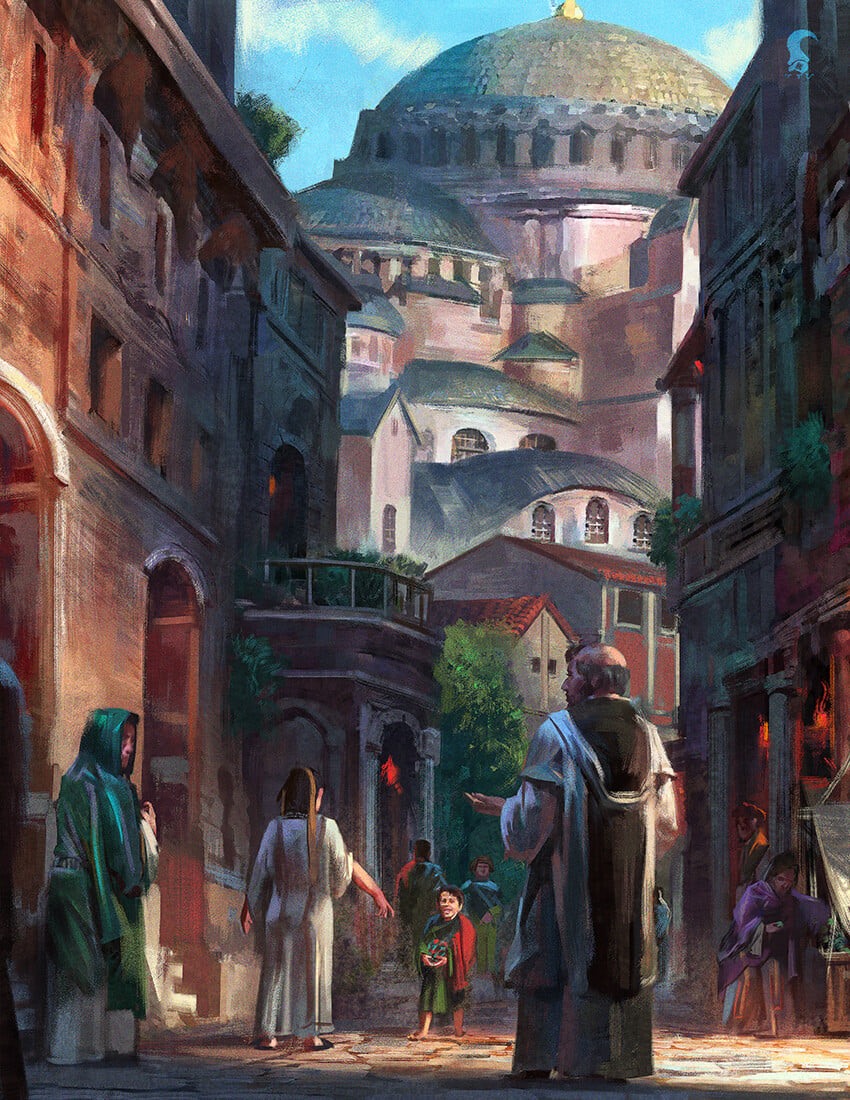
In the tavern, Nikephoros already had an entire organized campaign in mind to get rid of Irene, which was to bribe off heralds and officials in the city to spread word that Irene wants to give up their empire to Charlemagne as well as announcing all of Irene’s inappropriate things in public even if they were not really proven which here for this story would include Irene lying down naked sunbathing at the Imperial Palace’s balcony among a lot of others, which was a similar strategy the historian Procopius did in the 6th century to ruin the image of the empress Theodora, Justinian I’s wife if you recall from chapter III, except Procopius’ was more privately done. Another rumor too was spread that Irene’s son Constantine VI had already died, therefore she killed him as a way to further vilify her. Nikephoros the Logothete too already got ahead in his plot to make himself emperor and this meant- in this story’s case- that he was to trick Irene’s still alive brothers-in-law the Caesars Nikephoros and Christopher despite being blind that they would be his co-emperors in order to get more support from the still Iconoclast troops in the army who were still undyingly loyal to Constantine V and his sons, though the other 3 brothers Niketas, Eudokimos, and Anthimos who were all still alive were to be left behind. Now Nikephoros Caesar by 802 was still in the Princes’ Islands in the Marmara under close watch by Irene’s officials and would only rise up one last time later on in 812 in real history, but in this story’s case, Nikephoros the Logothete would go there to this island just a few hours by boat from Constantinople, bribe the guards and monks of the monastery to only get the Caesars Christopher and Nikephoros out, and together they would flee to a stronghold in Thrace.
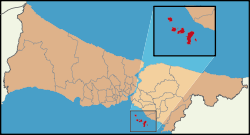
In Constantinople meanwhile, after receiving a lot of fake news, a major percent of the population would already turn on Irene though the rest would still remain loyal, while Aetios on the other hand when discovering that Nikephoros already beat him to taking the throne switched his loyalty back to Irene and returned to the palace while Aetios’ brother Leo in Thrace also gave up his ambitions. Now in real history, on October 31 of 802 as Irene was not in the Great Palace, the conspirators of Nikephoros the Logothete told some false information to the palace guards telling them Irene had fallen ill and was close to death therefore she chose Nikephoros to succeed her as a way to get rid of the scheming Aetios and later during the night, the guards believing it found Irene and escorted her back to the Great Palace where Nikephoros confronted her. Nikephoros here explained everything he was doing, though only as a way to get Irene to reveal to him where she kept all her gold which she did, and when Nikephoros got all the gold he wanted, he had Irene pack up all her things and then at the dead of night, he put her on a boat headed for one of the Princes’ Islands in the Marmara where she was to now be under his watch in a monastery there which she founded while Aetios was fired from his post, and Nikephoros then was crowned as emperor by Patriarch Tarasios who was as usual oblivious to the matter.

However, things would be very much different here in this story as Irene already made her move in asking Charlemagne to come over to Constantinople to marry her while Nikephoros knowing about this fled to Thrace to raise an army in rebellion against Irene and Charlemagne and there in Thrace, Nikephoros- in this story’s case- would craft an explosive which was like a grenade made using the combustible ingredients of the Byzantines’ superweapon Greek Fire, which included naphtha, quicklime, and resin, and this grenade was to be lit by a fuse which was to be blown up whenever the wedding of Charlemagne and Irene would happen. Now on October 31 of 802 in this story, rather than Irene losing the throne all of a sudden without her even knowing there was a plot to overthrow her, Charlemagne instead arrived in Constantinople escorted only by a few of his Carolingian knights, and here he was welcomed warmly by the people, only because Irene told them to receive him well.

The people however were not in awe but questioning what they saw which was Charlemagne as from everything they have heard of, he was some kind of great warrior emperor that could take down an army or a wall with his bare hands, but when seeing him ride his horse through the streets, he looked nothing like an old fat man with messy hair and beard despite still being tall and muscular, but still looking like he hadn’t taken a bath- which of course he did not after so many weeks riding his horse- and as he got off his horse, everyone noticed him walking in an odd way looking that there was nothing regal about him after all. Charlemagne with his entourage would meet Irene who was dressed in the complete imperial robes and crown at the Hippodrome where Charlemagne was immediately taken away by Irene’s beauty despite her already being 50 and here, the 60-year-old Charlemagne knelt down and out of nowhere spat on the ground and kissed Irene’s hand afterwards grabbing her legs, although Irene immediately moved her legs away before she could fall; now Irene was already quite tall but Charlemagne was so much taller than her being from the Germanic race. The first thing Charlemagne however said to Irene was that he asked her where is the nearest bath and bedroom as he needed to rest, and Irene pointed him to the palace while Charlemagne without even properly greeting her said he had such a long journey wherein he took a ship from the Istrian Peninsula in Italy to Greece and from there rode nonstop down the Ancient Roman road of the Via Egnatia to Constantinople for 2 weeks.
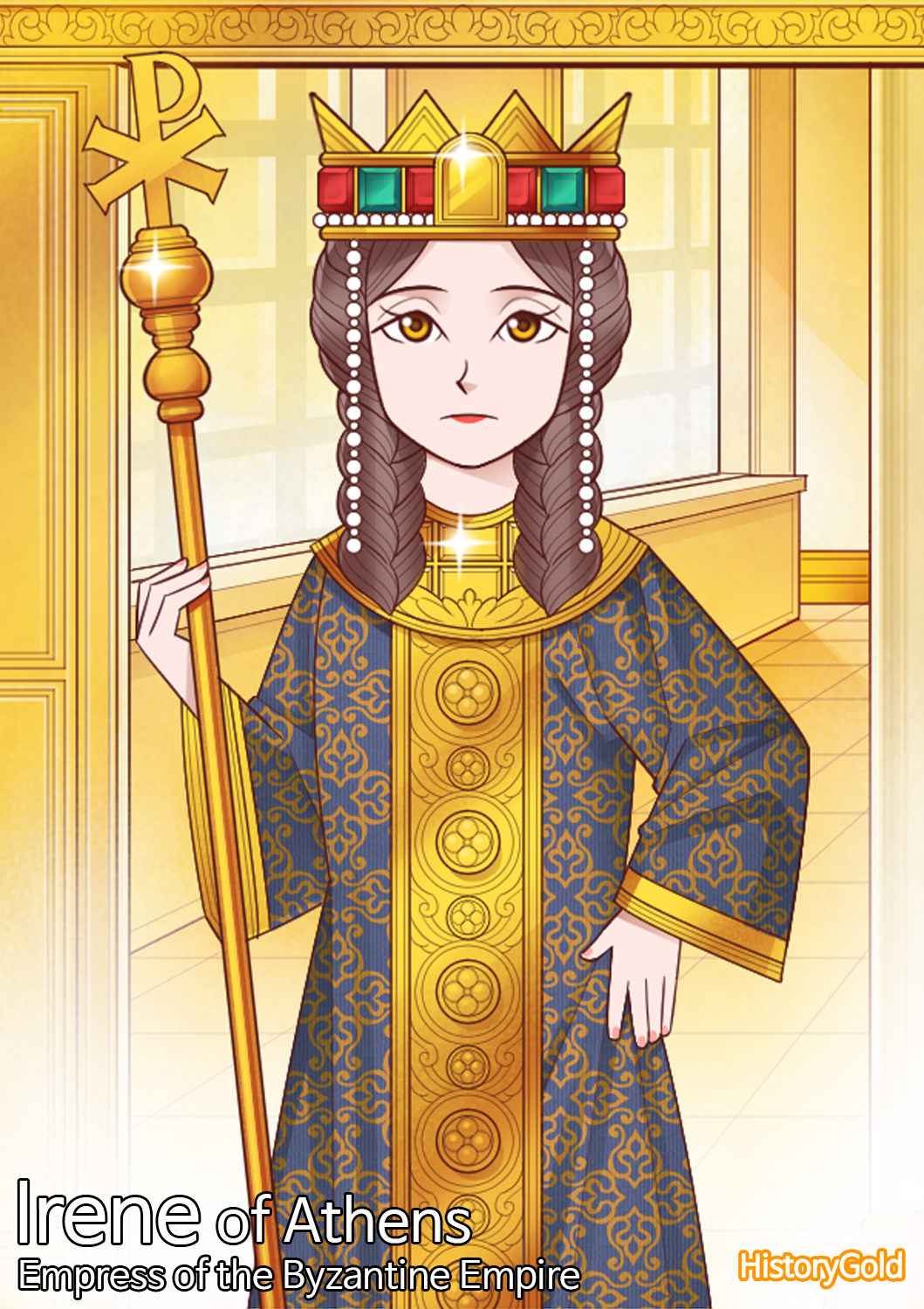
Now on the same night as Charlemagne arrived in Constantinople, Irene once again dressed up in the same purple silk wrap-around dress she wore when discovering Charlemagne was crowned emperor more than a year earlier, and as the function held to celebrate Charlemagne’s arrival in Constantinople had begun in the Magnaura of the Great Palace, the people that came to attend included Aetios, Anthousa, and Irene’s cousin Theophano. As Charlemagne got up from his nap entering the hall, he was immediately stunned by Irene’s outfit and how it hugged tightly to her body showing that she still had an attractive body even at 50, and in fact she thought of wearing it seduce Charlemagne. In this celebration dinner then, there was a lot of food, drinks, and entertainment such as acrobatics and fire eating which also impressed Charlemagne, but the one thing here Charlemagne found odd was a utensil the Byzantines used when eating their meat which was of course the fork whereas in the Frankish Kingdom here, people just ate with their hands and a knife. When getting his hands on the fork, Charlemagne said in Latin “what the hell is this!” that he ended up breaking the fork, and also seeing all the dances and eunuchs he said the same thing too, but at the same time everyone else there was laughing at him and his unsophisticated way of eating. Sitting next to him was Irene and as she spoke Greek, Charlemagne could at least understand some of it but when she started speaking Latin, they started having a proper conversation, although after drinking too much wine that was served, he began rubbing Irene’s legs and stomach but soon enough as he moved his hands up to rub her breasts, he passed out in front of everyone wherein they all saw how unkempt he was especially with the saliva dripping out of mouth and gas he was farting out that Irene had to order him carried off to one of the rooms in the palace.
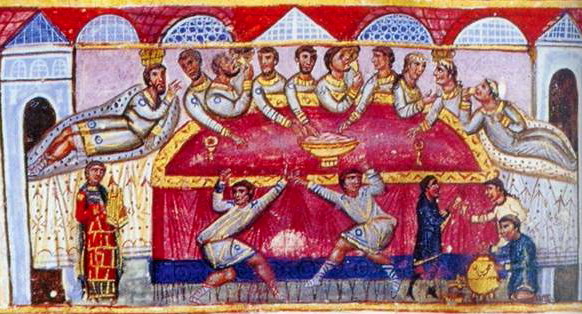
Now just like Irene 33 years earlier on December 17 of 769 when she married Leo IV, she would marry Charlemagne on this exact same day again in 802 for this story, although Charlemagne in the past 6 weeks that he had been in Constantinople would not do the same as Irene before when going through training in court etiquette, rather he would observe Constantinople for 6 weeks in order to get ideas for decorating his capital Aachen, and it was the newly restored mosaics by Irene replacing the previous ones that were destroyed by the Iconoclasts that inspired him most, and so were the public and private baths that he wanted to model the existing baths in Aachen to look like them. In the morning of December 17 of 802, Charlemagne was to be crowned as the Eastern Roman emperor in the Hagia Sophia by Patriarch Tarasios, and although he did not really need it as he had already been crowned emperor by the pope 2 years earlier, it was only for ceremonial purposes that he needed to be crowned as the eastern emperor, as this way he would be accepted by the Byzantine people as an emperor who the patriarch crowned rather than just a foreigner who seized the empire.

Irene watched the coronation ceremony from the empress’ box on the upper floor of the Hagia Sophia while Charlemagne who was being crowned by the patriarch Tarasios at the large circle known as the Omphalion felt uncomfortable in the Byzantine imperial robes he had to wear which was the Loros, a long golden scarf embroidered with gems tightly wrapped around the body which he saw as something that was suffocating him as it was wrapped so tightly whereas the golden robes he wore back at home were lose and comfortable, but he needed to wear it anyway to prove that he was accepting his position as the Eastern Roman emperor, and at the end of the ceremony he became known as Basileus Karoulos in which this name was Greek for Charles. In Thrace on the other hand, Nikephoros the Logothete had already sent a slave dressed up as a monk to Constantinople hiding the explosive under his robes after receiving reports that Irene and Charlemagne were to marry on the 17th of December.

Now on the same day as Charlemagne’s coronation and later his wedding, Nikephoros also dressed up in the golden imperial Loros though placed over a blue instead of a purple silk tunic, and here in this Thracian fortress, he placed a crown on his head and stood on a large round shield having his soldiers lift it and proclaim him emperor, and right here he became Emperor Nikephoros in direct rebellion against Irene and Charlemagne, while the two blind Caesars who still looked very young Nikephoros with his large black curly hair and Christopher with his red curly hair were made co-emperors, though only as a way to please the mostly Iconoclast troops there. Back in Constantinople, it was Irene’s turn to get ready for her second marriage, and as she was being dressed up in her wedding dress, the same style of the long and tight one from before that covered almost the entire body, she started to think about things like how far she’s gone in life and being able to stay as the sole empress for 5 years now, and that now by marrying Charlemagne she would be the joint ruler of a global empire, but at the same time she also started feeling the guilt again for blinding her own son who here was still alive in the Princes’ Islands, but she also came to remember that she was already a grandmother here as her son Constantine VI had a daughter Euphrosyne who was somewhere out there. While she was dressing up, the same ghost of the old emperor Justinian I popped out again although this time very quick only telling Irene to remember that her marriage to Charlemagne is only political and to not give in to his demands as this could start giving mixed signals to the people of the empire that a barbarian is now running the show. In the afternoon of that cold day, the wedding ceremony took place at the Church of Pharos in the Imperial Palace Complex where Irene and Leo IV married on this day back in 769, and again Patriarch Tarasios retuned to marry both of them, but at the end of course this was all political as Irene never had any kind of feelings for Charlemagne who in return also did not, except that he was only attracted to her looks. As the ceremony took place, the reception area also in the palace complex was being set up and here the slave sent by Nikephoros the Logothete had arrived placing that explosive right under Irene and Charlemagne’s table, but everyone else did not notice as they were setting up the food and the expensive wine from Burgundy which was part of Charlemagne’s empire.
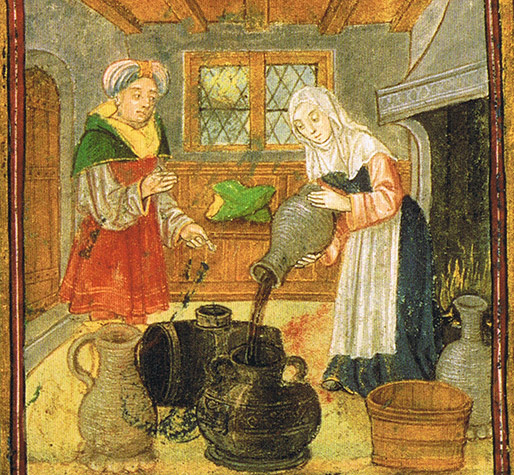
Following the ceremony, the reception began and everyone enjoyed themselves- despite the day being cold as there were several braziers lit to warm up the outdoor area- with the food, wine, and festivities such as dances and circus performances, while Irene having not eaten the entire day to make sure she wouldn’t be full for her big day and to fit into her dress went straight for the Frankish wines which she was curious about the most that she kept drinking it noticing that it tasted different compared to the Greek wines she was used to, while Charlemagne on the other hand enjoyed himself by stuffing himself with food. Aetios meanwhile was also here together with Anthousa, Theophano, and the patriarch and Aetios though was still bitter about Irene’s marriage with Charlemagne but still wanting to keep his position, he pretended like he was all for the marriage. Meanwhile, as everyone was enjoying themselves, the slave sent by Nikephoros the Logothete with no one noticing him, not even Irene and Charlemagne crawled beneath their table and lit the fuse, and a few minutes later Aetios smelled something burning and tracked it to Irene’s table wherein he bent down and grabbed the explosive which was hot in his hands, and although he never really cared about Irene he still grabbed it and threw it into the fountain below just to save himself, as if he weren’t there he would have just let it explode killing Irene and Charlemagne in the process. The grenade then exploded in the fountain below while the slave dressed as a monk ran away but was immediately spotted by Irene’s loyal Vigla guards who seized him, beat him up, and dragged him to prison. Irene meanwhile did not notice anything as she drank too much of the Frankish wine and not eating anything prior to that, it was here her turn to pass out and be carried off to the palace while Charlemagne remained alert and using the very little Greek he knew, he asked everyone to return to the palace, but at least both were still married.

Irene woke up the next day in a hangover in her room in the palace dressed down to her underwear forgetting everything that happened the previous day until Charlemagne entered telling her everything that happened including the explosion which woke Irene up. Charlemagne meanwhile did not care to investigate anymore as they at least survived, and all he wanted anyway was to retire here in Constantinople feeling he had done his part already in growing his empire and therefore making it larger by now adding Irene’s Byzantine Empire into it, and thus he revealed that he only came to Constantinople to marry Irene and sleep with her. Irene on the other hand wanted to know who was behind the plot and so she had that slave who was caught and imprisoned by the Vigla guards tortured wherein he revealed that Nikephoros the Logothete who had proclaimed himself emperor crafted it and sent him to plant it and after revealing it, the slave was stabbed to death in the neck in his prison cell. With the investigation over, Irene sent some men to track down Nikephoros but Charlemagne objected to it saying that this investigation is useless as now they both rule a massive empire together that the rebel emperor Nikephoros has no chance standing against it, but Irene felt like it was her duty to do it as she put a lot of trust in Nikephoros and therefore still wanted to make him explain himself. Irene remembering Justinian’s advice to act on her own to solve problems here had her troops hunt down Nikephoros even if this would mean a civil war, while Charlemagne wanted to discuss the more important matter which was how both will run the empire, and Irene again remembering that she must act on her own asserted herself saying that Charlemagne must return to Aachen where he would rule from and she would stay in Constantinople as she did not want to go all the way there and leave her home.
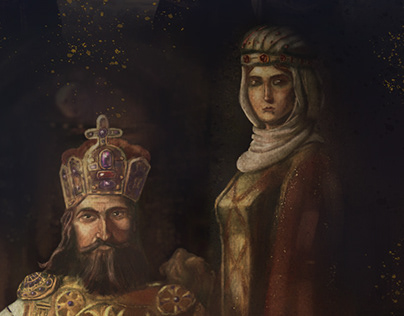
Charlemagne agreed to the deal but only if he was to rule the empire as the senior emperor and Irene as the junior ruler though Irene first objected to it, but knowing that between her and Charlemagne, he was more experienced so it was left to him to be the senior ruler, but Irene still wanted to keep her position as empress which was granted to her, therefore she was to rule the smaller eastern half but at least being able to use the troops and funds from Charlemagne’s more powerful western half. The next issue they had to deal with was with Church matters whether the Byzantines as well as the patriarch would now have to submit to the pope and the Western Church or vice-versa, but Irene again asserting herself chose to not submit to the pope as long as the patriarch and pope would still be in good terms with each other and Irene ruling the empire would follow the pope’s spiritual guidance rather than ignoring it, which Charlemagne again agreed to as after all the pope and Byzantium were again in good terms after the period of Iconoclasm had ended back in 787. Now the last thing they had to settle is the political structure on whether to keep the Themes or not or to make Charlemagne’s western half divided into Themes as well and at the end, both could not come up with a conclusion, so rather the Themes were to be kept in the Byzantine Empire while the Frankish western half still was to keep its own system of provinces or territories while the divide between both halves would be in the Istrian Peninsula between Italy and the Balkans, and only a small piece of land would connect them which is the Adriatic coast of the Balkans running from Northern Italy down to Albania in which this part would be under the eastern half. The tough part for Charlemagne though was that he did not want to leave the great city of Constantinople which he already fell in love with but in early 803, he got word from one of his men that the Saxon war in Northern Germany was not yet over, therefore he needed to return there and also because he had many children (as many as 18 in total) back in Aachen that needed him and as a father, he was very devoted to his children, especially his daughters. Now in early 803, Charlemagne kissed Irene goodbye departing now by ship directly from Constantinople to Istria in Italy where he would ride north to Aachen knowing that he could now travel freely in Byzantium as he already controls it. Irene then made a public announcement to the people of Constantinople in the Hippodrome about her marriage to Charlemagne in which everyone shouted insults to her at first still not accepting that a barbarian would rule them, but Irene told them the other side of Charlemagne that he was a cultured man that would be very respectful to their culture and that he has agreed to retain the autonomy of the Byzantine Church, adopt Byzantine customs, and that the people could now travel freely from Greece to Frankia as all of that is now under one empire. Irene had also announced that under the protection of Charlemagne and his armies which were stronger and more in number compared to theirs, they would be more secure and no longer going to face the threat of extinction, but most importantly what cheered everyone up was that they had a massive global empire again, which was once again a united Roman Empire.
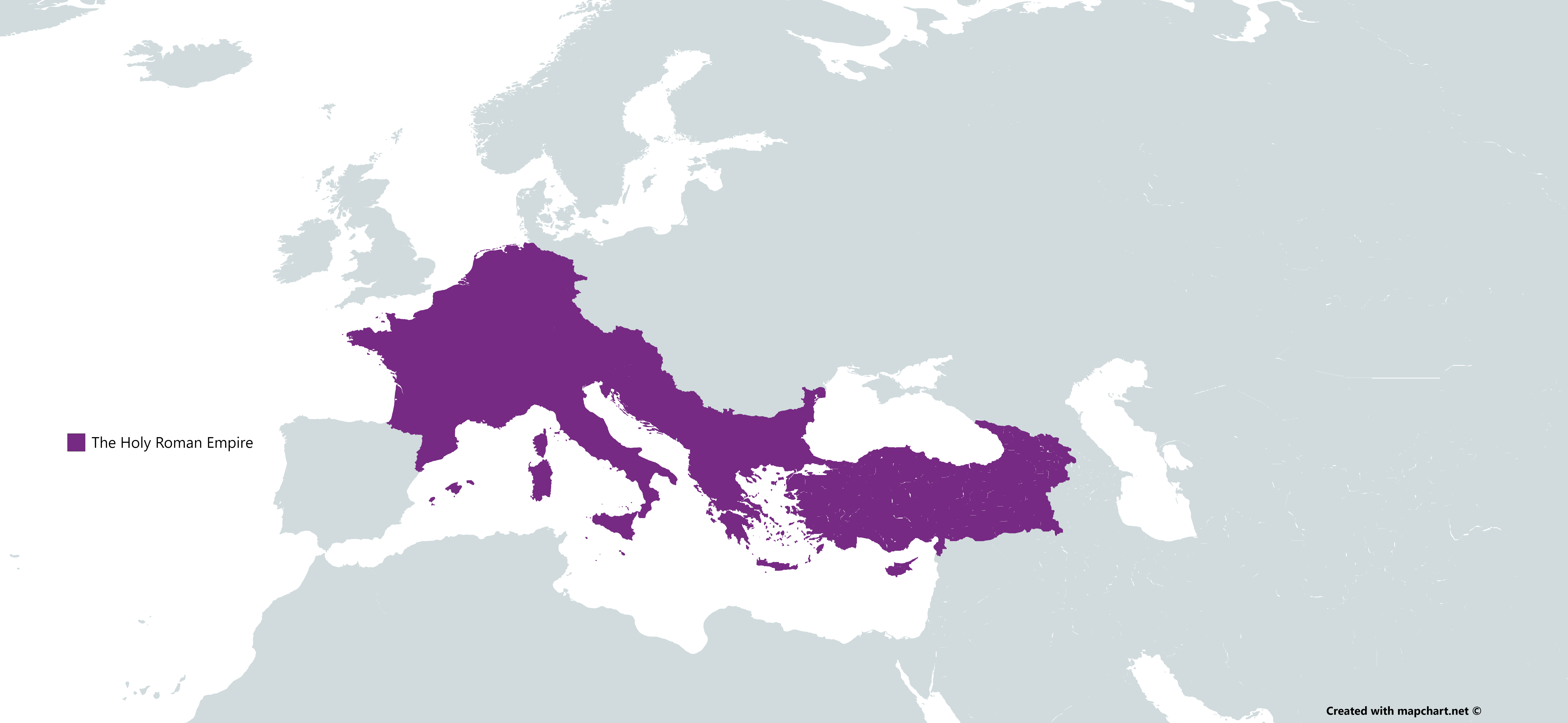
The Climax Part II- A United Frankish-Roman Empire and the Bulgarian War

In 803, the landscape of Europe and Asia Minor had changed compared to how it was just like a year earlier, as instead of one massive empire in the west, a crumbling empire in the east, and several growing kingdoms or tribal confederations in the middle, there was now one massive empire that went from Northern Frankia and Northern Germany all the way down to Greece and Asia Minor now known as the Frankish-Roman Empire, although the half of the eastern empire ruled by Irene was barely connected by land to the larger western half of Charlemagne except for a thin strip of land in the Balkans along the Adriatic coast connecting Greece to Italy where the divide between the eastern and western halves was, while Southern Italy and Sicily itself which were under Byzantine rule too was in no way connected to the main empire by land as the Papal States where Rome was separated it from Northern Italy which was under the united Frankish-Roman Empire too. Though Irene was solely in control of the eastern half but at the same time still answering to Charlemagne in Aachen who controlled the larger western half as the superior ruler, a part of Northern Greece including the Themes of Thrace and Macedonia were in rebellion not recognizing either Charlemagne or Irene as their rulers but instead recognizing Nikephoros the Logothete who by 803 in this story’s case would take over the city of Serdica (today’s Sofia, Bulgaria) in Thrace making it his own capital. Like in real history too in 803, over in the Bulgarian state north of Byzantium, a new ruler would come to rule the Bulgars following the death of their previous ruler Khan Kardam, and the new ruler that came to rule the Bulgars was Khan Krum, though not related by blood in any way to Kardam but instead he was one of the tribal leaders of the Bulgars that managed to take the throne when the previous ruler died without a successor.
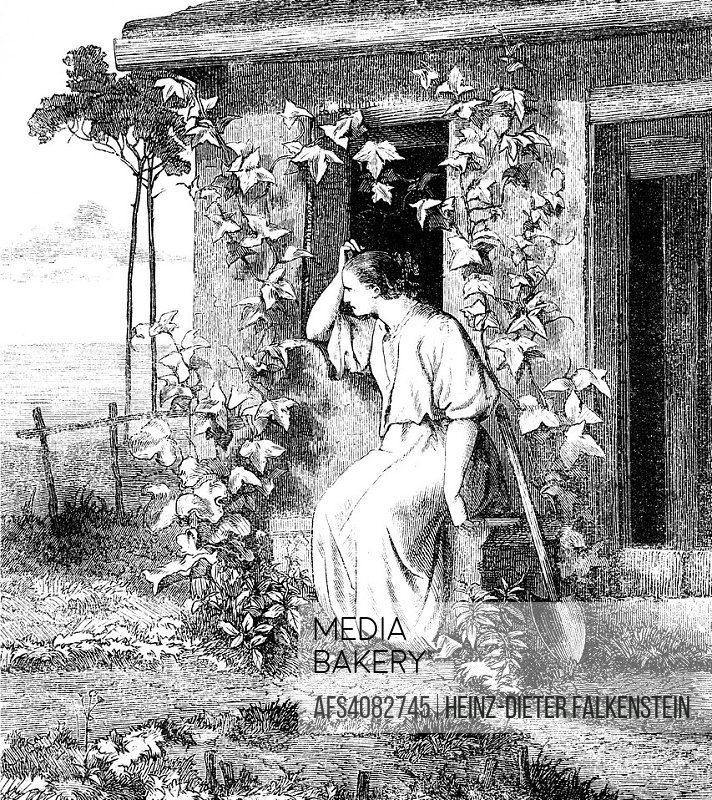
Now in real history, Irene in late 802 who was in the Princes’ Islands in the Marmara banished there by the new emperor Nikephoros I the Logothete just after a month of being there was again banished by Nikephoros to the more isolated Greek island of Lesbos in the Aegean Sea as her first location in the Marmara was too close to Constantinople, therefore Nikephoros felt that Irene was too close to the capital meaning someone loyal to her might soon enough come to her rescue. In the real timeline then, Irene just after 9 months in exile in Lesbos died there from unknown reasons at the age of 51, but it was said that she died in her sleep, and in fact her blind son the former emperor Constantine even outlived her by 2 years and Charlemagne by 11 years. In this story’s case however, Irene would still be alive and well in 803 ruling the eastern half, but the biggest problem for her now was her rival emperor Nikephoros in Thrace who by this point would have already raised a large army but for Irene, it would not be much of a problem as she had Charlemagne and his more powerful army on her side and with them ruling one empire, his troops could come over to the east to help her.
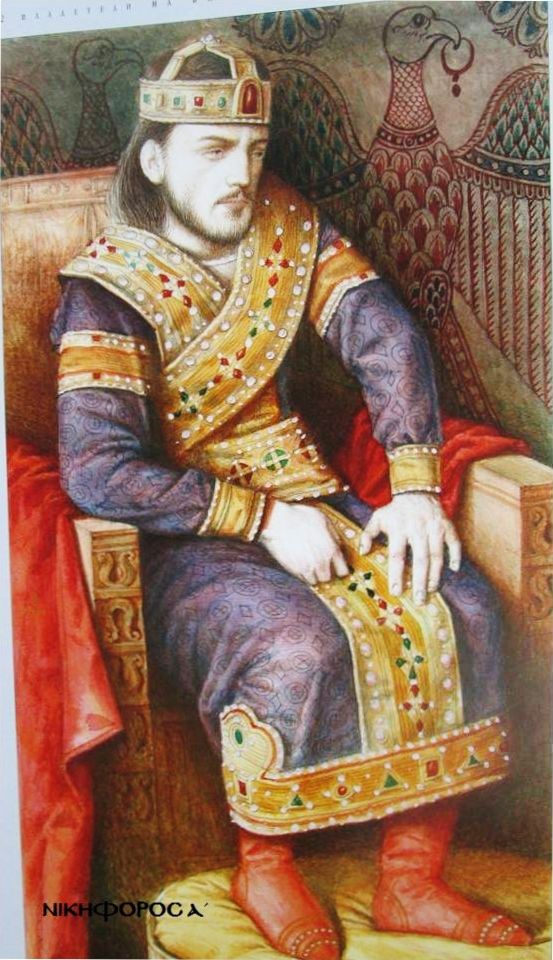
With Nikephoros I as the Byzantine emperor in real history in 803, he would inherit a heavily troubled empire caused by the disasters of Constantine VI’s reign and of Irene’s after him, and part of these problems he inherited was Charlemagne who in 803 put pressure on Byzantium by attempting a massive invasion of it as a way to get back at Nikephoros for overthrowing Irene who he proposed to marry, but also because he was now attempting to have Byzantines recognize his claim as emperor, and he was only doing it here 3 years after he was crowned because when he was crowned in 800, Irene who was a woman was ruling the empire, therefore he could not agree to a woman recognizing his claim, but now with a man running the empire, Charlemagne now thought he could have the Byzantines recognize him. Nikephoros I however did not want to recognize Charlemagne and in fact did not even want his name mentioned in the empire at all, which led to Charlemagne launching naval attacks in the Adriatic Sea against the Byzantine fleet, which then made Nikephoros conclude a treaty with Charlemagne known as the Pax Nicephori named after Nikephoros I which was not in full effect between both empires until 814 acknowledging that the Adriatic Sea was the permanent border between both empires.

In this story’s case however, the Adriatic was still to be the border between the eastern and western halves but the whole conflict with the Byzantines and Charlemagne over his recognition as emperor would not happen any longer as Charlemagne was basically the one in charge of the Byzantine Empire now together with Irene after he married her and took the Greek name “Karoulos” which the Byzantines of the eastern half would refer to him as. On the other hand in 803 in the real historical timeline, Nikephoros I in order to secure his legitimacy on the throne and form a dynasty made his son also named Staurakios like Irene’s former eunuch advisor as his co-emperor but in this year too, his rule would be challenged by a general loyal to Irene named Bardanes Tourkos who marched to Constantinople but failed to gain support, therefore his rebellion failed and he was forced to become a monk, although he also failed as one of Bardanes’ loyal soldiers which was Leo the Armenian- the same one mentioned earlier- as an act to move up the ranks switched his support to Nikephoros I knowing Bardanes would lose. In this story’s case, Bardanes Tourkos would remain loyal to Irene serving as her top general, while Leo the Armenian here would be Nikephoros’ top general despite being an Iconoclast while Nikephoros was still an Iconophile. Nikephoros I in real history as an Iconophile continued Irene’s policy of restoring icons but undid Irene’s policy in relaxing taxes, instead Nikephoros would restore the regular tax collection and increase taxes especially for the nobility by coming up with creative means to do so which included a tax on the size of furnaces or a “hearth tax”, meaning that those with bigger furnaces had to pay more, as well as imposing a tax on farmers based on the quality and quantity of their produce. Now with Irene still ruling the empire in this story, she would however start showing more strength in ruling, that after realizing that her own lax taxation policy made her an easy target for conspiracies by the nobility and had turned out to empty the treasury that way, she would gradually increase taxes, although not come up with the creative genius solutions Nikephoros would in taxation, but like Nikephoros in real history she would soon enough create the new Themes of Thessaloniki, Cephalonia, Dyyrhachion, and the Peloponnese in Greece. Irene though would not do it entirely alone but with the advice of Bardanes Tourkos and Aetios who would still remain with her, while Charlemagne at times would have the final say in her decisions by sending word to Constantinople. Now Charlemagne here by 804 would be too busy with his own wars such as the war with the Saxons in Northern Germany which he finally finished and came out victorious in 804 forcing the Saxons to convert to Christianity but at the same time, he would be troubled by a new mysterious enemy in the north which were the Danes or Vikings who had first appeared in the historical record back in 793 when attacking Anglo-Saxon England, and here they would begin raiding the northern coasts of his empire with their longships.
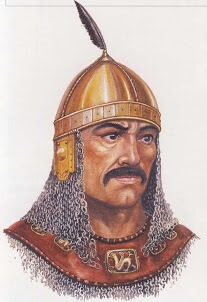
The other new problem bothering Charlemagne here just like in real history was the Avar Khanate in Central Europe (Hungary and Romania) which however here like in real history would eventually be subjugated by him in 805 turning the Avars into his client kingdom to protect them from the expansion of Krum’s Bulgars from the south. In 805 on the other hand, the Bulgarian Khan Krum had defeated and finished off the Avar Khanate annexing it to his Bulgarian Empire which now doubled in size by adding what is now Romania into his empire following the defeat of the Avars, while the western remains of the Avar Khanate would fall under Charlemagne’s empire- in this case under the new united Frankish-Roman Empire- being made a frontier march or border state just as Northern Spain was, and now the Frankish word “march” had therefore meant borders state. Another event that would also happen here in 805 just like in real history was the death of the blind Constantine VI in the monastery he was sent to in the Princes’ Islands in the Marmara, though in real history he still outlived his mother Irene by 2 years but here, Irene when hearing about it in Constantinople would be guiltier than ever just realizing that she had killed her son by blinding him 8 years earlier.

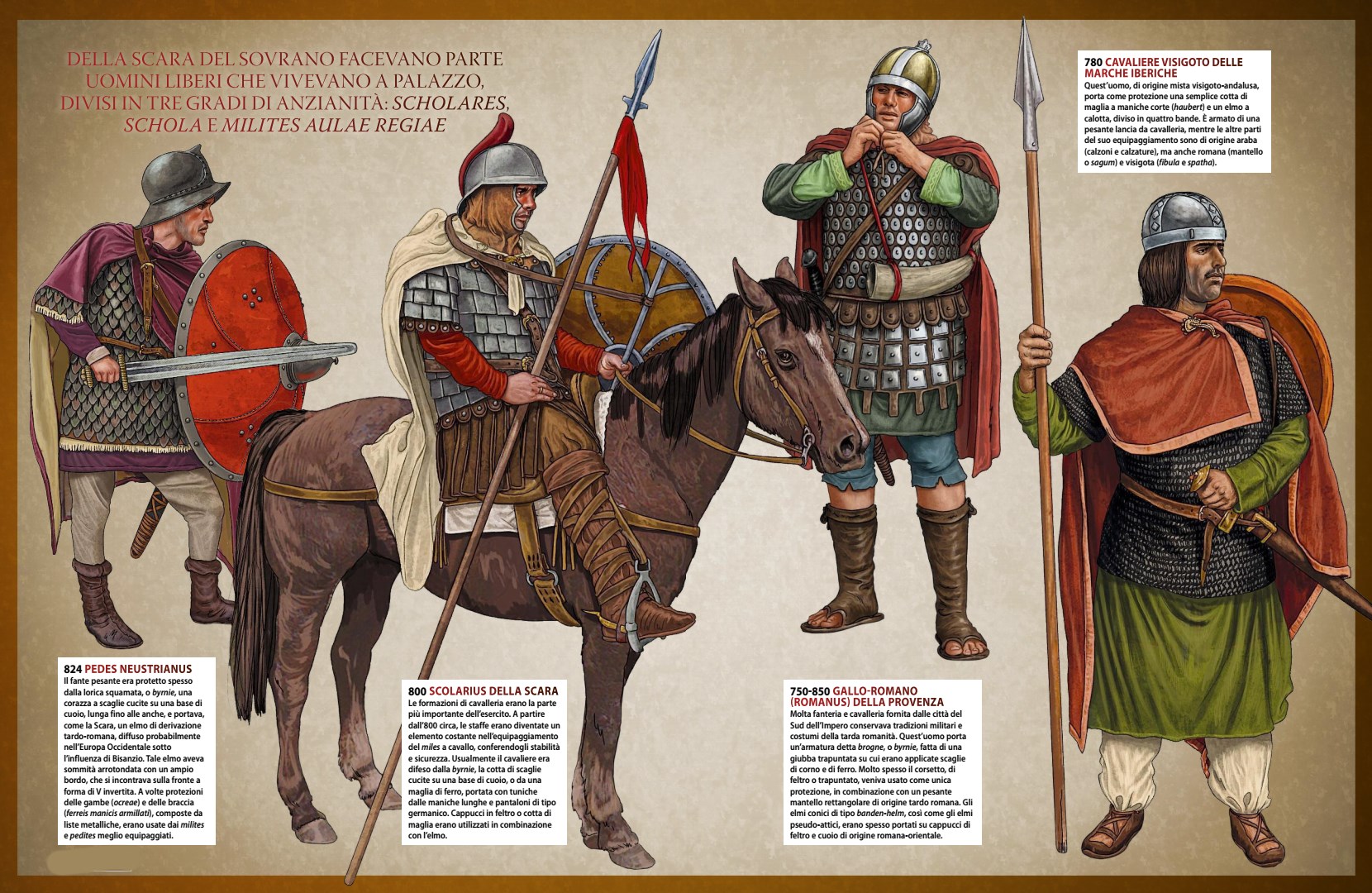
Watch this to learn more about Nikephoros I’s reign (Thersites the Historian).
Now the issue that Irene would face following her blinded son’s death in 805 was the succession as she being now 53 could not give birth to a new son anymore and she too had no surviving male relatives to inherit the empire, though luckily Charlemagne here had 3 adult legitimate sons that Irene could choose as her successor. In 806 like in real history, Charlemagne sticking to the Frankish royal tradition of the ruler dividing his realm among his sons named the eldest one also named Charles or better known as “Charles the Younger” as his main successor as emperor and chief king of the empire, while the second son Pepin was given control of Northern Italy as its king though answering to his older brother, and the third son Louis known as “the Fair” was given control of Aquitaine as well as Provence and Burgundy as its king but also answering to his eldest brother, but what Charlemagne- in this story’s case- forgot was who will inherit the eastern half considering that he was in charge of it too as here he thought his wife Irene had someone in mind without knowing she had no surviving male relatives. Irene on the other hand when hearing of Charlemagne’s plan of dividing the western half of the empire among his sons as kings of different parts of it thought that the east after she would die could be ruled by the eldest son Charles as he like his father was to be the senior emperor, and he being still single was suggested by Irene here to marry her also still single cousin Theophano who was already in her 30s. Meanwhile in real history back in Byzantium, Nikephoros I as part of undoing Irene’s policies decided to give up paying annual tribute to the Abbasid Caliphate, which however only made things worse between them that in 804 the still reigning caliph Harun al-Rashid invaded Asia Minor again, and Nikephoros wanting to face off the Arabs in battle suffered a heavy defeat to them at the Battle of Krasos and again in 806, the Abbasid Arabs invaded with 135,000 men, but Nikephoros knowing he was unable to contain the invasion decided to give up and continue paying annual tribute again.
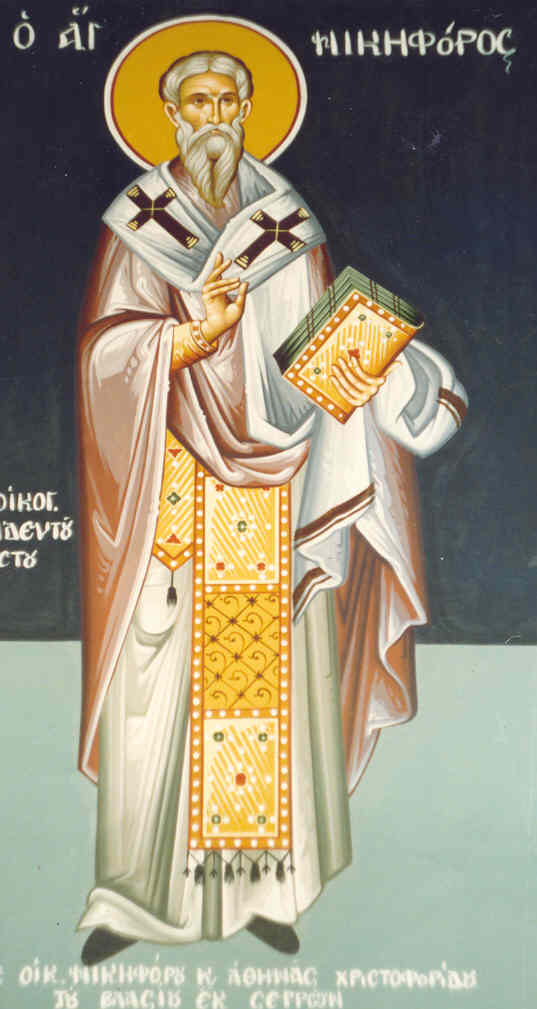
In 806 too just like in real history, the mostly oblivious Patriarch Tarasios would die though in reality, the new patriarch Nikephoros I who was also a historian and major source of this period was appointed as patriarch by emperor Nikephoros I who shared the same name as him, and in this story too, the same patriarch Nikephoros I too would be appointed following Tarasios’ death in 806 as being an Iconophile, Irene would trust him too. In this story’s case however, with Irene still ruling the empire she would still continue her foreign policy in paying annual tribute to the Abbasids, therefore no Arab invasions would happen as she was ruling, therefore giving her time to focus on dealing with the rival emperor Nikephoros who here by 806 was still not yet defeated as Irene’s forces here had never been able to besiege Serdica, and Charlemagne’s forces could not yet come to the rescue still being busy pacifying their own borders in the west. Here for this story, it would be only in 807 when Charlemagne would come to Irene’s rescue in the east by sending his troops there to help her troops defeat the rebel emperor Nikephoros’ forces in Serdica in which Irene’s general Bardanes Tourkos here would succeed in taking the city forcing Nikephoros and his still surviving loyalists including Leo the Armenian and Irene’s brothers-in-law the Caesars Nikephoros and Christopher to flee north. Still not feeling defeated and wanting to take the throne, Nikephoros the Logothete would decide to head north to the now larger and more powerful Bulgaria of Khan Krum to get his support in taking the throne, and being enraged with the failures of the brothers Nikephoros and Christopher even if they were not responsible for anything as they were blind, Nikephoros the Logothete here would kill both of them and dump their bodies in a river, though this act would actually lead to his downfall as the Iconoclast soldiers that supported him were actually backing the brothers more than him and with both brothers dead, the Iconoclast troops loyal to them would end up defecting to Irene despite her being an Iconophile as she was after all from the same family as the brothers, though Leo the Armenian would still remain with Nikephoros the Logothete. It will be very ironic though in this story that Nikephoros the Logothete would join forces with the Bulgarian khan Krum to get him on the Byzantine throne, as in real history with Nikephoros I as emperor he decided to launch a massive campaign to finish the Bulgar state of Krum for good after Krum captured Serdica from the Byzantines in 809, but little did Nikephoros I know that the Byzantines had very little chance in fully defeating the Bulgars who now had a massive empire covering almost the entire Eastern Balkans all the way north to the Carpathian Mountains. Now in this story, in 809 Krum would do the same as in real history by capturing Serdica from the Byzantines, except here Krum would be assisted by Nikephoros the Logothete and Leo the Armenian, and when hearing about this in Constantinople, Irene would be furious that she would be the one to launch a massive campaign on the Bulgarians consisting of 50,000 men the way Nikephoros I did in real history, except here it would be even larger as Irene would be assisted by Charlemagne’s army from the west. What would also happen in this story like in real history in 809 would be that the Abbasid caliph Harun al-Rashid would die thus relieving the Byzantines from the Arab threat in the east, and in 809 Irene’s sister-in-law Anthousa would also die at age 59.

Charlemagne here however would not be able to act quick as in 810, his western half of the empire would face somewhat of a succession crisis when his son Pepin the King of Italy had died at 33, although he had a son Bernard who was though still very young, and so now out of Charlemagne’s sons only Charles the Younger and Louis were left alive. Charlemagne meanwhile by 810 would already start suffering from bad health suddenly as according to his chronicler Einhard, Charlemagne was in good health all the way till old age until around 810 which was 4 years before his actual death but here by 810 in this story, he had already transformed his capital of Aachen worthy of an imperial capital just like Constantinople in opulence with buildings like the octagonal Palatine Chapel of his imperial palace built in Byzantine style, though the only thing Aachen did not have that Constantinople did was a scenic skyline by the sea, a harbor, and a strategic position on a peninsula at the border of two continents.
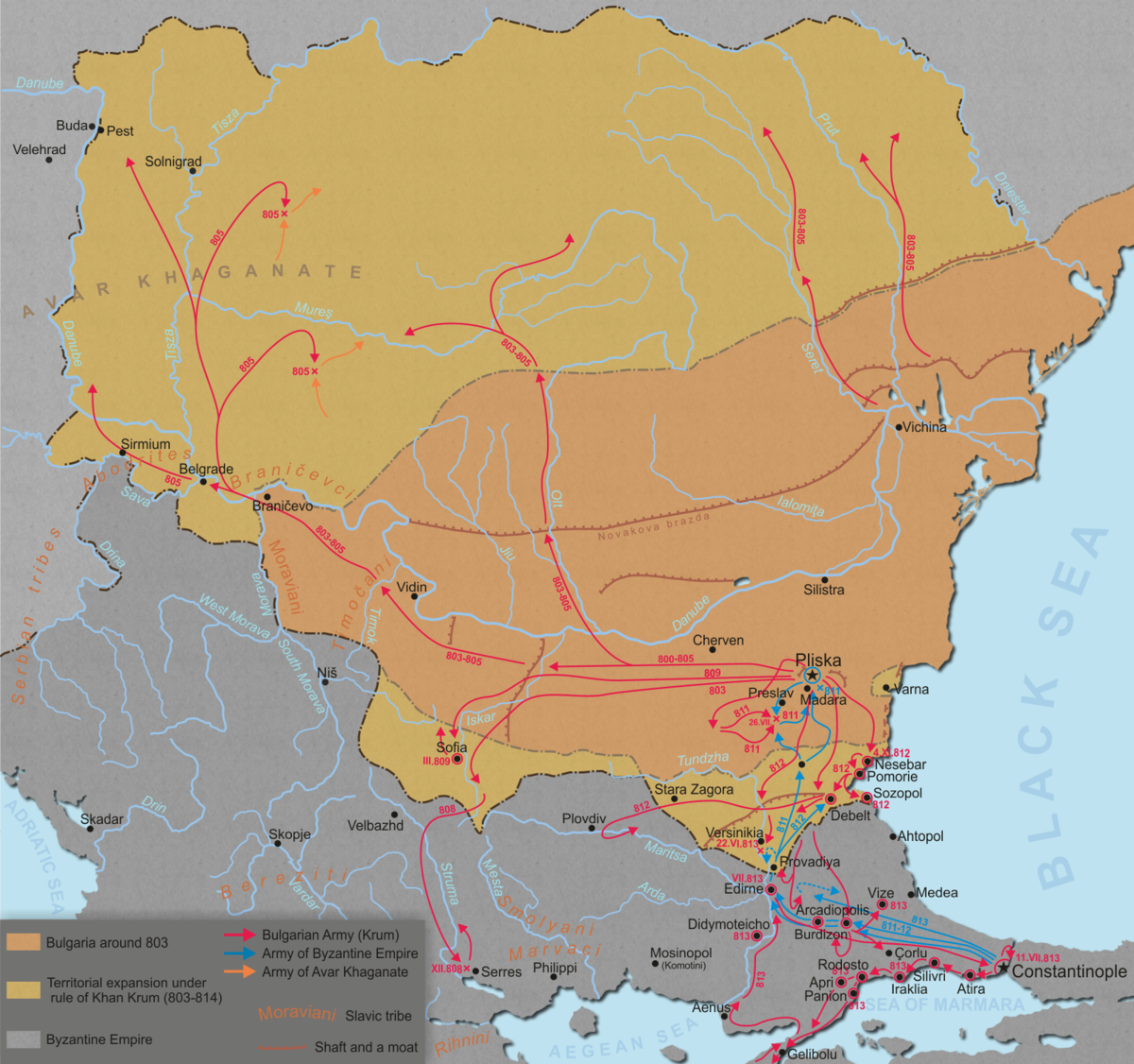
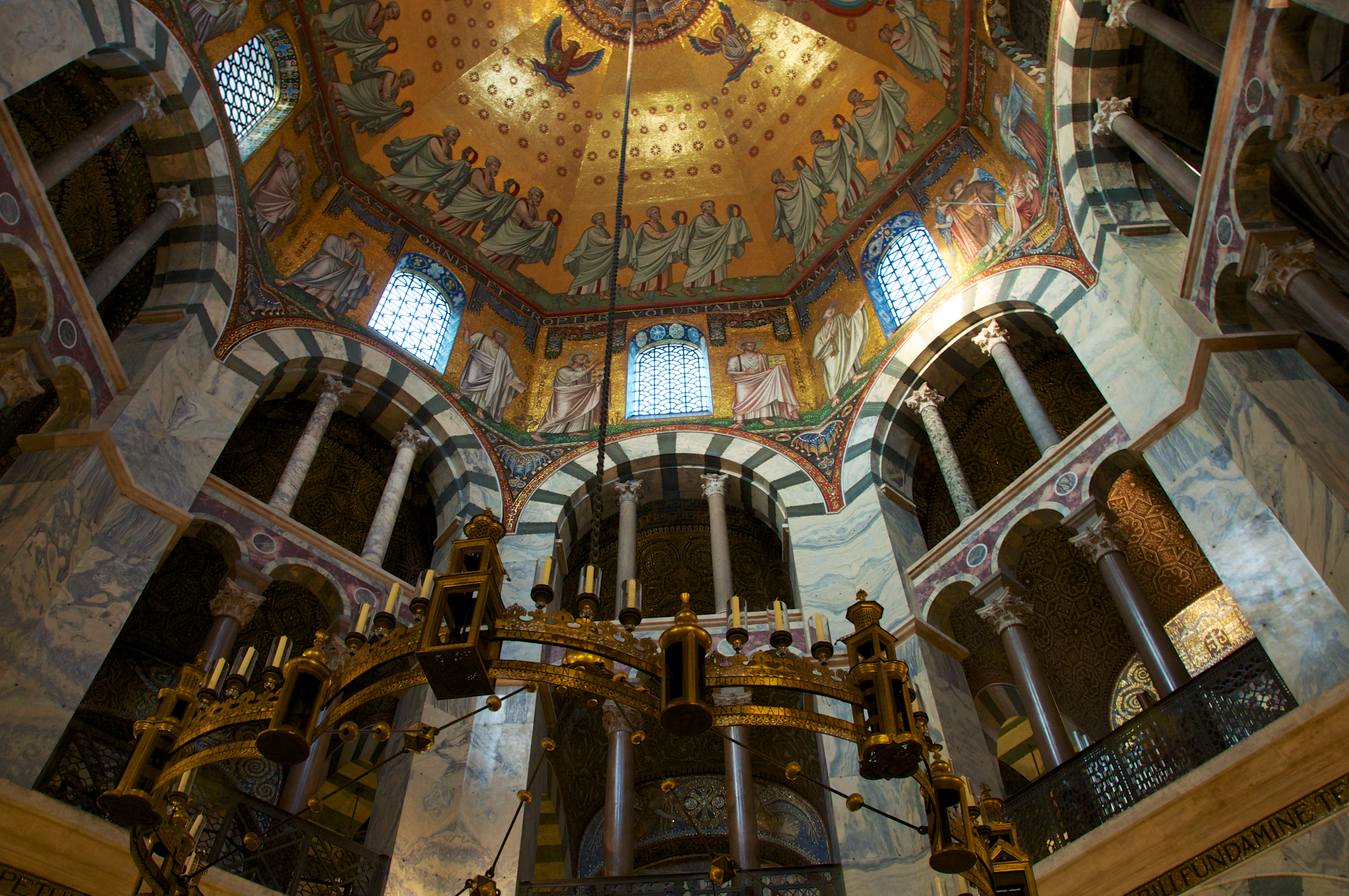
With the Bulgars now attacking Irene’s half of the empire and going deep into Thrace, Irene had already sent an army led by both Bardanes Torukos and Aetios to push them out and soon enough march deep into Bulgarian territory. While Irene was directing her armies in battle though from Constantinople, Justinian I’s ghost would appear again this time telling Irene that she is doing a pretty good job in directing military campaigns even if she had never set foot out of the palace, the same way Justinian I did back in the 6th century in annexing great amounts of lands in Italy, North Africa, and Spain to the empire without even leaving the palace. Justinian here though would give Irene some war advice which is to tell her troops to be ruthless in battle in killing enemy, strike fear into them, and never give in to their demands, but to also show mercy in conquering the people of Bulgaria especially since a lot of the subjects of the Bulgar khan were still Byzantines by blood therefore the Byzantine army would have to be seen as their liberators from the Bulgars and not foreign conquerors, and true enough this was the tactic Justinian used in his conquests which was in brutally killing his enemies but sparing the people who were still Romans to make them feel like they were in fact liberated. In addition, Justinianus says Irene would just direct her generals in battle from Constantinople but would not personally lead the armies herself unless there is an emergency that really needs her there in battle itself. Now in real history, in Nikephoros I’s campaign against the Bulgars in 811, he personally led the Byzantine army deep into Bulgarian territory even capturing their capital of Pliska and razing it to the ground, though also the Byzantine army here committed great atrocities including a massacre of the entire population of the city as a way to get back on the Bulgarians. In this story however, Irene’s Byzantine army would consist of the entire armies of the Themes of Macedonia and Thrace which previously defected from Nikephoros to Irene, as well the armies of the Opsikion, Optimates or the Tagmata, and Thracesian Themes, and the armies of the 5 Themes campaigning in the Bulgarian heartland itself would do as Irene told them and not massacre the locals but instead burn the farms to cut the Bulgar army’s food supply.

However, Charlemagne’s Frankish forces from the west would arrive too by land in 811 led by both his sons Charles the Younger and Louis, and they would be the ones carrying out the destruction of Pliska here as well as committing brutal atrocities there like massacring locals, similar to what they did before in fighting the Saxons in Northern Germany. In real history, Krum in 811 thought of concluding peace with Nikephoros I after Pliska was razed and his lands severely devastated by the Byzantines, but Nikephoros being intent on finishing the war and conquering Bulgaria did not agree to Krum’s terms as he knew he was close to winning, so instead he continued campaigning until Krum soon enough set a trap for him as Nikephoros’ army marched through the Varbitsa Pass in Bulgaria. Now in this story’s case, Krum after seeing his lands severely devastated by both the Byzantines and Franks would consider making peace with Irene and Charlemagne, but Nikephoros who here would be on Krum’s side would persuade Krum to continue fighting as he still wants to finish off Irene for good, but here rather than setting the trap for the Byzantines at the Varbitsa Pass, the Bulgars and Nikephoros’ army would instead be the ones marching through it. Charlemagne meanwhile despite his failing health would still go to the campaign all the way in Bulgaria, except he would no longer lead his armies in person and instead leave the job to his sons, while he would reunite with Irene back in Serdica which the Byzantines had just taken back and here, he and Irene would discuss their plan of how Bulgaria would be annexed to their empire. The sons of Charlemagne meanwhile would be the ones setting the trap for the Bulgars and Nikephoros at the pass using one side of it while the Byzantine forces of Aetios and Bardanes would ambush the Bulgars and their Byzantine allies from the other side.
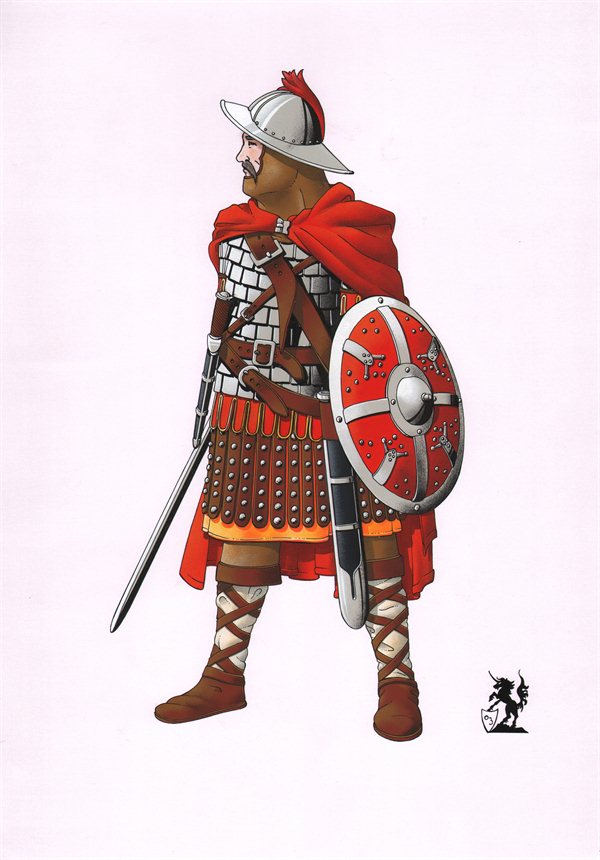
The combined forces of the Byzantines and Franks here would number up to 70,000 with the majority being Byzantines and here at the mountains pass, the combined forces would easily overwhelm the forces of Nikephoros and Krum, that their general Leo the Armenian would be killed here in the ambush, though Irene’s general Bardanes Tourkos in this story would get killed as well by the arrows and javelins of the Bulgars while leading a cavalry charge down the mountain pass. Like in real history, this battle would also take place on July 26 of 811, except here it would be in favor of the Byzantines and Franks as in real history, the Byzantines were caught by surprise and decimated in a single day and even Emperor Nikephoros I did not survive the battle, although his son and co-emperor Staurakios fled badly injured. In this story however, the Bulgars and Nikephoros’ forces would be outnumbered and surrounded by the Byzantines and Franks, though both Krum and Nikephoros would try to escape the pass using the opposite ends but before getting out, they would both be stabbed to death by spears, Nikephoros by the Byzantines and Krum by the Franks. The remaining Bulgars and Byzantines of Nikephoros would then surrender and be sent to Charlemagne’s western half of the empire as slaves while both Krum and Nikephoros would be decapitated and their skulls later made into drinking cups. Now back in real history, after Nikephoros was killed in this battle at the age of 61, his severed head was given to Krum who made it into his drinking cup which here was a Bulgarian tradition that the defeated enemy ruler’s skull was to be made their khan’s drinking cup. Here however, Charlemagne had learned of this Bulgarian custom and chose to adopt it and since his troops killed Krum, Krum’s skull would be used as his drinking cup and since the Byzantines killed Nikephoros, his skull would be made into Irene’s drinking cup.

Back in real history, Nikephoros’ son Staurakios who was 33 here immediately succeeded his father as emperor and was carried off to Adrianople which was the nearest city to the pass, although from the battle, his spinal cord was severely injured that it caused him to be paralyzed, therefore he could not properly rule as emperor that his advisors had to suggest that he had to abdicate which he finally did on October 2 of 811 passing the throne to his brother-in-law Michael I Rangabe who was married to Nikephoros’ daughter Prokopia, while Staurakios would retire to a monastery dying in January of 812 from his injuries. On the other hand, Nikephoros’ son Staurakios in real history had been married to Irene’s cousin Theophano since 807 and with Staurakios injured in 811, he even suggested that Theophano succeed him as sole empress the way her cousin Irene ruled, but this plan failed at the end and Michael I succeeded him and with the Bulgars victorious, they were still left as a major threat by 812. Here in this story though, both Staurakios and Michael Rangabe would live a quiet life the whole time while Nikephoros was challenging Irene, but following Nikephoros’ death here Irene would uncover the locations of both Nikephoros’ son Staurakios and son-in-law Michael, hunt them down, and have them blinded and sent to the Princes’ Islands as well to prevent another power struggle, while at the same time she would also have Krum’s son Omurtag who in real history would succeed his father in 814 blinded too, and the entire Bulgarian Empire too would be annexed into Irene and Charlemagne’s empire. Now, the Battle of Pliska in 811 wherein Nikephoros I in real history was killed was a major disaster for the Byzantines that would again prolong their dark ages and because of this, the Byzantines would continue suffering defeats to the Bulgars for the next few years, and this too would with Nikephoros I’s death would be the first time an emperor would die in battle against a foreign enemy ever since the death of Valens (r. 364-378) at the Battle of Adrianople in 378 by the Goths, if you remember from back in chapter I. In this story however, the Byzantine-Frankish victory here would be the first major success of their united empire, therefore showing that the union of both empires was a successful one as it led to a major victory and the annexation of the entire Bulgarian state, which would fall under Irene’s eastern half.
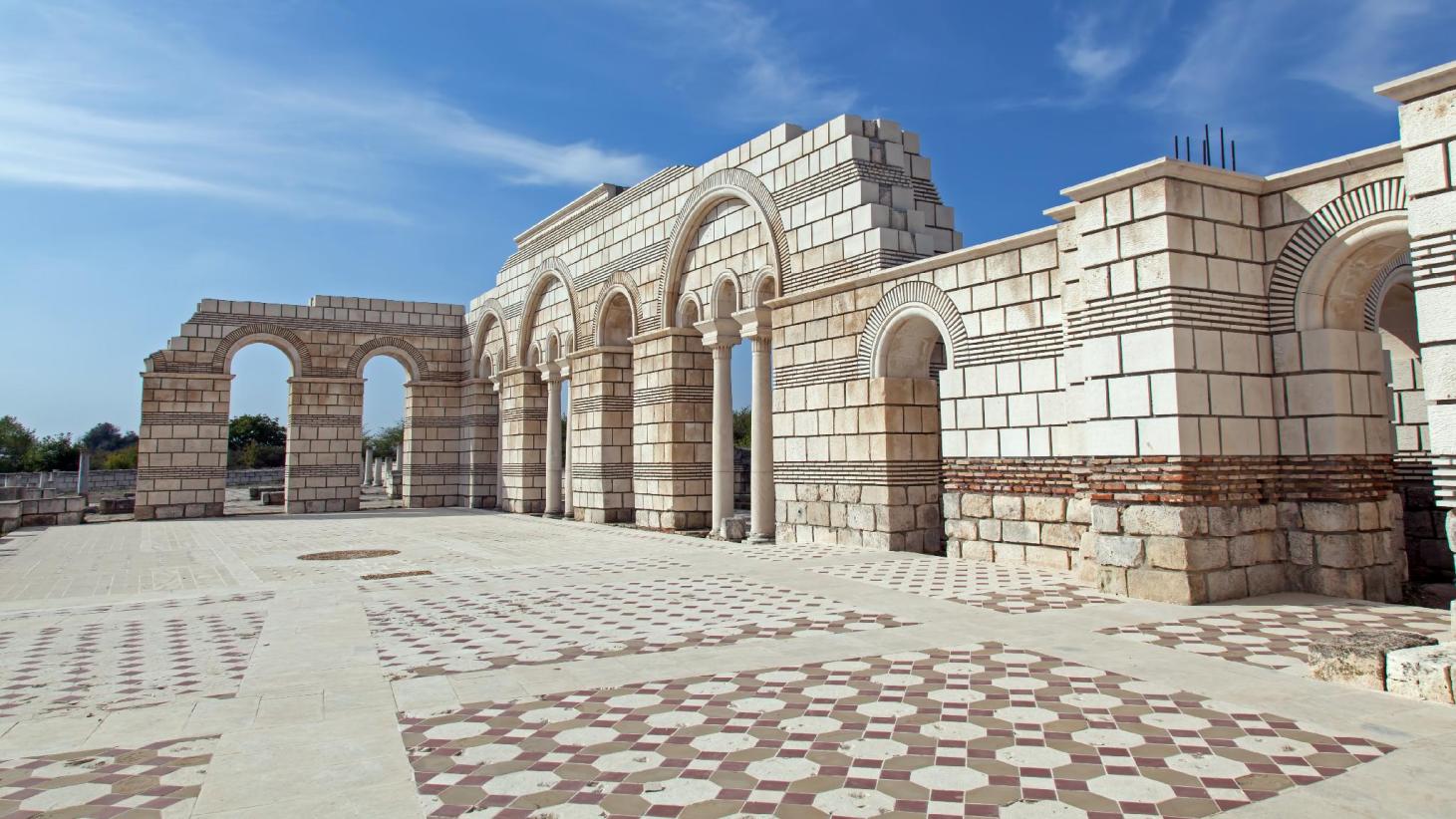


Aftermath and Conclusion

In this story, after the first victory of the united forces of the Franks and Byzantines over the Bulgars in 811, the entire Bulgarian state in the Balkans would be annexed to the eastern half of the Frankish-Roman Empire under Irene, and thus wiped off the map, and with this victory too, the Byzantine treasury would be filled up with all the spoils of war, thus Irene’s empire would be far from being bankrupt like how it was before she married Charlemagne. Now one of the other main advantages of Charlemagne marrying Irene and uniting their empires together was in making Byzantium rich again as before Irene’s marriage to Charlemagne back in 802 in this story, the Byzantine state was almost bankrupt while Charlemagne’s Carolingian Empire was much larger and richer, and now with both empires united, they would share each other’s incomes. On the other hand with both empires united, Charlemagne would agree to settle some people in his part of the empire including Franks, Saxons, Lombards, and Avars into the depopulated eastern half of Irene, and learning the strategy that Byzantine emperors of the past used in resettling people in the empire, Charlemagne would do the same in scattering his people in different parts of the eastern half and let them assimilate with the local population there whether Greek, Bulgar, Slavic, Armenian, or Syriac as a way to prevent unity among a single race which would later cause them to rebel. The local people in the eastern half such as the Greeks in Greece and Asia Minor, the Armenians in the east, or Slavs and Bulgars in the newly annexed Balkans would at first disapprove of Germanic people being forced to live side-by-side with them that it would in fact cause some conflicts between them, although in time these Germanic people settled in the eastern half would learn to assimilate, adopt Byzantine practices, learn Greek, even convert to Byzantine Orthodoxy, and intermarry with the locals. On the other hand, Charlemagne would also resettle the Byzantine locals in the eastern half into his western half also to balance the population there, but more importantly the Byzantine people Charlemagne would settle in his half especially in Aachen would be Byzantine scholars, scientists, and artists in order to further make Aachen as impressive of an imperial capital the way Constantinople was. Now back to the empire’s succession issue, like in real history Charlemagne’s eldest son Charles the Younger would die in December of 811 in Bavaria from a stroke at 39, here in this story after returning by land from the campaign in Bulgaria, therefore leaving the youngest son Louis as the only one left to succeed his father who here had returned back to Aachen later on in 811, though sometime before his son Charles died.
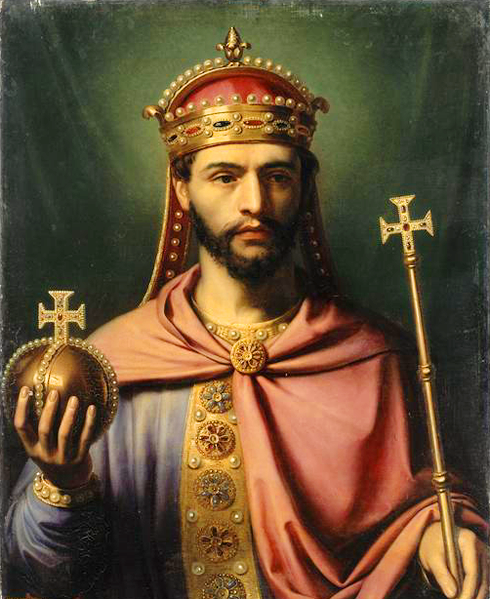
Louis in this story’s case would have stayed behind in Constantinople with Irene, as here he was now made his father’s co-emperor and assigned to the eastern half, and here in this story in early 812, Irene would have her younger and still single cousin Theophano marry Louis only to secure Louis’ claim on the eastern empire, as Louis though had already been married before to Ermengarde of Hesbaye and already had 3 sons with her. In real history though, Ermengarde was still alive by 812 and would only die in 818, but in this story’s case just for the sake of conveniency, Ermengarde would have already died in 812 when Louis married Theophano, who in real history in 812 had already retired together with her late husband the 2-month reigning emperor Staurakios. Irene then in this story’s case would not have much longer to live and later on in 812, she would die in Constantinople at the age of 60 from a heart attack but at least satisfied knowing that she was able to settle the complicated succession herself, and before she stopped breathing on her bed, Justinian I’s ghost would appear one more time telling her she had done her part in running the empire well, and then Justinian’s ghost would vanish right when Irene stopped breathing. As a Byzantine ruler, Irene here would be buried in the Church of the Holy Apostles in Constantinople right next to her son Constantine VI whose body was brought there from the Princes’ Islands and first husband Leo IV, and both Louis and Theophano would oversee her funeral, although Charlemagne being too old to travel himself would not attend, instead he would order that the whole city of Aachen should mourn their co-ruler’s death too.
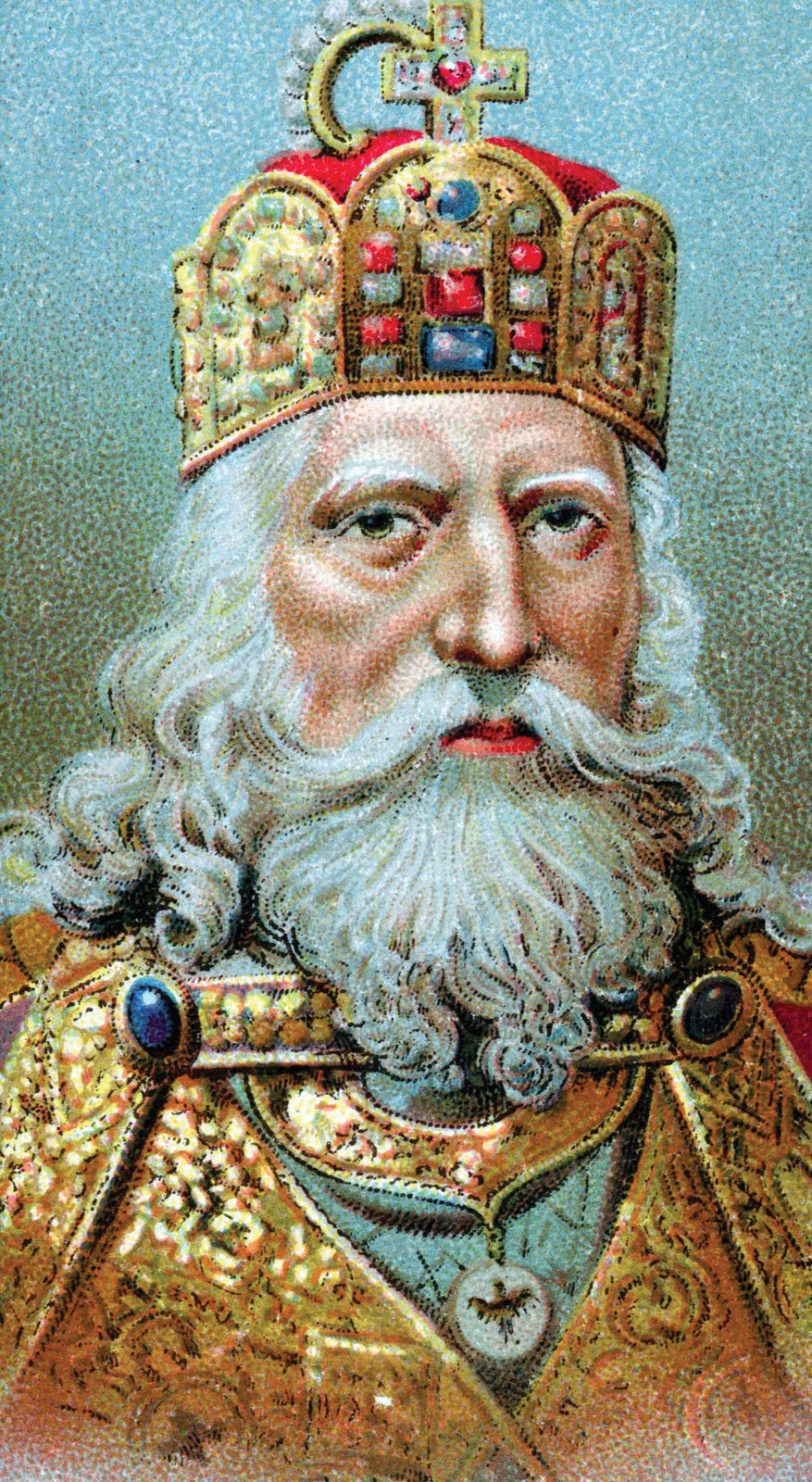
Louis meanwhile in 813 would return to Aachen alone just to be fully recognized by his father as his co-emperor like in real history, and again like in real history Charlemagne would die on January of 814 in Aachen at age 71 leaving Louis to inherit the entire unite empire, both east and west except for Northern Italy, which was still under his nephew Bernard as its king, who eventually would die in 818 like in real history. Now with Louis as the sole ruler of a global empire from the North Sea to Asia Minor, he would not be able to completely rule it alone, so he would make his wife Theophano rule the east from Constantinople and him ruling the west from Aachen, thus Theophano would be the second female ruler of Byzantium after her cousin Irene, and here begins the rule of the Carolingian-Sarantapechos Dynasty over the Frankish-Roman Super-Empire. The Byzantine-Frankish conquests here would resume and under Louis, the western Frankish armies would succeed more in conquering more lands in Spain from the Arab Umayyad Emirate and more lands in the north as well taking over some of Denmark and in the northeast going as far as parts of Poland conquering it from the Slavs. In the east meanwhile, the combined armies of the Byzantines and Franks would soon enough recover all of Asia Minor and Armenia which was lost to the Arabs and at the same time, more of the Balkans would be annexed to the eastern half to give in more land access from the east to west, and as the end result the united empire would be much larger, except some lands within the empire would remain independent such as the Papal States where Rome was as it was agreed that the pope should retain his autonomy over these lands, while the small Republic of Venice in Northeast Italy would still be independent although a vassal and large naval partner of the united Frankish-Roman Empire, the same way Brittany was and would always be.
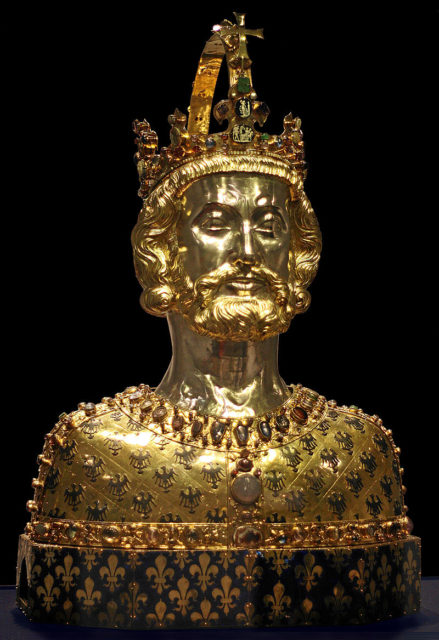
As for Louis, like in real history, here he would also be a devout Catholic Christian thus known as “Louis the Pious”, therefore never wanting to convert to Orthodoxy although he would respect it that the eastern half was to remain Orthodox as part of the agreement between Charlemagne and Irene, while he too would respect that his wife Theophano would remain Orthodox. Louis too like in real history here would be also paranoid and would purge his family members which were his father’s illegitimate children- his half-siblings- that he saw as a threat, although here like in real history, Louis already had 3 sons from his first wife which were Lothair, Pepin, and Louis II and in 815, Louis like in real history had already made his son Lothair govern Bavaria and Pepin govern Aquitaine, then in 817 like in real history too, Louis would proclaim his eldest son Lothair his co-emperor while at the same time making Pepin King of Aquitaine, and Louis II better known as “Louis the German” as King of Bavaria. In real history, the Frankish emperor Louis I’s wife Ermengarde had died in 818, therefore Louis married again to Judith of Bavaria in 819, although here this would not happen as he was already married to Theophano who was his co-ruler ruling the eastern half, and like in real history in 823 when Louis had a son with Judith named Charles, named after his grandfather, here Charles would also be born in 823 except in Constantinople being Louis’ son with Theophano who despite being already in her late 40s would still be able to give birth, and Charles here would be named as the heir to the eastern empire, thus continuing the Carolingian rule over Byzantium. Now in the 820s, the Byzantines in real history would experience major losses of territory to the Arabs, first being Crete which in 824 fell to exiled Arabs from the Umayyad Emirate of Spain and in 827, the new Arab Dynasty from North Africa known as the Aghlabids would begin their conquest of Byzantine Sicily. In this story however, with the Byzantines being a now stronger force with their Frankish allies combined would resist the Arab attacks in Crete and Sicily, and not only would their armies halt the Arab attacks there, they would also launch attacks into North Africa, thus the land where the old city of Carthage was (Tunisia), would be annexed to the empire’s western (Frankish) half too, and the Aghlabid state in North Africa would soon be wiped off the map as well and be annexed to the Frankish half of the empire. In the east meanwhile, the Byzantine forces in the 830s and 840s would continue their campaigns against the Arab Abbasid Caliphate and now no longer fighting on the defensive position like before, but instead on the offensive, though to be realistic, the Byzantines no matter how powerful they now are here with the combined forces of the Franks would not entirely destroy the Abbasid Caliphate, instead only the Levant (Syria and Palestine) would return to Byzantine hands, though with their losses the Abbasids would have to campaign elsewhere, therefore having to expand east into India and Central Asia instead of west into Byzantium.
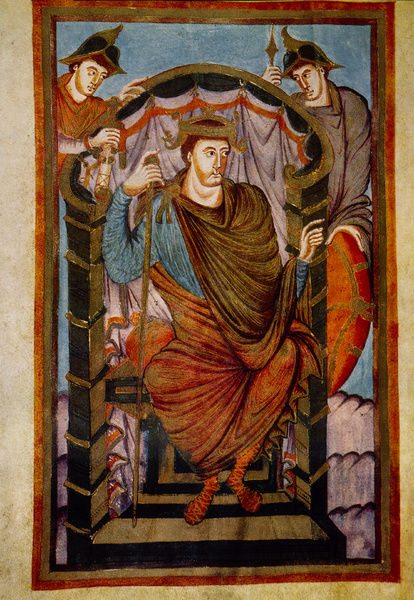
Now fast-forward to 840, and here Louis like in real history would die at around 62 in what would be in Germany in the western half of the empire, and here his eldest son Lothair I succeeded him as the Frankish emperor, but in this story’s case with Byzantium as part of their empire with them, Charles II who was Louis’ son with Theophano would immediately succeed as the ruler of the eastern half with Lothair as the western half’s ruler as here like in real history, Louis’ middle son Pepin had already died in 838, though Louis II was still alive. In reality, Lothair I in 843 split the Frankish Empire with his 2 other surviving brothers Louis II and Charles II with the Treaty of Verdun thus splitting Charlemagne’s Frankish Empire into 3 leaving Lothair ruling the middle part known as Middle Frankia as its king based in Aachen, while Louis II had East Frankia which would be Germany, and Charles II left with West Frankia which would later be France. In 855, with Lothair’s death, the realm would further be split among his 3 sons with the Treaty of Prum thus creating the Kingdom of Lotharingia based in Aachen which would be under his son Lothair II while Lothair I’s other son Louis would inherit Italy as his kingdom, and Lothair I’s other son Charles would inherit Provence which would be his kingdom, thus Charlemagne’s Frankish Empire had been split into 5 parts as Lothair I’s other brothers Louis II ruling East Frankia and Charles II ruling West Frankia were still alive.

In this story however, in 843 Lothair I would only split his realm in half with him ruling West and Middle Frankia from Aachen and his brother Louis II ruling East Frankia as their younger half-brother Charles II had already become the eastern emperor in Constantinople. Now the rest of the story for the Frankish Empire gets confusing after 855, so instead this story would end before 855 with the united Frankish-Roman Empire under Lothair I, Louis II, and Charles II, and here let’s just say that the situation would not be that the Byzantine Empire entirely became absorbed to the Frankish Empire both politically and culturally, rather both cultures would eventually fuse with each other, though it would be quite too difficult to explain it all here, so instead this story will just end in a rather happy but confusing way. What would happen as well is that the Franks in the west would soon enough face the growing raids of the Vikings or Norsemen in the north who were in search of land to settle and farm in escaping their cold and inhospitable lands in Scandinavia therefore making raids into Europe whereas they would arrive and settle into what is now Russia forming what would be the Kievan Rus’ Empire in 862 which would later pose a threat to Byzantium. The big question here though is that will the united Frankish-Roman Empire survive in the next decades given the confusing situation of the succession system especially with the successors always having to divide their lands among each other, and this story will no longer go there, so it is best that you as viewers should decide how this story will go in the next half of the 9th century.
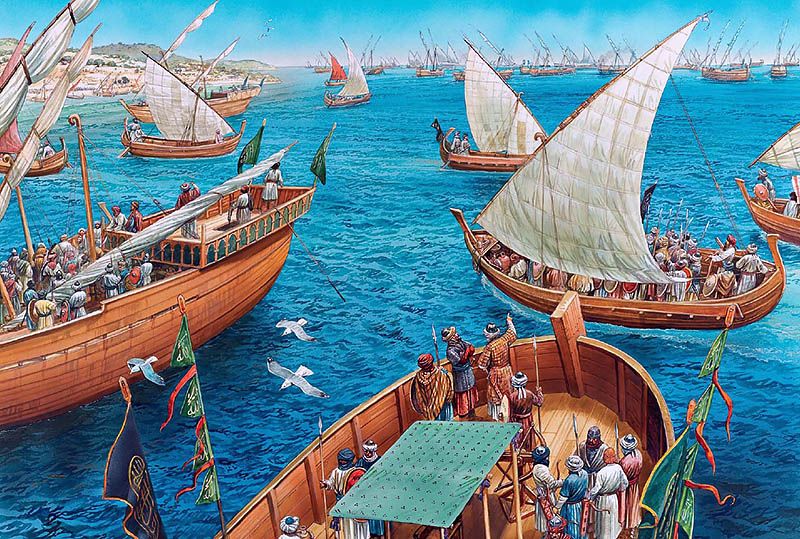


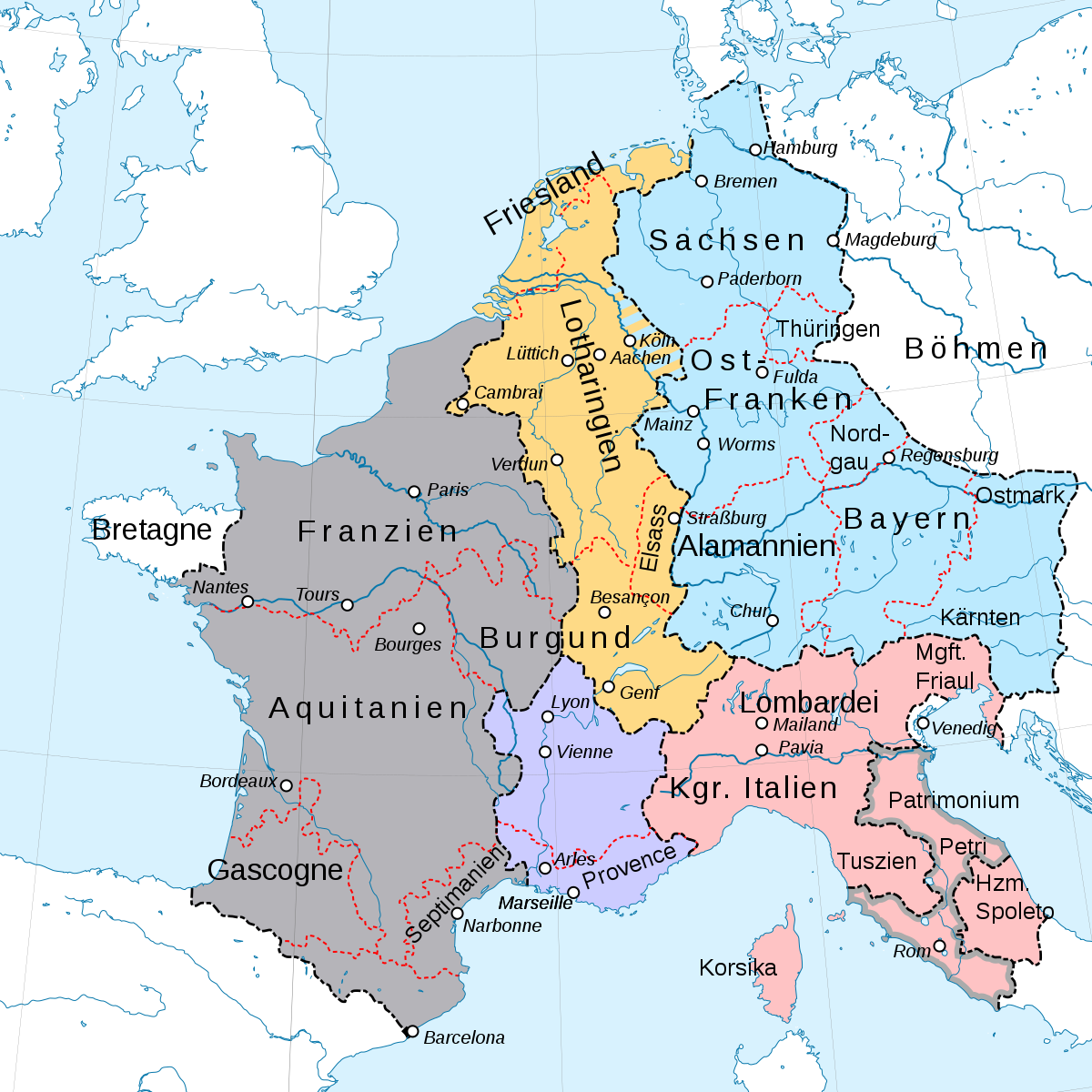
Watch this to learn more about the dissolution of Charlemagne’s Empire (Kings and Generals).
Now in the Byzantine Empire in real history, following their defeat to the Bulgars in 811 and the abdication of Nikephoros I’s son Staurakios, Michael I Rangabe who was Nikephoros I’s son-in-law inherited the empire but had turned out to be a weak ruler especially when the empire was in great danger with Krum still on the offensive against them. Michael I though acknowledged Charlemagne as emperor, though only as the Greek “Basileus” and not as “Roman emperor” but Michael I’s biggest problem was the Bulgars in which he saw that the only solution was to fight on the offensive against Krum which he did, although Michael I was hesitant about it. The Byzantine forces and the Bulgars eventually clashed at the Battle of Versinikia in 813 wherein the army of the Anatolic Theme under the same Leo the Armenian in this story having no loyalty to Michael I deserted, leaving Krum to be victorious again.

Michael I later in 813 decided to abdicate which everyone agreed to as no one saw him as a fit ruler anyway, therefore he passed the throne to the general Leo the Armenian and retired to become a monk in which he would live the rest of his life as all the way till his death in 844. Though Leo V the Armenian was the new emperor, Krum had already gone as far as the walls of Constantinople thus ravaging the Thracian countryside, and wanting to put an end to Krum’s terrorizing of Thrace, Leo V attempted to have Krum assassinated except Krum escaped it, and out of revenge continued massacring the Byzantine people in Thrace. Leo V however struck back by invading Bulgar lands and carrying out massacres on the Bulgars, and just before Krum could launch another attack on Constantinople again, he suffered a stroke and died leaving the Bulgar state to his son Omurtag who then decided to end the conflict with the Byzantines as he feared Leo V would make an alliance with Charlemagne’s son Louis who just succeeded his father in 814.
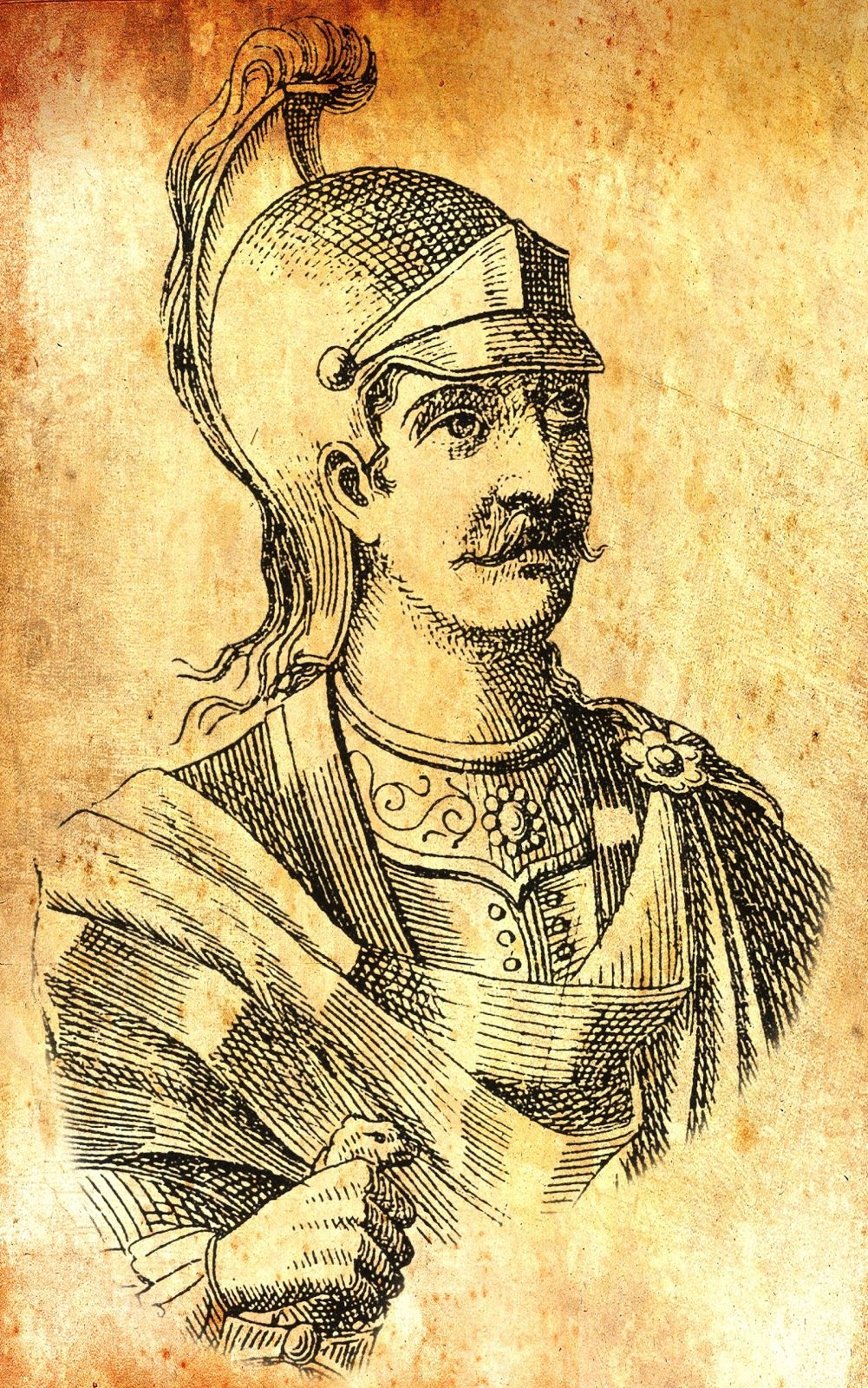
Leo V now as an Iconoclast had blamed all their defeats to the Bulgars on the restoration of icons by Irene, and so in 815 Leo V after firing the Iconodule patriarch Nikephoros I and appointing new Iconoclast scholars to be in charge of the Church, he once again resumed Iconoclasm which was more so as a way to please his supporters who were the now old veteran soldiers still loyal to the late Constantine V, that in fact these soldiers even wanted Constantine V resurrected to turn their empire’s problems around. Leo V’s Iconoclast policies though were not as extreme as his predecessors Leo III and Constantine V, as here Iconodules were no longer persecuted and monasteries were no longer raided for icons, instead the new order was that icons were only to not be displayed in public. Leo V had turned out to rule successfully except that in 820, he fell out with his friend and general Michael the Amorian who Leo thought was having an affair with his wife, and so Leo punished Michael by imprisoning him in the furnace of the palace and tied to a large ape to see whether Michael would die from dehydration or be hacked to death by the ape, although the execution was delayed as it was Christmas giving Michael enough time to have his conspirators dress up as choir members who then stabbed Leo V to death at the Christmas Eve Mass in the Hagia Sophia leaving no heir to succeed him.

The next day, Michael was dragged out of the furnace and immediately crowned with the chains still on his feet to prevent a succession crisis, and here begins the age of stability for the Byzantine Empire under the Amorian Dynasty beginning with Michael II. However, Michael II too was an Iconoclast, though not an extreme one and since his first wife died, Michael II married the same Euphrosyne who was the daughter of Constantine VI and granddaughter of Irene, as a way to legitimize himself as emperor as Michael II only began out as a common soldier. Michael II in his reign although faced many difficulties such as the rebellion of the general Thomas the Slav which led to a civil war as Thomas proclaimed himself emperor even claiming to be Constantine VI though not knowing Constantine VI had been blinded by Irene and had died in 805, and this civil war would go on for 2 years (821-823) resulting in Thomas defeated and executed in 823. Though Michael II won the civil war, his army was weakened thus unable to stop the exiled Arabs from Spain from taking over Crete in 824 which then led to the creation of the Emirate of Crete as mentioned earlier, and in 827 the Aghlabid Arabs of North Africa began their conquest of Sicily. Michael II then died in 829 at least leaving Byzantium more stable than it was when Leo V came to power in 813, and here Michael II at least established a dynasty being succeeded by his son Theophilos, who too was an Iconoclast.

Theophilos now as emperor spent his entire reign in war against the Arab Abbasid Caliphate in the east and again with the Bulgars in the north in which he had mixed results, though in his reign, the Byzantine army and empire itself was much more stable again. One of Theophilos’ great achievements was the creation of the Beacons System which was made up of several torches built across Asia Minor from the Taurus Mountains to Constantinople to send signals in case an Arab army was attacking, therefore a Theme’s army could easily come to reinforce the other Theme under attack. Theophilos suddenly died in 842 with his son Michael III (r. 842-867) who being only a year old when becoming emperor was under the regency of his mother Theodora, the wife of Theophilos who like Irene was also a major supporter of icons. Here history would repeat itself as just how Irene held a council in 787 to put an end to Iconoclasm when being the regent for her young son Constantine VI, Theodora here as the regent of her young son Michael III held a Church Council in Constantinople in 843 that finally put an end to Iconoclasm for good. Although Theodora did not depose Michael III the way Irene did to Constantine VI in 797, instead Michael III in 857 when grown up got rid of his mother’s regency and ruled alone, and although he was an irresponsible ruler, he at least had good administrators running the empire for him.

It was in Michael III’s reign, following the end of Iconoclasm wherein Byzantine art and culture would have a Renaissance as after all these years wherein art became plain and simple, here it was revived to more extravagant levels to make up for the years it was lost under the Iconoclasts. Here in Michael III’s reign as well would begin the conversion of the Slavs north of the Byzantines in Eastern Europe into Orthodox Christianity by two Byzantine missionaries St. Cyril (originally Constantine) and St. Methodius beginning 863, and in 864 the Bulgarian ruler Boris I, being an ally of the Byzantines would be baptized as a Christian, thus converting the Bulgarian Empire to Orthodox Christianity as well. Now in the second half of the 9th century, Europe would have 3 major empires which was the Frankish Empire, Bulgarian Empire, and Byzantine Empire which here had come out of the Dark Ages and steadily entered its second Golden Age (first one being the 6th century).


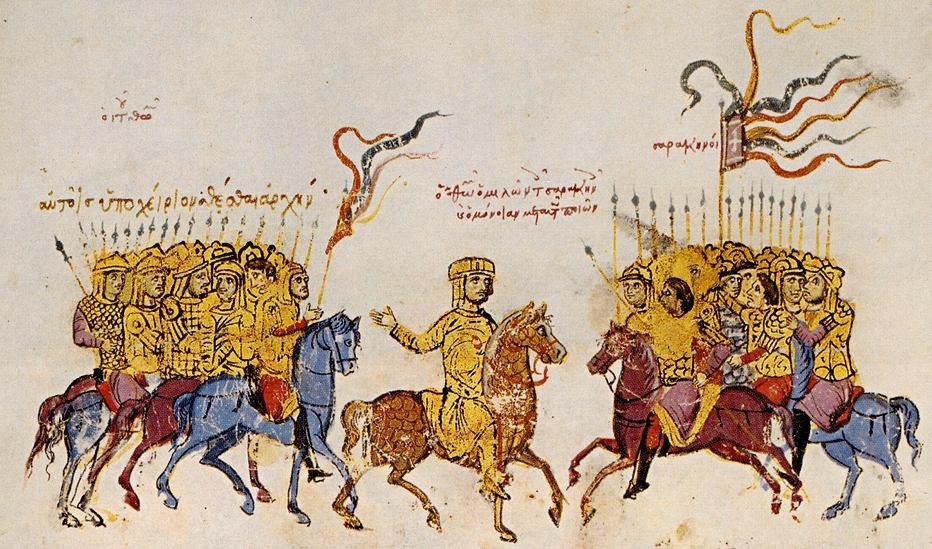
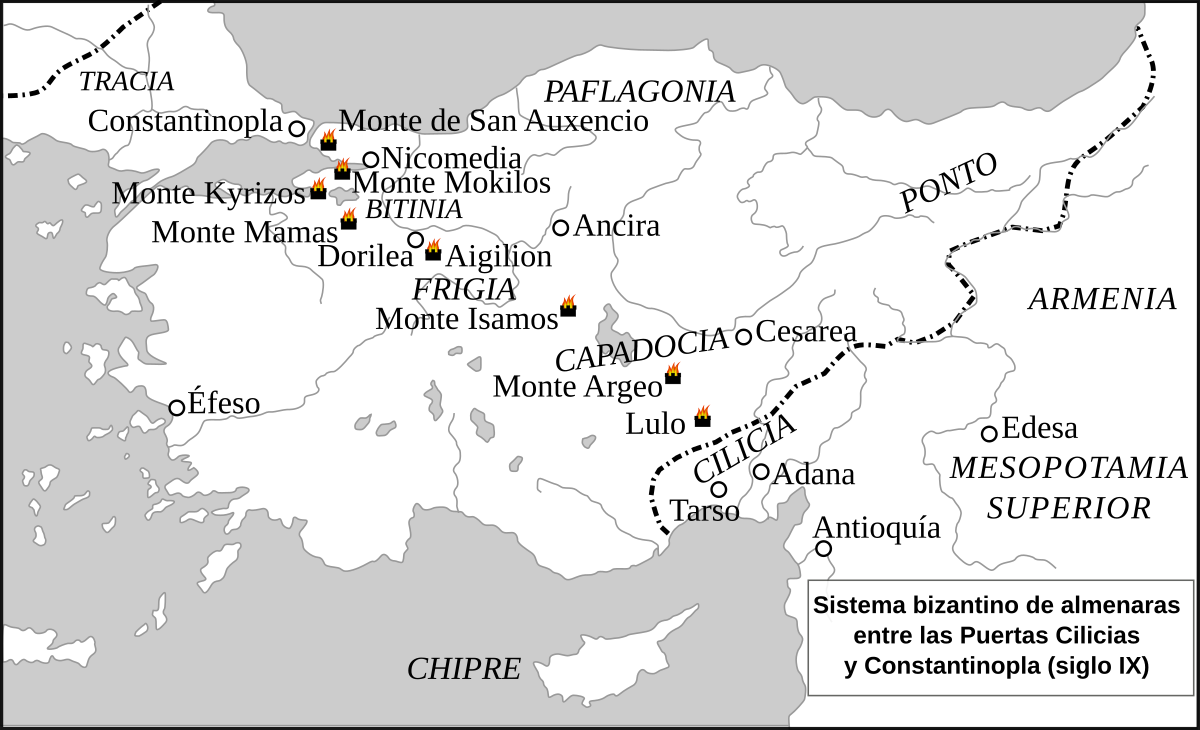

Watch this to learn more about the Battle of Versinikia, 813 (Kings and Generals).
Our story will now end here with the closing of the dystopian like Byzantine Dark Ages which had seen Byzantium be under constant attacks for 2 full centuries by the Arabs coming from the south and east and then from the Bulgars in the north, a pointless war against religious icons that was thought to save the empire but at the end only made things worse especially in their relations with Western Europe, and of course the humiliation of their empire’s pride as at one point in the 6th century they were the masters of the Mediterranean and then came the 7th century when in an instant, the Byzantines lost more than half of their empire to the Arabs coming out of nowhere. At first, Byzantium in the 7th century beginning with the reign of Constans II (641-668) thought that they could still one day reverse their defeats and gain back their lands but then came 2 sieges of Constantinople by the Arabs, first from 674-678 and again from 717-718 and from here onwards things would change. From the 7th century onwards to the 9th, the Byzantines were then forced to fight on the defensive against the Arabs that by the 8th century it became the new world order for the Byzantine Empire, that they existed to fight on the defensive even when winning victories. Now at the beginning of the 9th century where this story took place, the Byzantine Empire despite having been stabilized was weak economically and politically and having a woman as a ruler which was Irene was a big question for them especially since she was not even part of the dynasty but had only married into it. Now, I would see that Irene had considered marrying Charlemagne for various reasons especially since he had a much a larger and younger empire which was much wealthier with a larger army than Irene’s Byzantium, and this could be as I said in the introduction of this story the magic pill that could save the deteriorating Byzantine Empire. Now the marriage between Irene and Charlemagne could have benefited both empires a lot, though it would benefit Byzantium more as it could save it economically and in helping them reverse all their setbacks while for Charlemagne’s Frankish Empire, uniting with Byzantium would make them more cultured not only in art but in governing. However, the union between both empires had a lot of down sides as well, as for one it could ruin the proud identity of the Byzantines as Orthodox Christians as the empire of Charlemagne being Catholic and under the guidance of the pope would have to be the official religion of the empire as Charlemagne’s half was the more powerful one, thus this would not be received well by the proud Orthodox Byzantines, although since the religious icons had been restored under Irene, the relationship between Eastern and Western Churches would be much friendlier, which is what I chose as the outcome of the marriage between Irene and Charlemagne in this story. Another down side with their marriage is that things will only become confusing especially in the governing system of the empire as this could mean that the western Frankish half would have to adopt the Theme System or that Irene’s half would have to adopt the Frankish governing system, and even more confusing would be the cultural impact on the people of the united halves as this union could either mean that the Byzantines would have to integrate into the Germanic culture and customs of the Franks or vice-versa, therefore I could not decide how this union would fully turn out, so I chose to not go any further anymore beyond the mid 9th century. Now overall, I would say that the marriage between Charlemagne and Irene was not so much a magic pill that could turn all the setbacks for the Byzantines around, though in the short-term it could as the Byzantines were threatened by the Bulgars in the north, and having a union with the massive Frankish Empire could definitely help the Byzantines crush the immediate threat of Krum’s Bulgarian Empire but in the long term, the union will not be very much that magic pill as for one obviously, the Byzantines and the Franks were from two different worlds as the Byzantines despite being the older and weaker empire was the more sophisticated and cultured one while the Franks were a new barbarian empire that had just learned to adapt to the sophisticated culture of the Greeks and Romans, therefore it would actually be hard to see them act as one empire except if they had a common enemy. Now for me, it was overall quite a difficult job in creating this story especially with the outcome of Irene and Charlemagne’s supposed marriage and writing about it, especially since the situation that would soon enough follow this crucial event was certainly something very confusing especially on how both halves of the united empire would be run especially given the confusing tradition of the Franks when it came to inheritance and diving their realm among their successors, and because of this I would see that this union would not really work out well and would not last a full century, therefore sometime after 855, this united empire would disintegrate leaving the east independent, though still under the rule of the Carolingians. On the other hand, I am also not very knowledgeable about the Franks and their history, society, and culture the way I am with Byzantium but when writing this, it also made me somewhat interested in the story of the Franks too. On the other hand, this what if scenario of Charlemagne and Irene marrying is a very popular one in Byzantine Alternate History and when writing this story, it was fun especially in the more insider situations and stories such as Irene and her personal life especially in her personality and how she dresses, as well as in portraying Charlemagne in a different light as rather than showing him here as the legendary “Father of Europe”, it was quite fun to show a more human side to him as a tired old man, and of course writing certain events like the grand imperial wedding and this fictional plot hatched in it of the exploding grenade. This story too despite being a bit too confusing was also something rather experimental in blending genres together as it included Byzantine politics and religious debates, the extravagance of the Byzantine court, medieval politics and wars, and family drama all mixed up with some comedy, romance, action, suspense, treachery, and a bit of a dystopian feeling. Another thing I enjoyed most in writing this story was putting more attention on Irene rather than on the more famous Charlemagne, as I would say Irene is overall an underrated historical figure who is somewhat fun to play around with when writing a fan fiction as she had a very complex personality, was beautiful with a perfect body, was courageous and decisive, ruthless but still caring, intelligent and sophisticated, though not very skilled in running an empire and securing loyalty, therefore she was far from perfect which makes her an even more interesting character to build a story on which I just did here, and I should definitely thank my friend Justinianus for building up Irene’s character more in this story and adding a bit of some entertaining twists such as the return of Justinian the Great from chapter III here as a ghost. Now as the centuries would go by, Charlemagne would be forever remembered as one of the greatest figures of medieval Europe that actually managed to unite almost all of Europe into one empire that ambitious and ruthless leaders later on like Napoleon Bonaparte in the 19th century and Adolf Hitler in the 20th century would follow the example of Charlemagne in putting Europe into one empire, but little did these future leaders know Charlemagne would have actually succeeded more in making a complete European superpower if he was to marry Irene and absorb the Byzantine Empire. Of course, this marriage never happened and the empires never united, but not so long after Charlemagne died in 814, his empire never really lasted as a unified one but rather an empire divided among his successors, and for this reason in the empire being divided, this would soon enough lead to the foundation of the medieval Kingdom of France and in 962 the actual Holy Roman Empire beginning with Otto I who was the first Holy Roman emperor, thus laying the foundations for Germany. As for Byzantium in reality, this marriage would later turn out to be something not so necessary as in the next half of the 9th century, after Iconoclasm would be finished off for good, the Byzantine Empire would get over its Dark Ages and enter a new age of a Renaissance in art, culture, and military power that the whole standard of living for the Byzantines of living in fear seeing the end of their empire was imminent would be no more, instead the Byzantines by the end of the 9th century would finally turn the tide of war against the Arabs to the offensive.
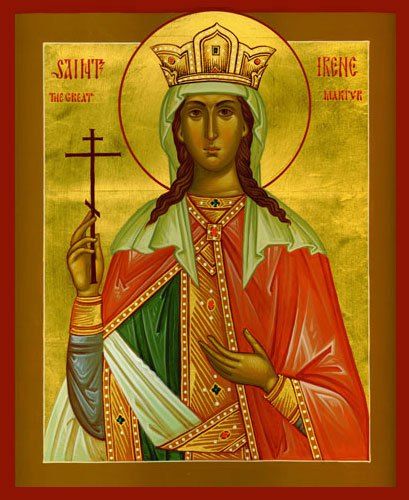
Now Irene would then have the legacy of being Byzantium’s first female ruler making that a possibility, and more importantly for putting an end to the controversy of Iconoclasm which would indirectly lay the foundations for the empire’s new Golden Age, and for this reason no matter how flawed Irene was, she would become a saint in the Greek Orthodox Church. Of course, the Byzantines despite coming out of its Dark Ages would still go through some hard times which includes their Cold War situation with the west still continuing but by the end of the 9th century, Byzantium would be one of the 3 most powerful empires in Europe next to the Carolingian Frankish Empire and Bulgarian Empire. The Byzantine Golden Age wherein all its setbacks and humiliations for the past 3 centuries would be reversed would be another chapter in the 1,100-year history of Byzantium and therefore a story for another time. The next chapter of this Byzantine Alternate History series will explore the rise and peak of the Byzantine Golden Age from the late 9th to early 10th centuries followed by the glorious 10th century of Byzantium under the powerful military and palace emperors of the Macedonian Dynasty all put in one story, but with only one significant historical character of this period eliminated to see how history would turn out to be, without this one person. Well, this is all for chapter VI of Byzantine Alternate History- the midpoint of this series and therefore a very special alternate history story in this series- this is Powee Celdran, the Byzantine Time Traveller… thank you for your time!
Next Story: Byzantine Alternate History Chapter VII- 10th Century






2 thoughts on “Byzantine Alternate History Chapter VI- Irene and Charlemagne, the Wedding of the Century”